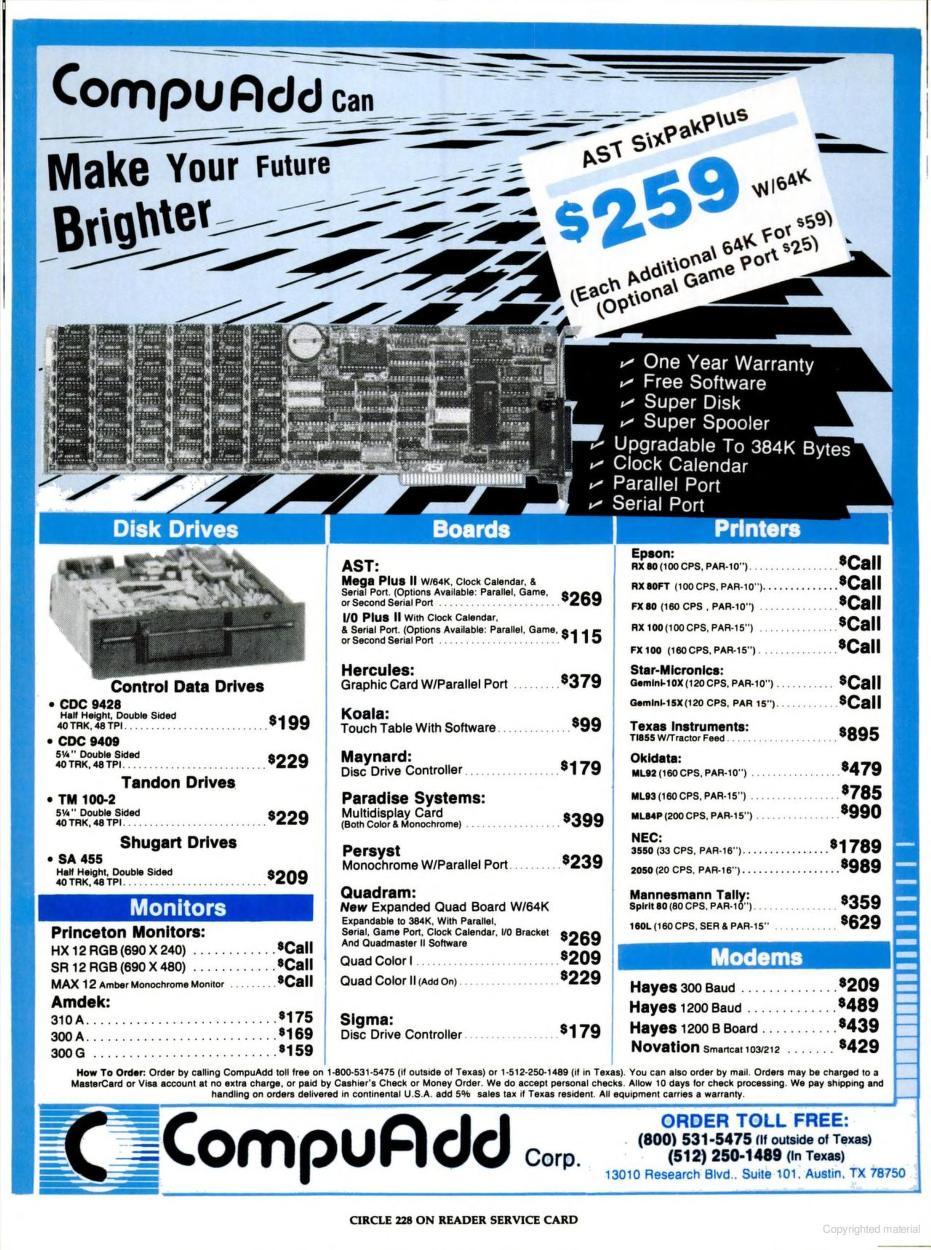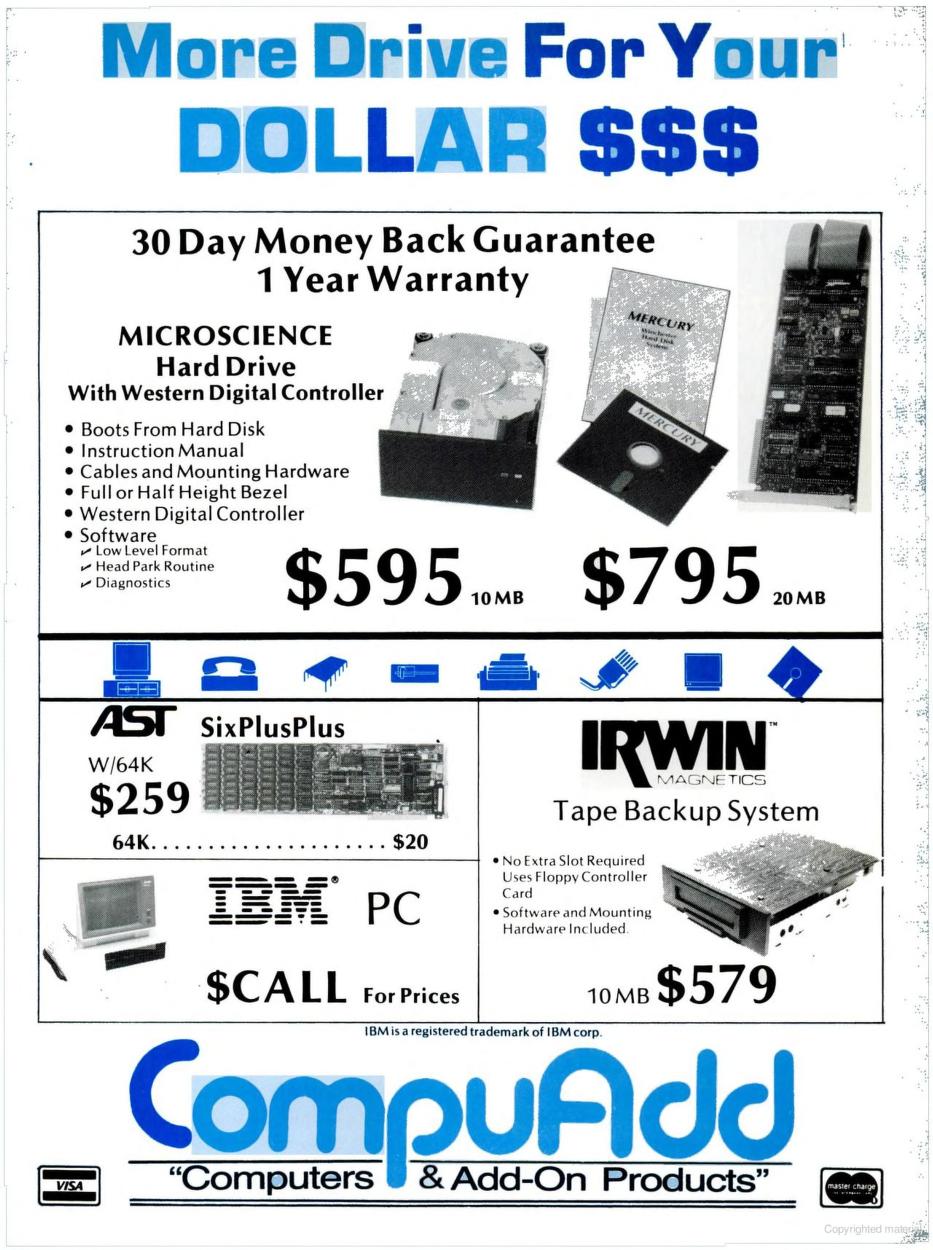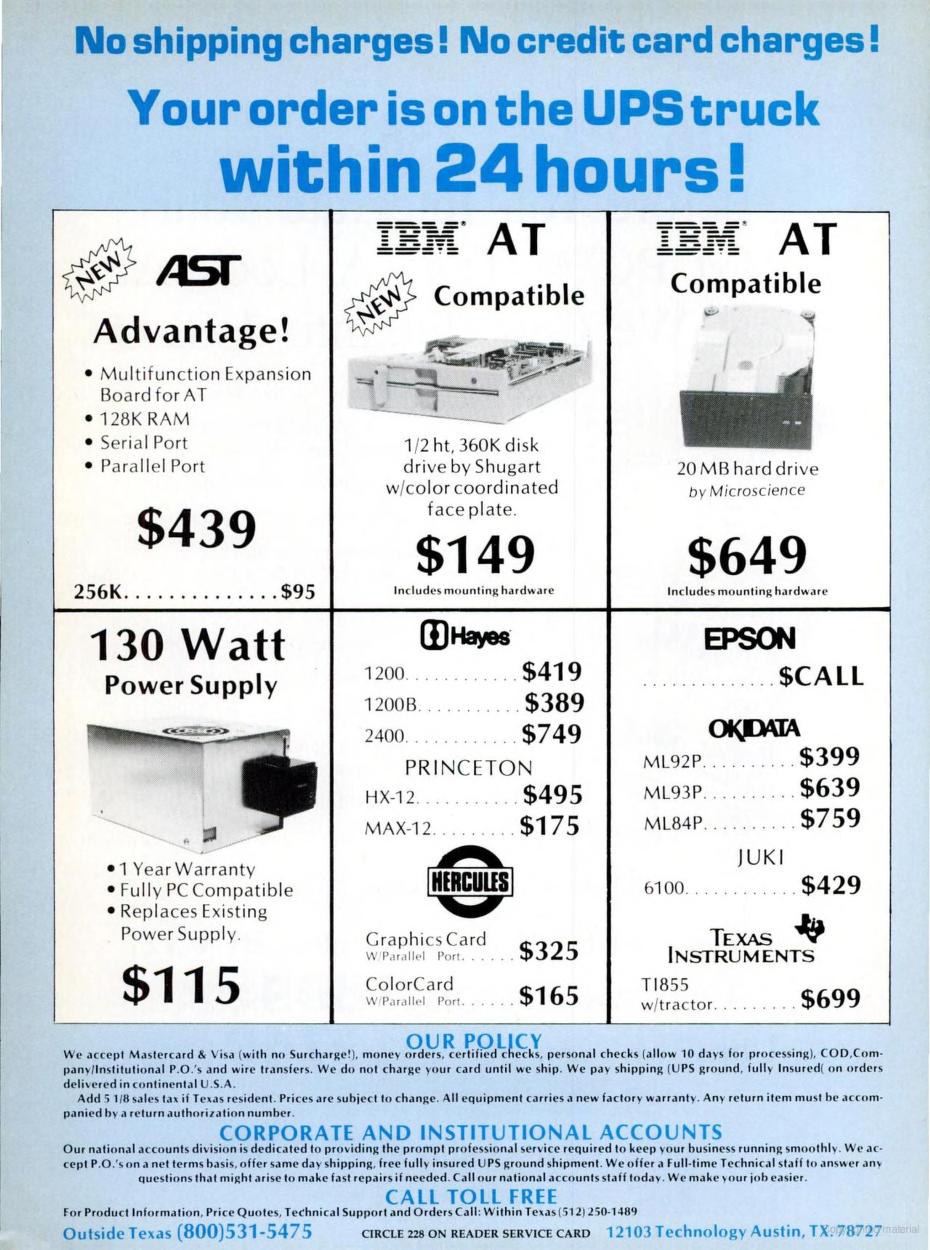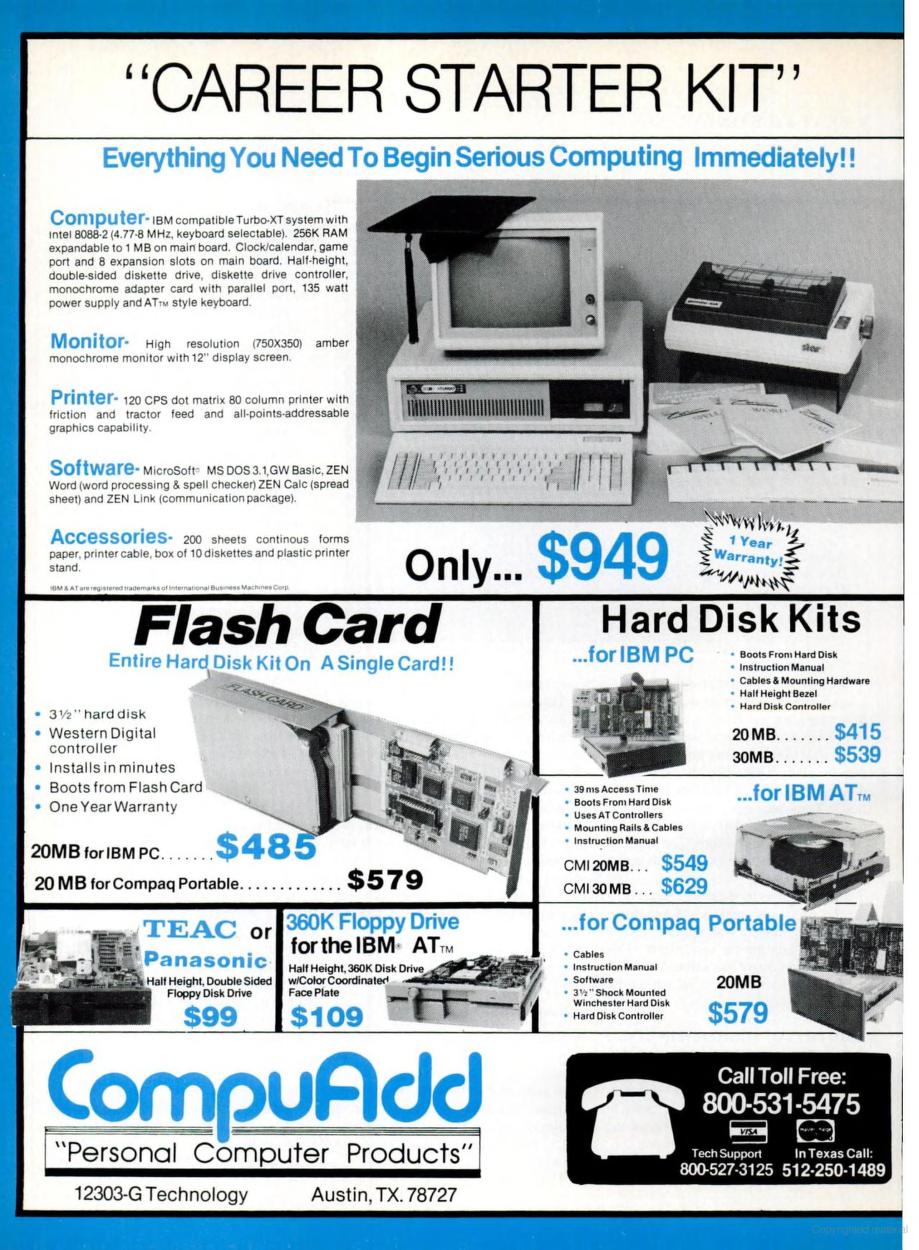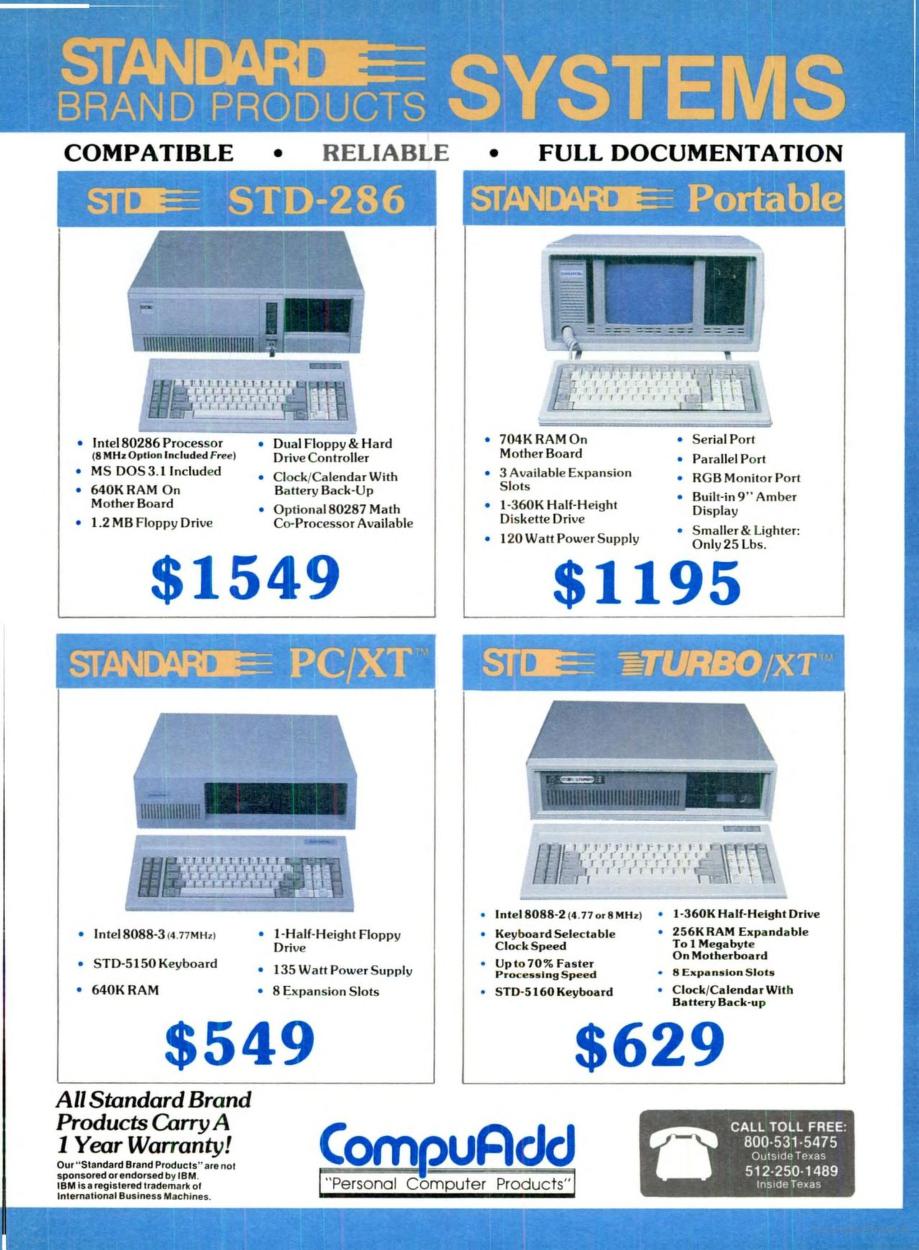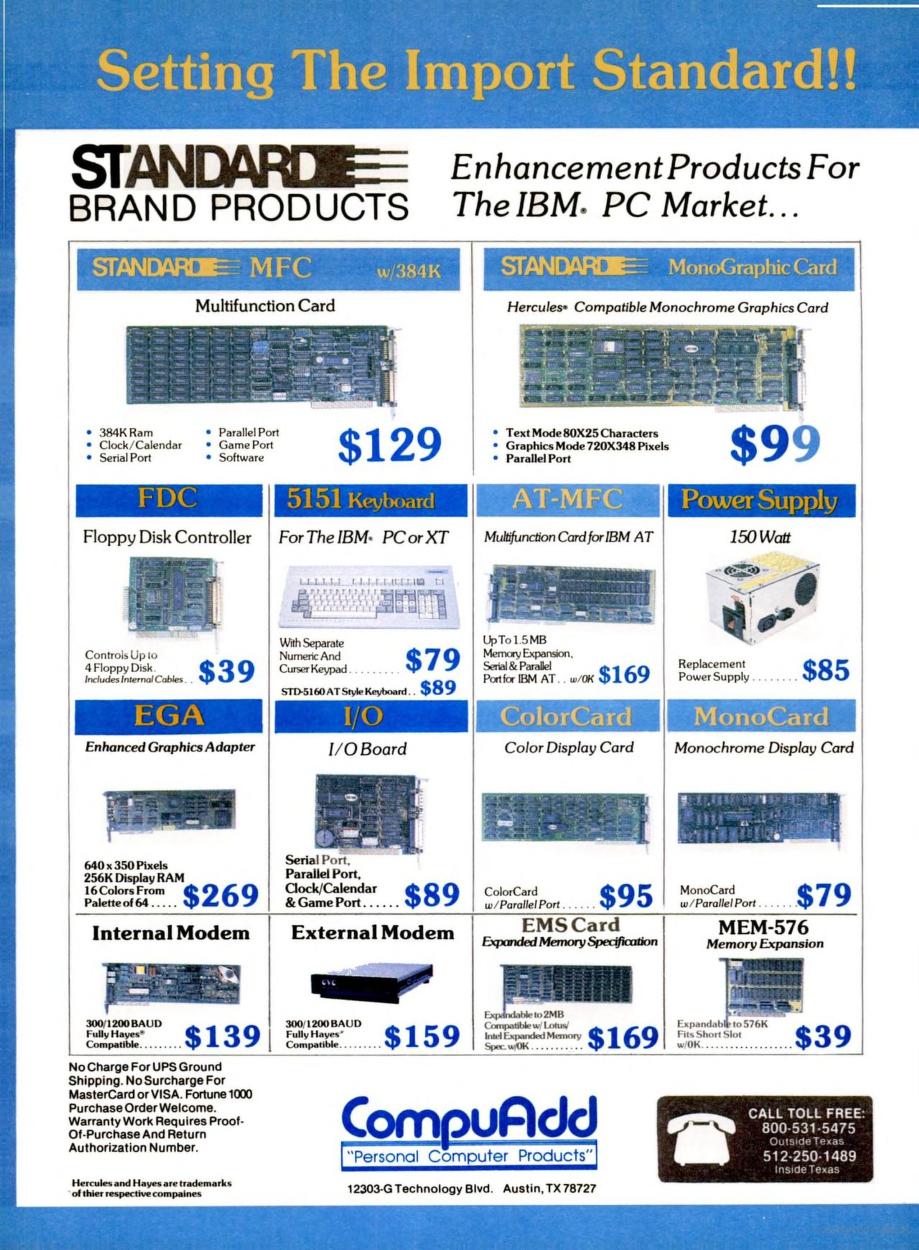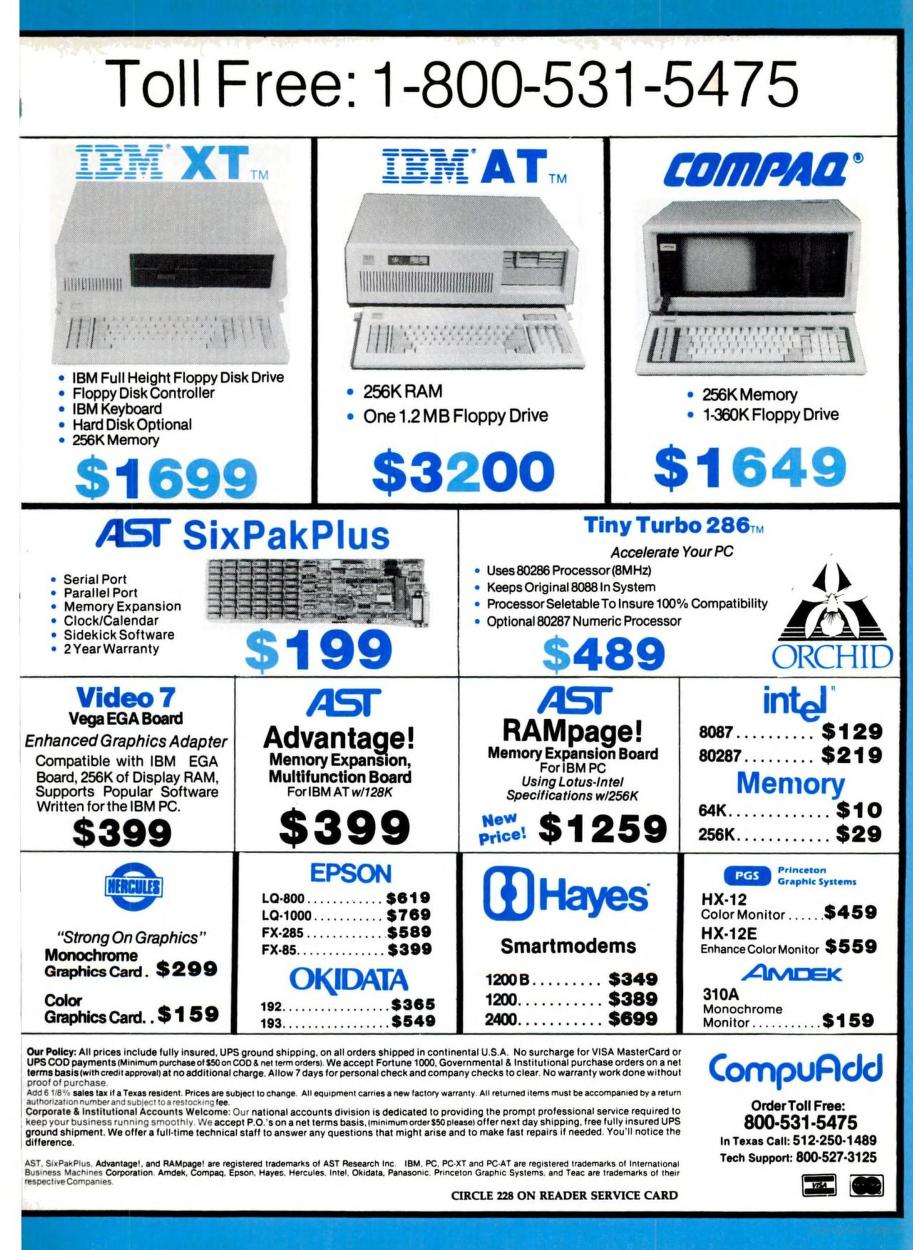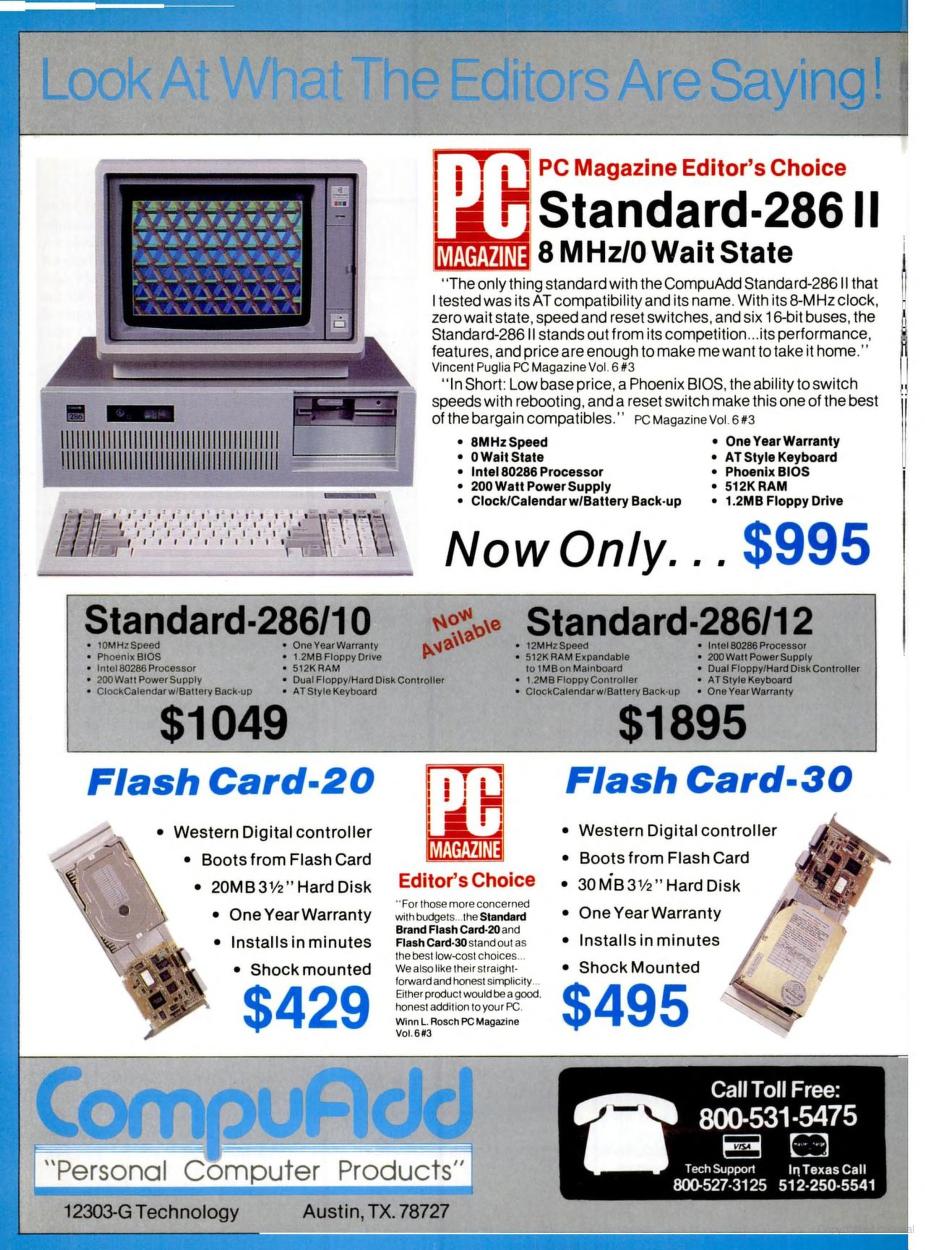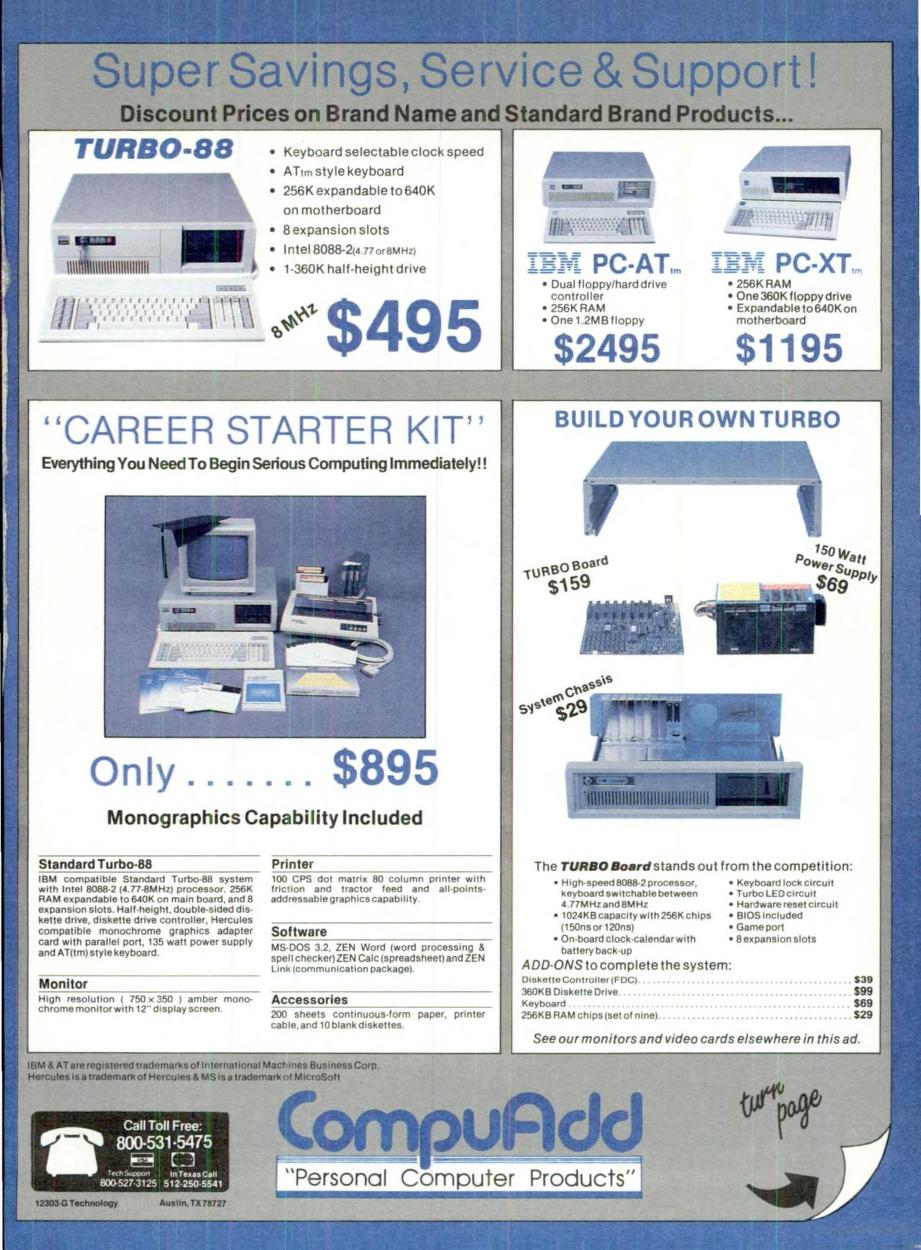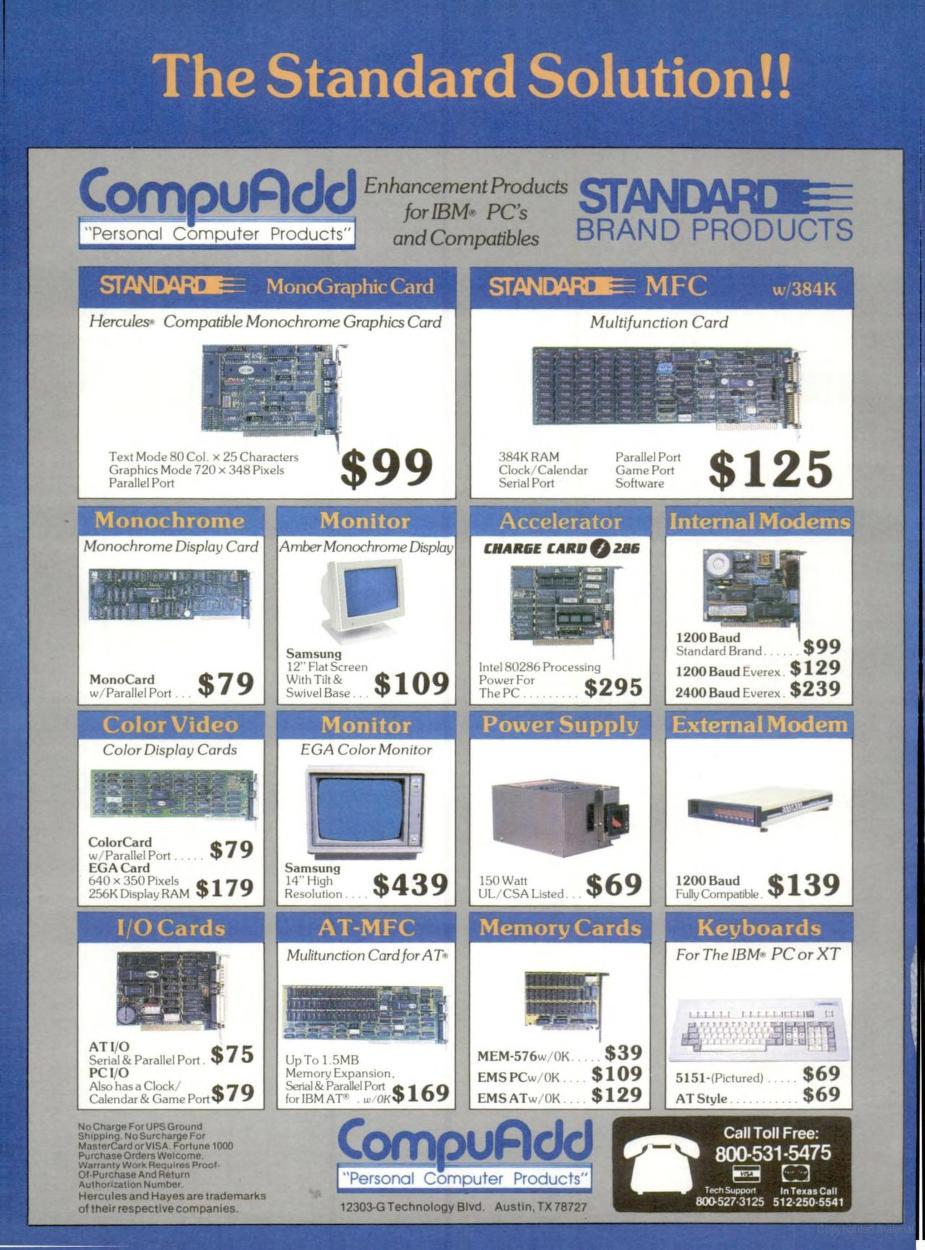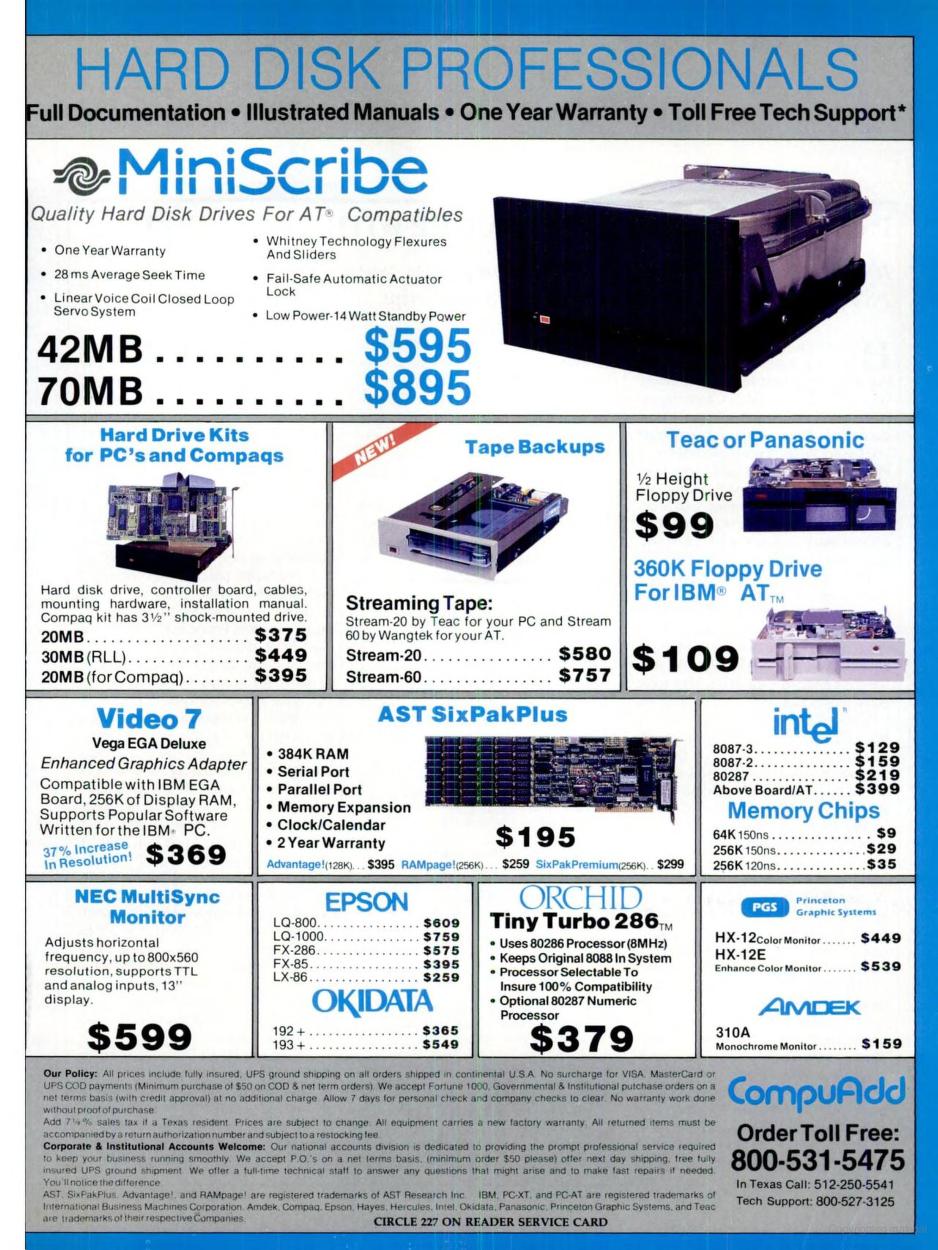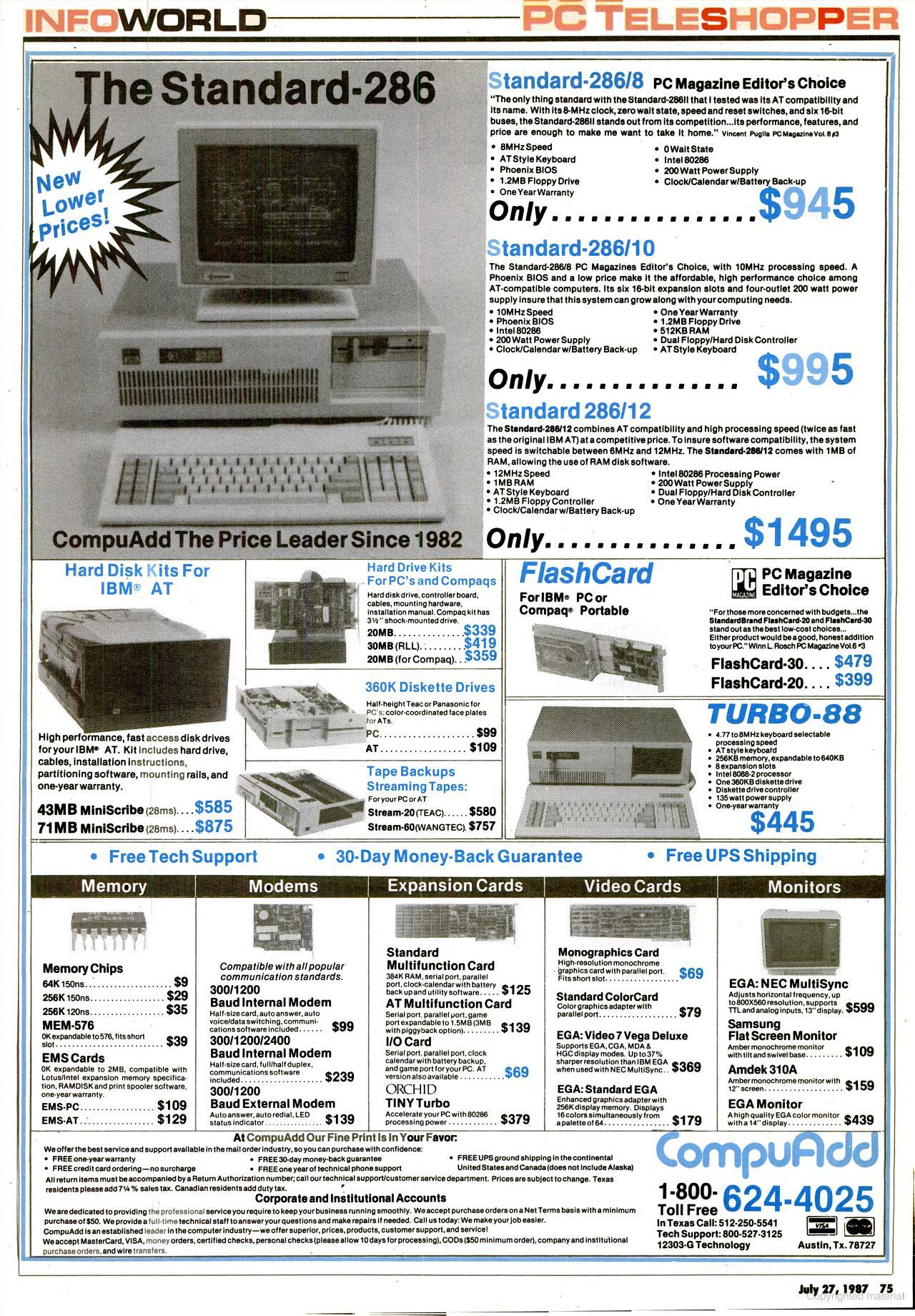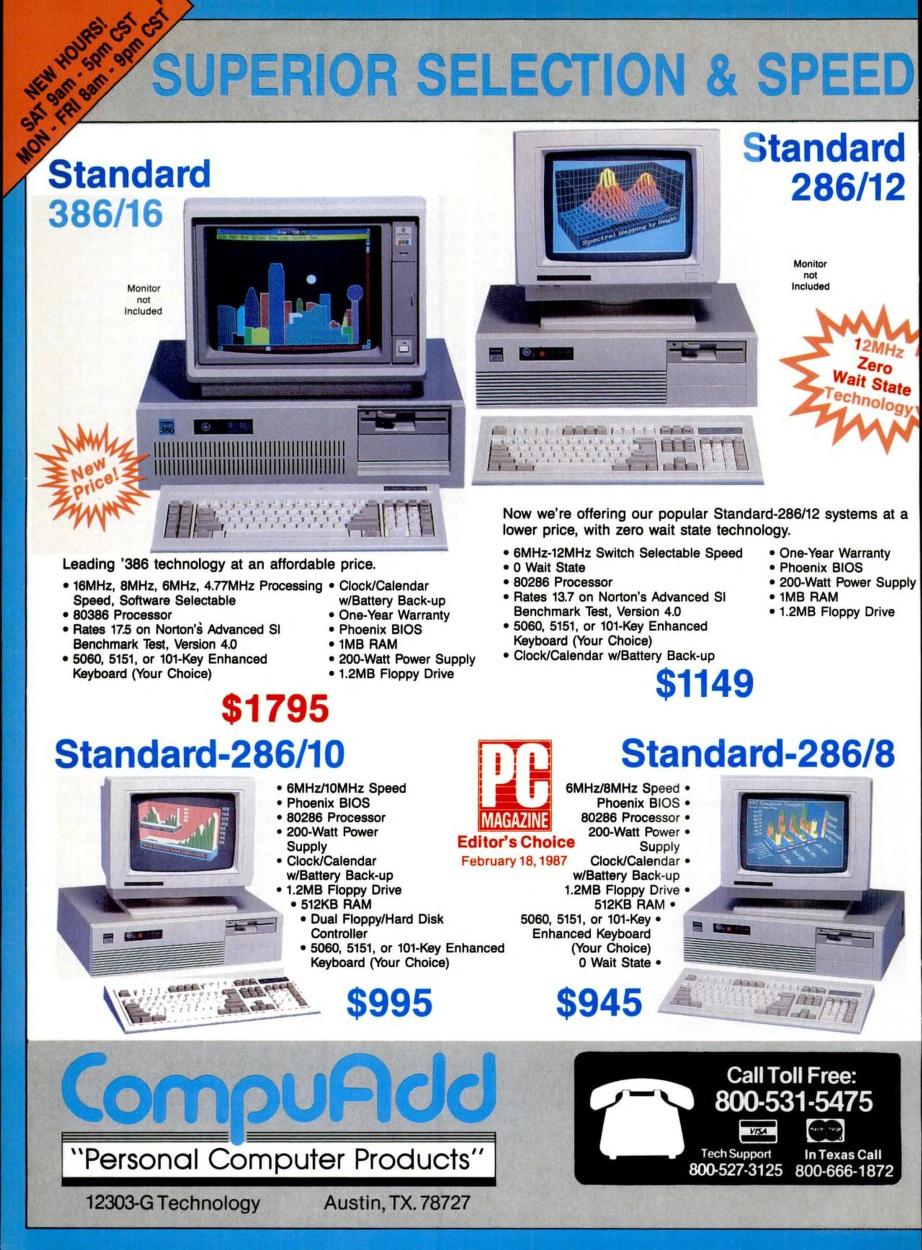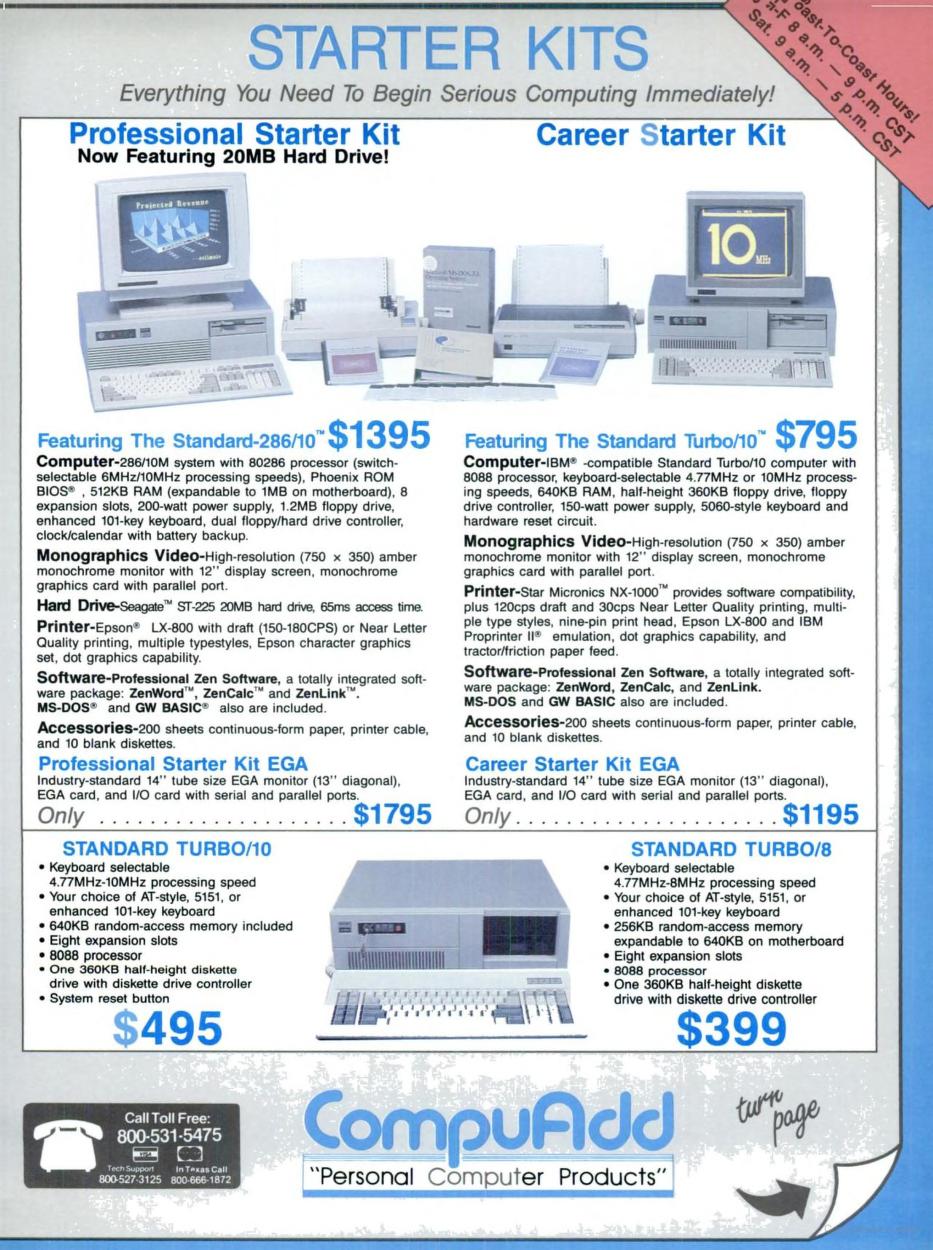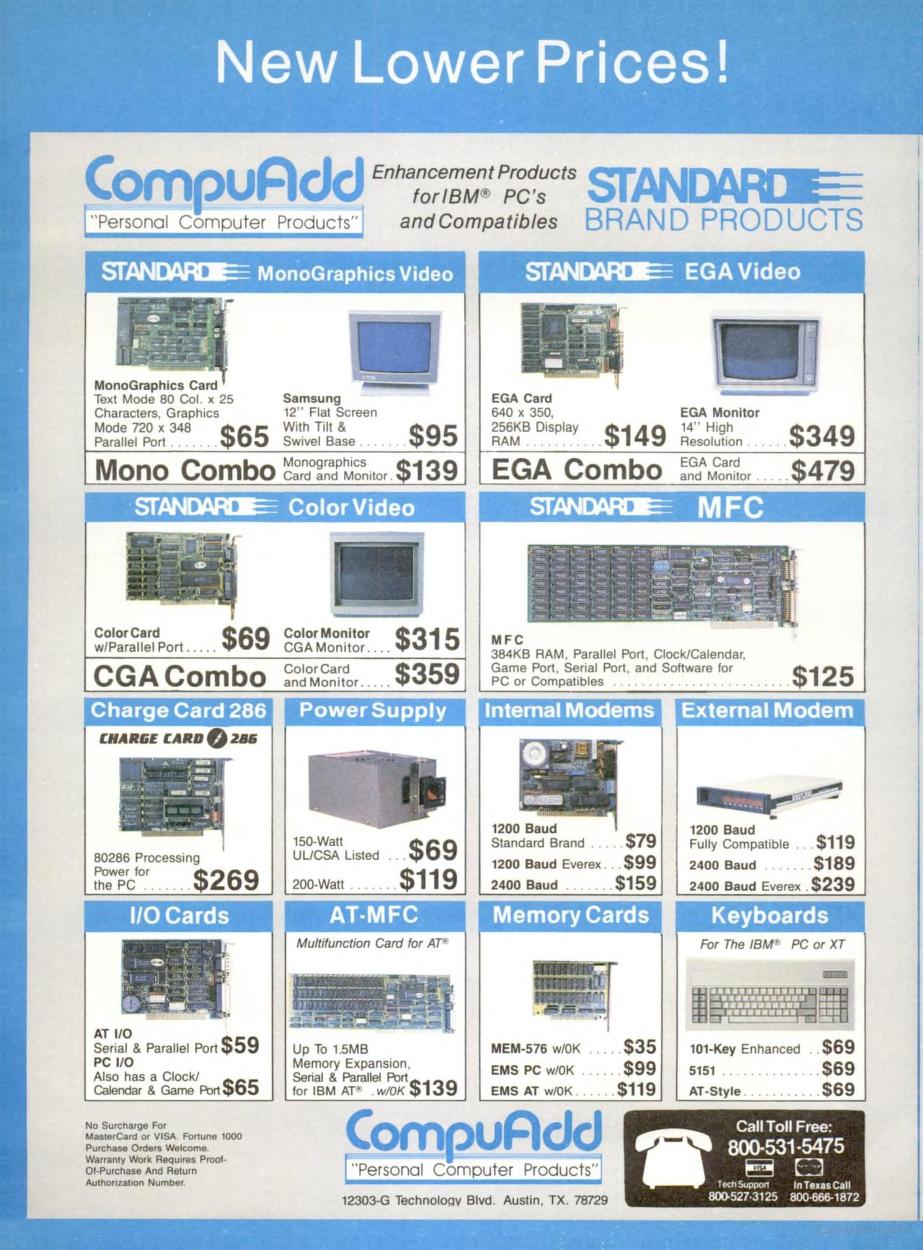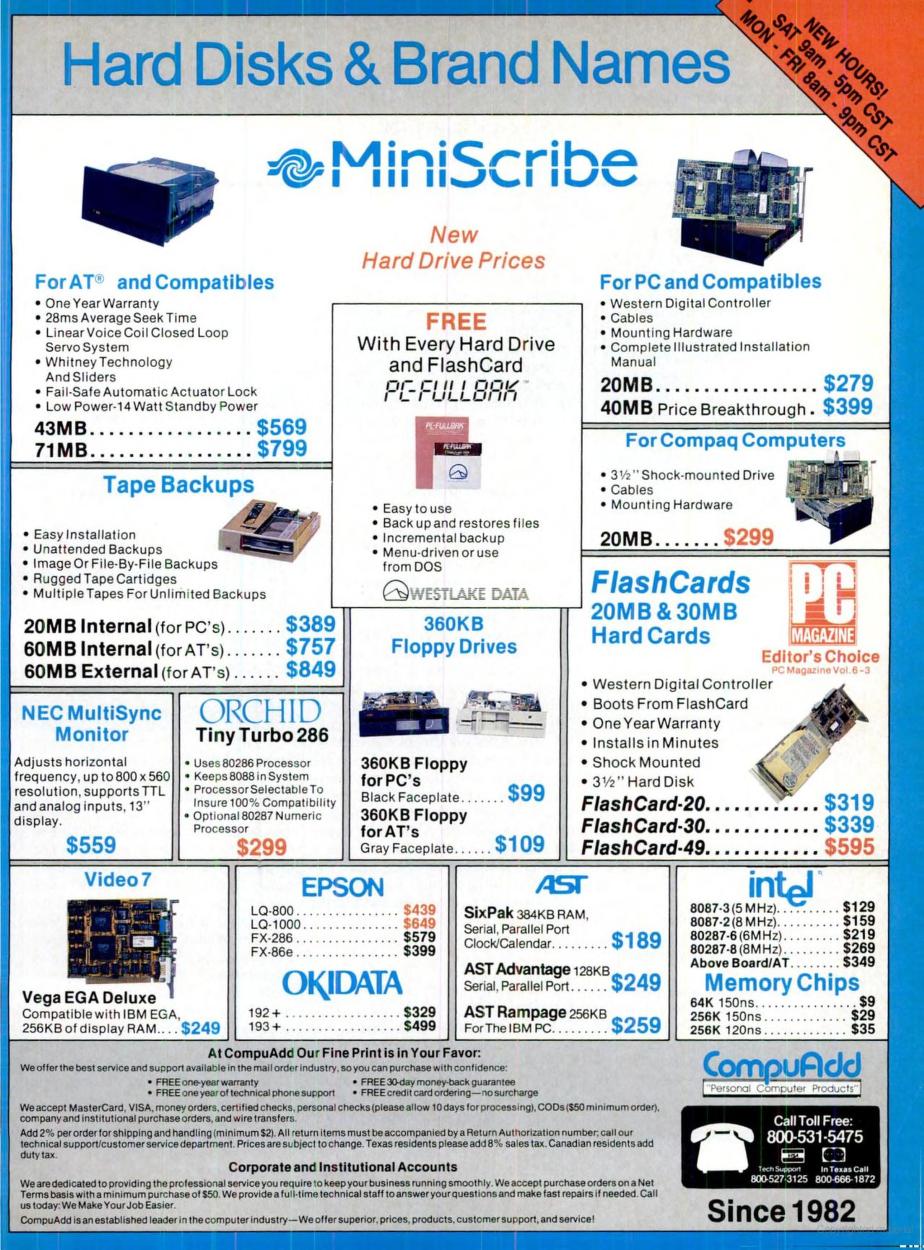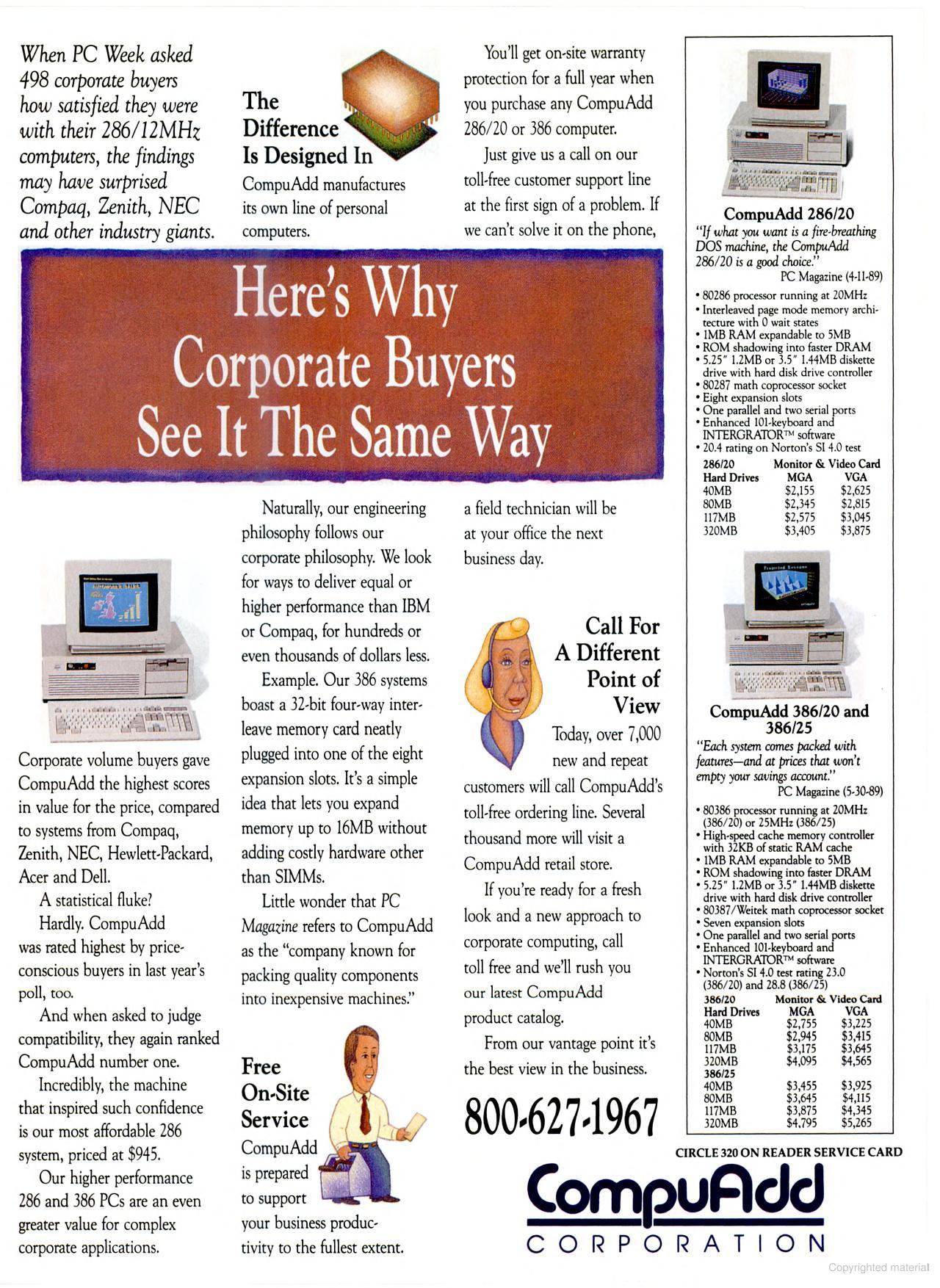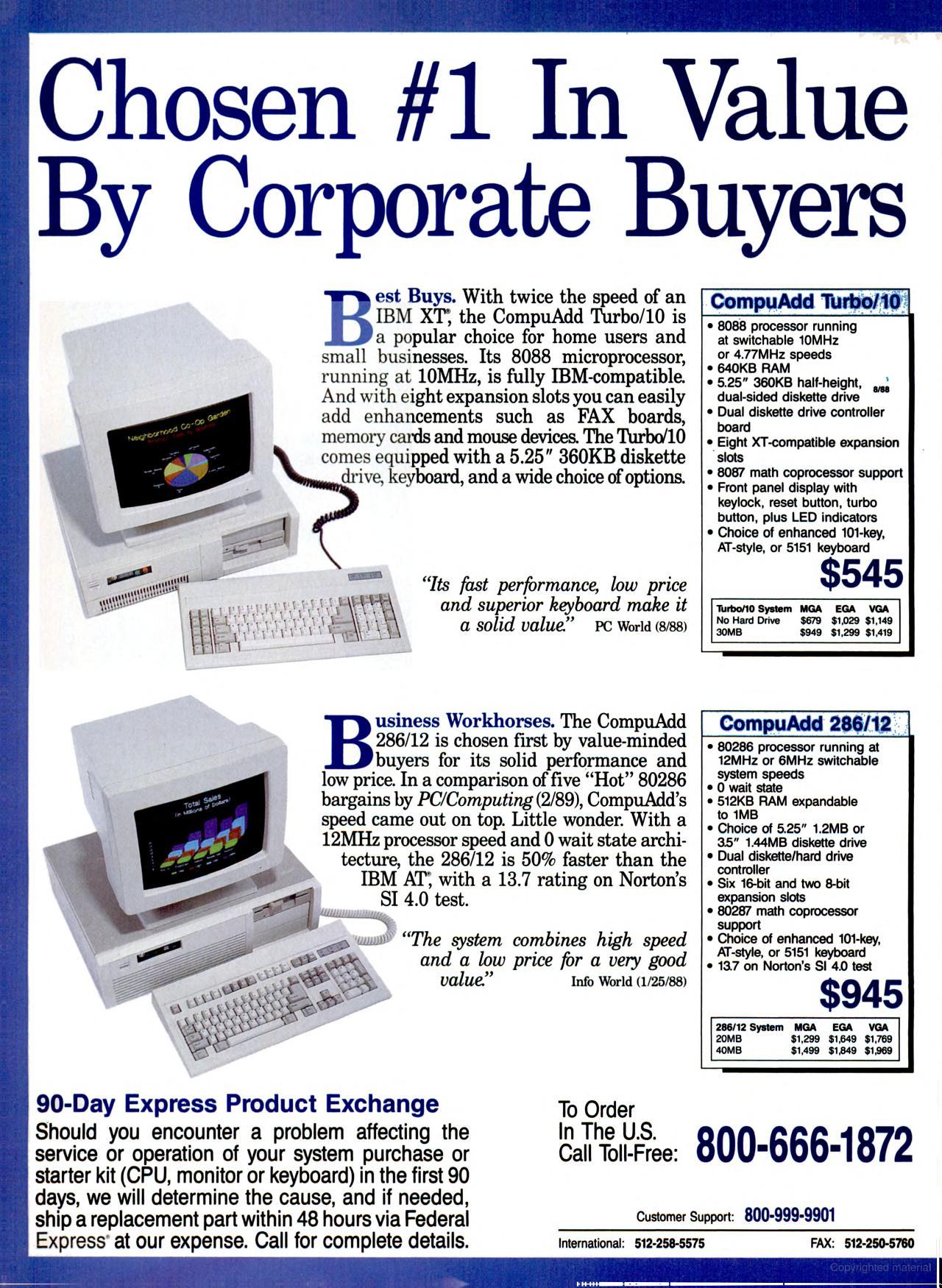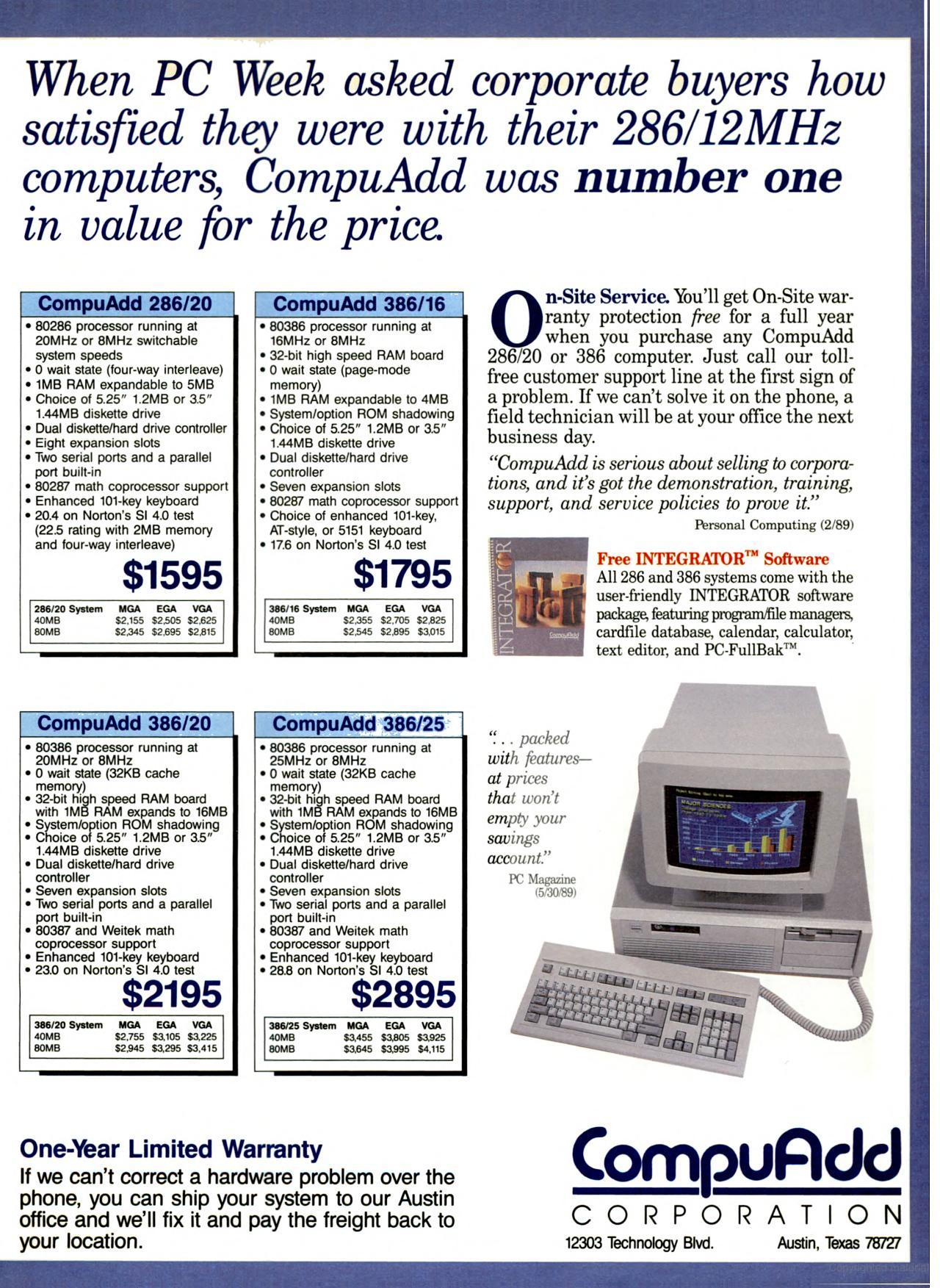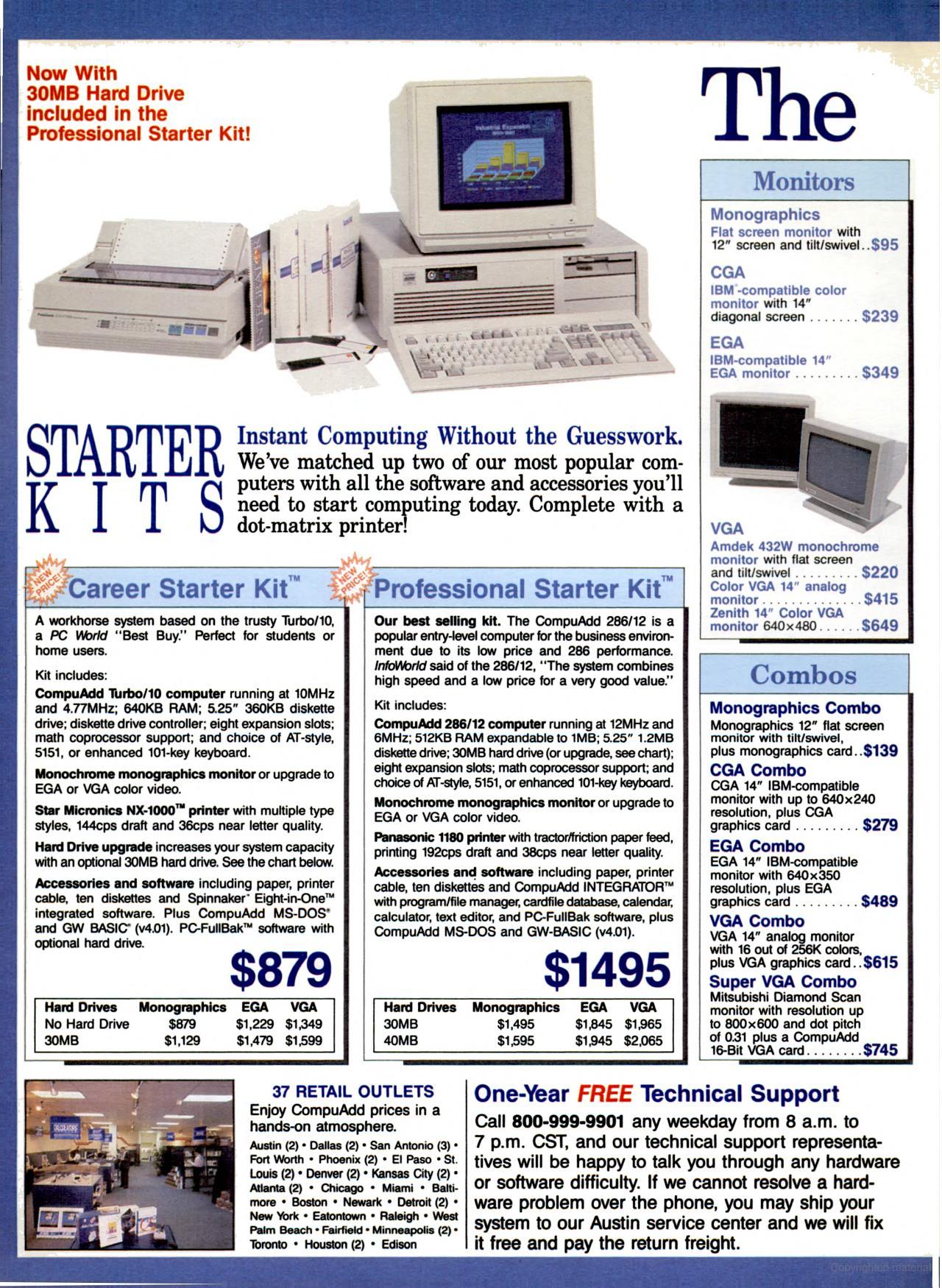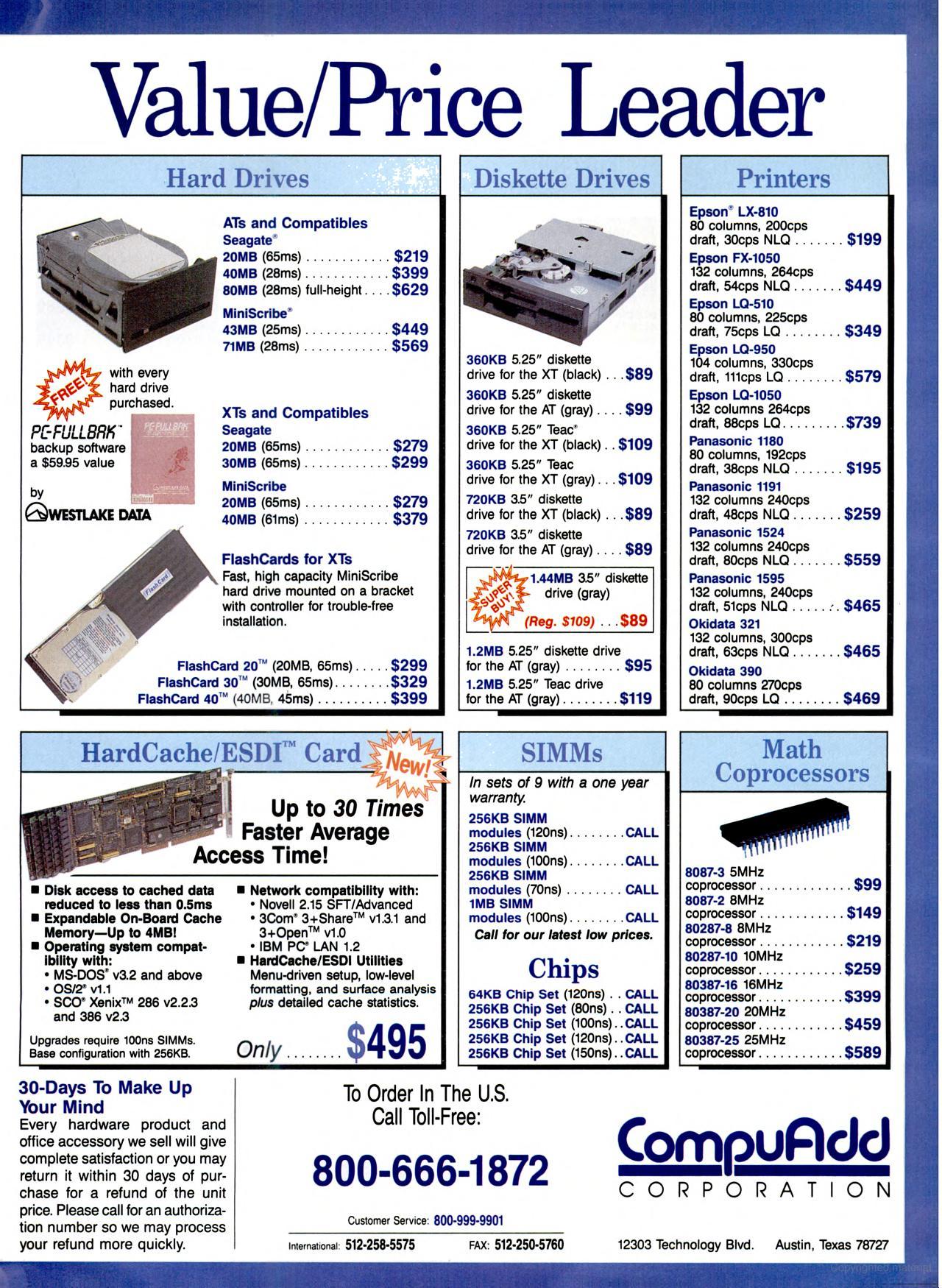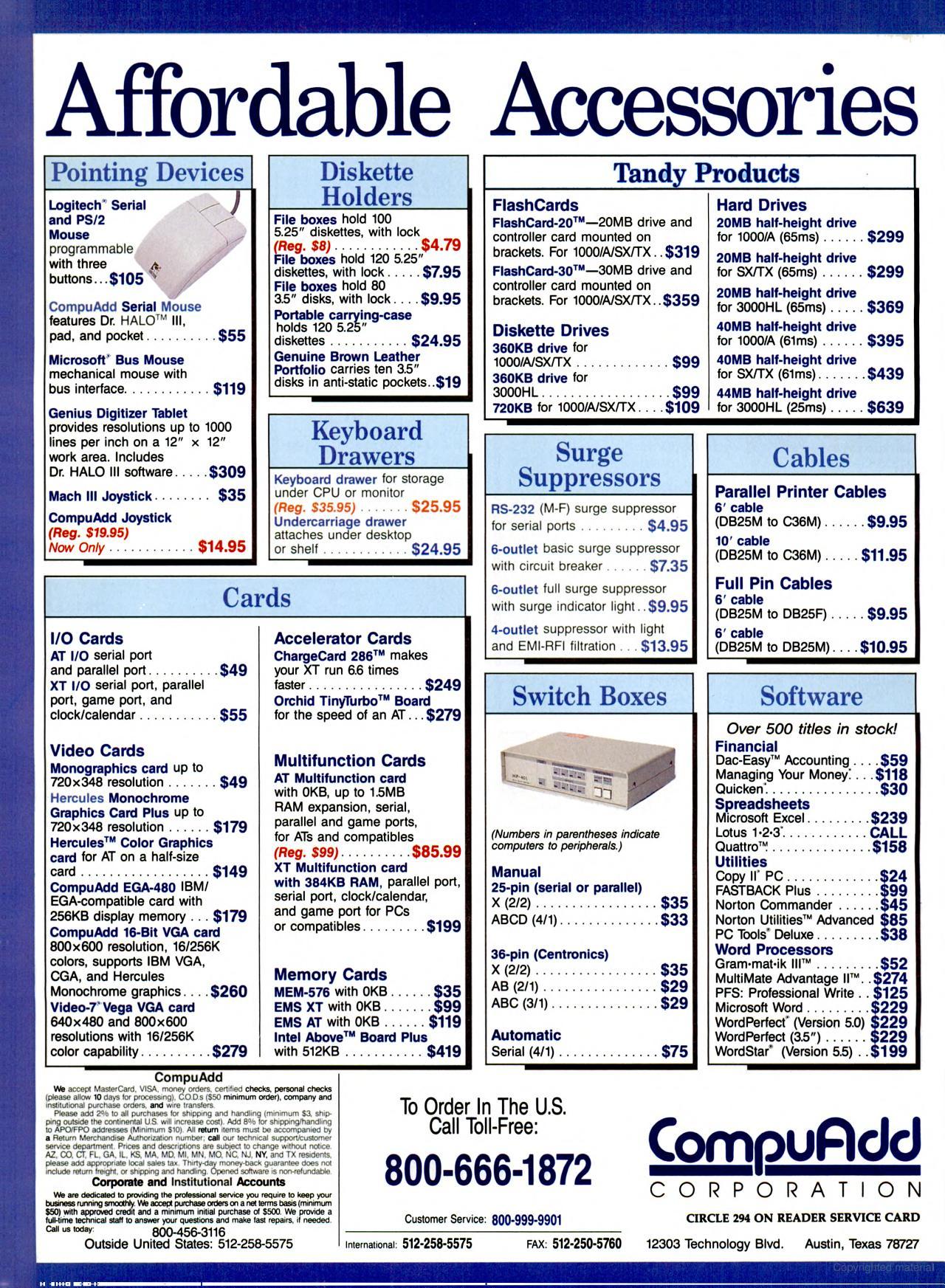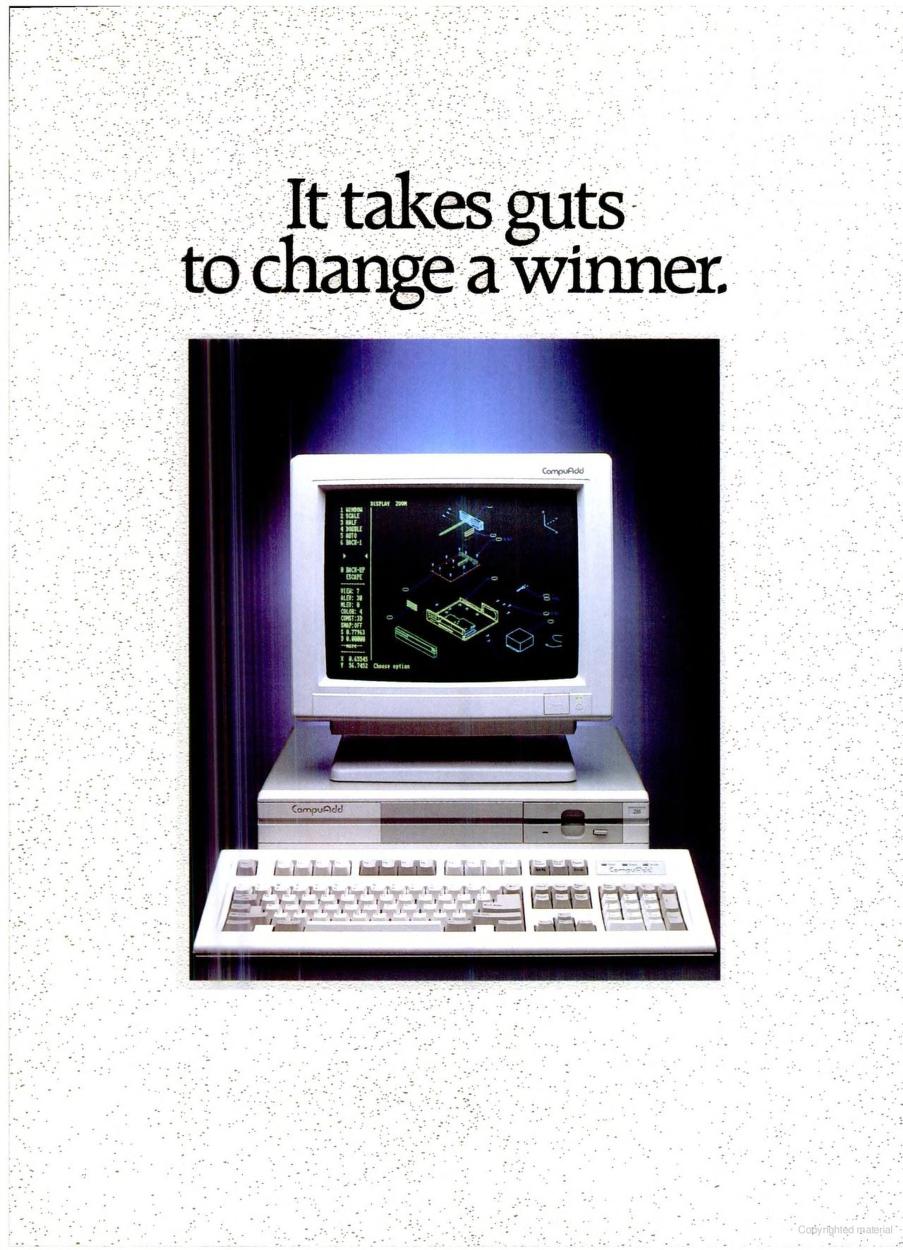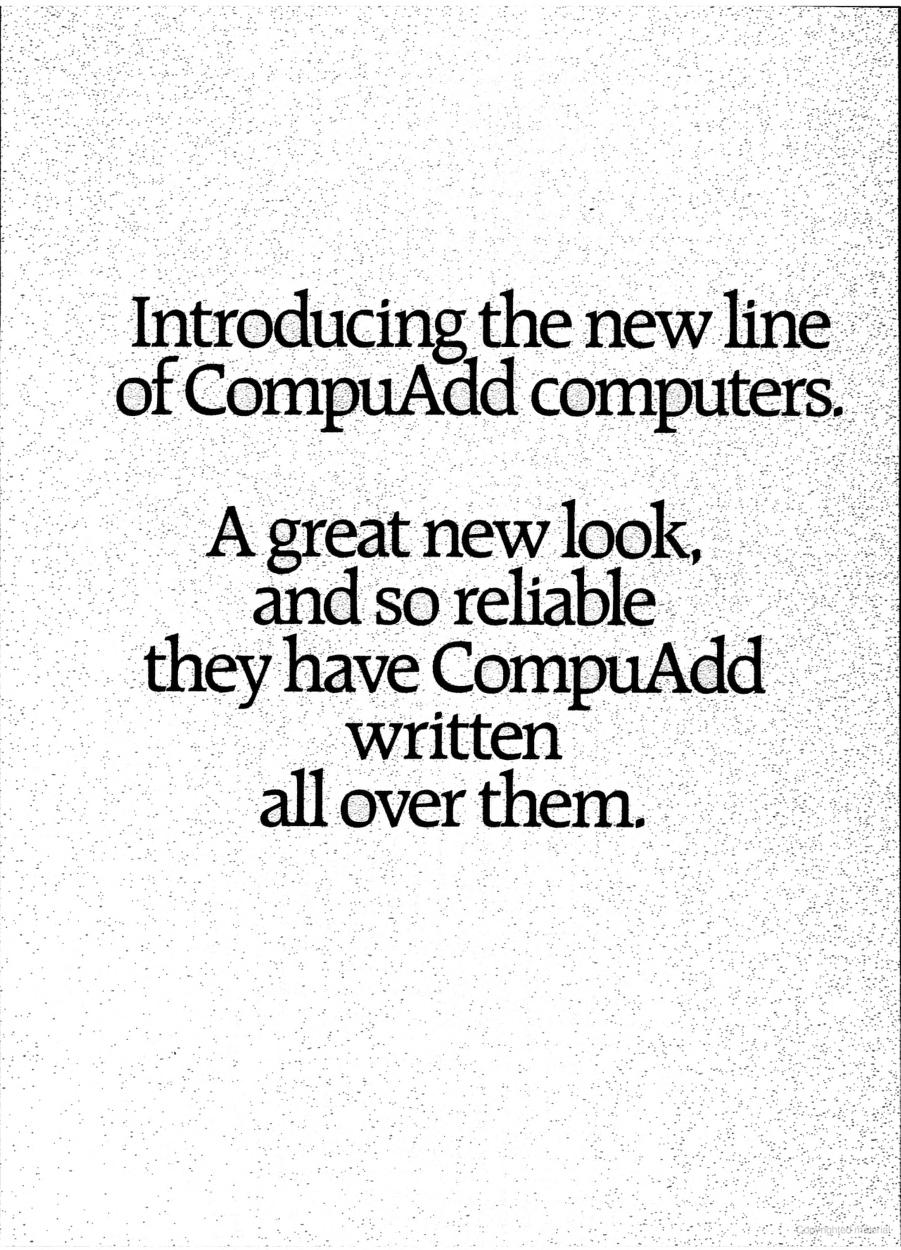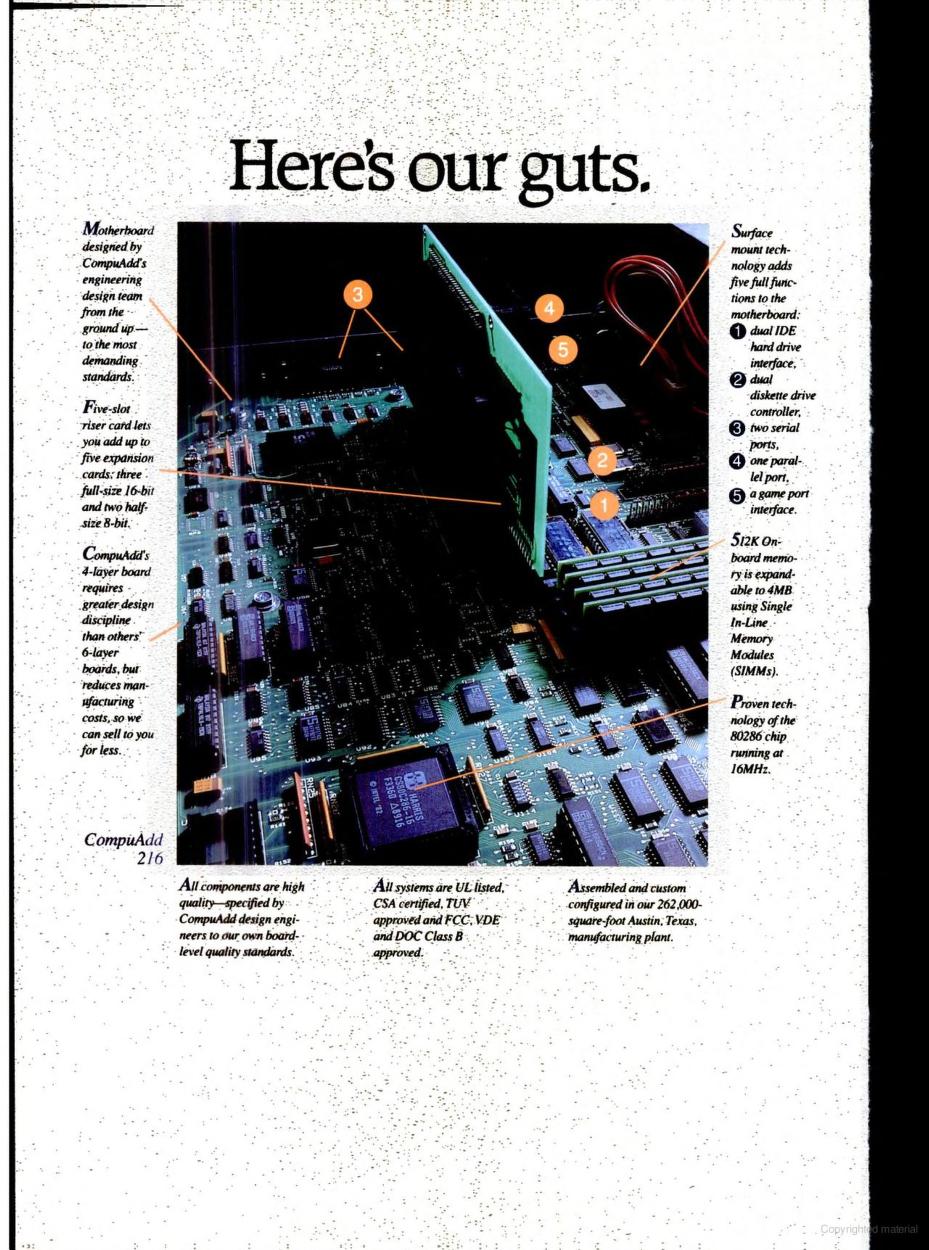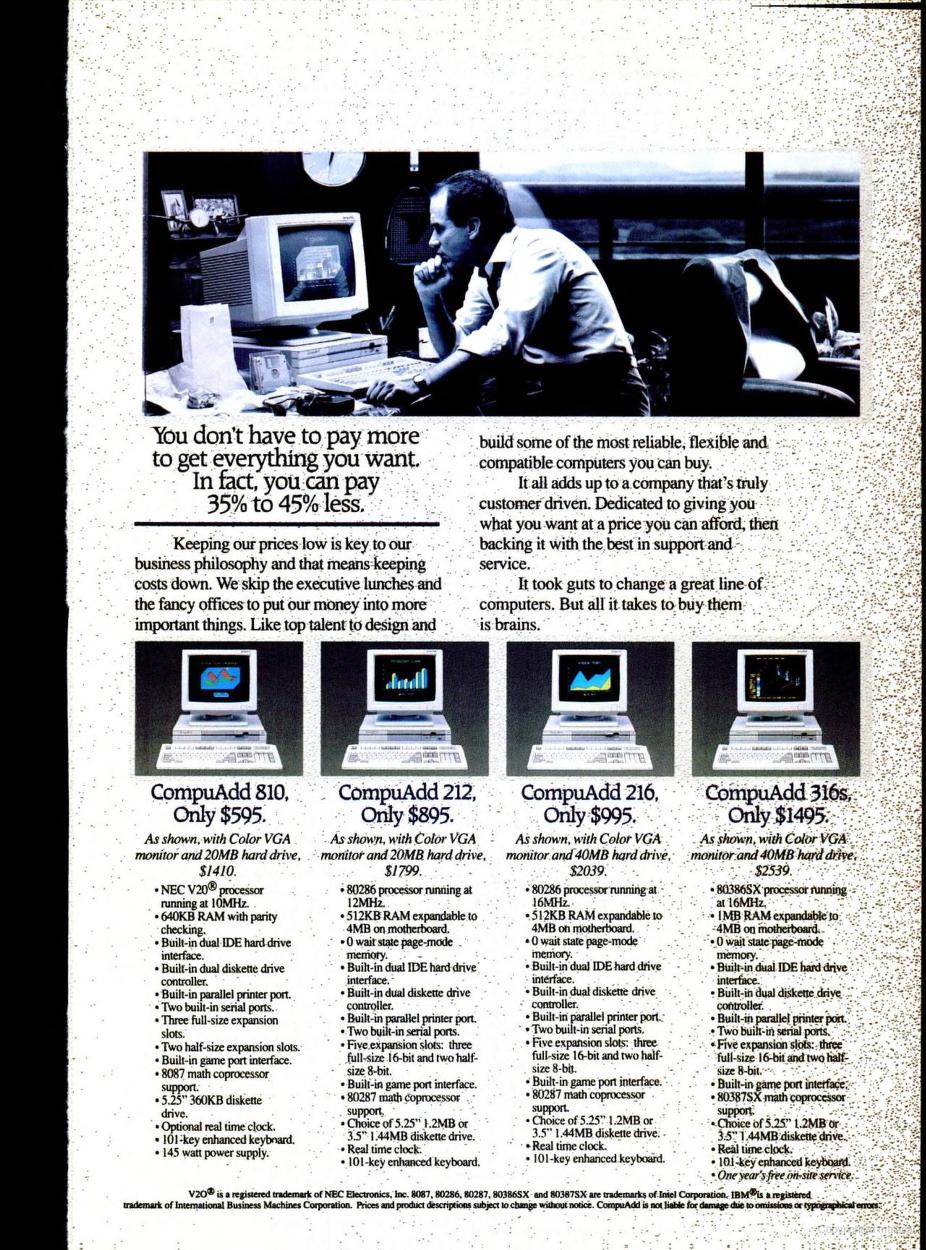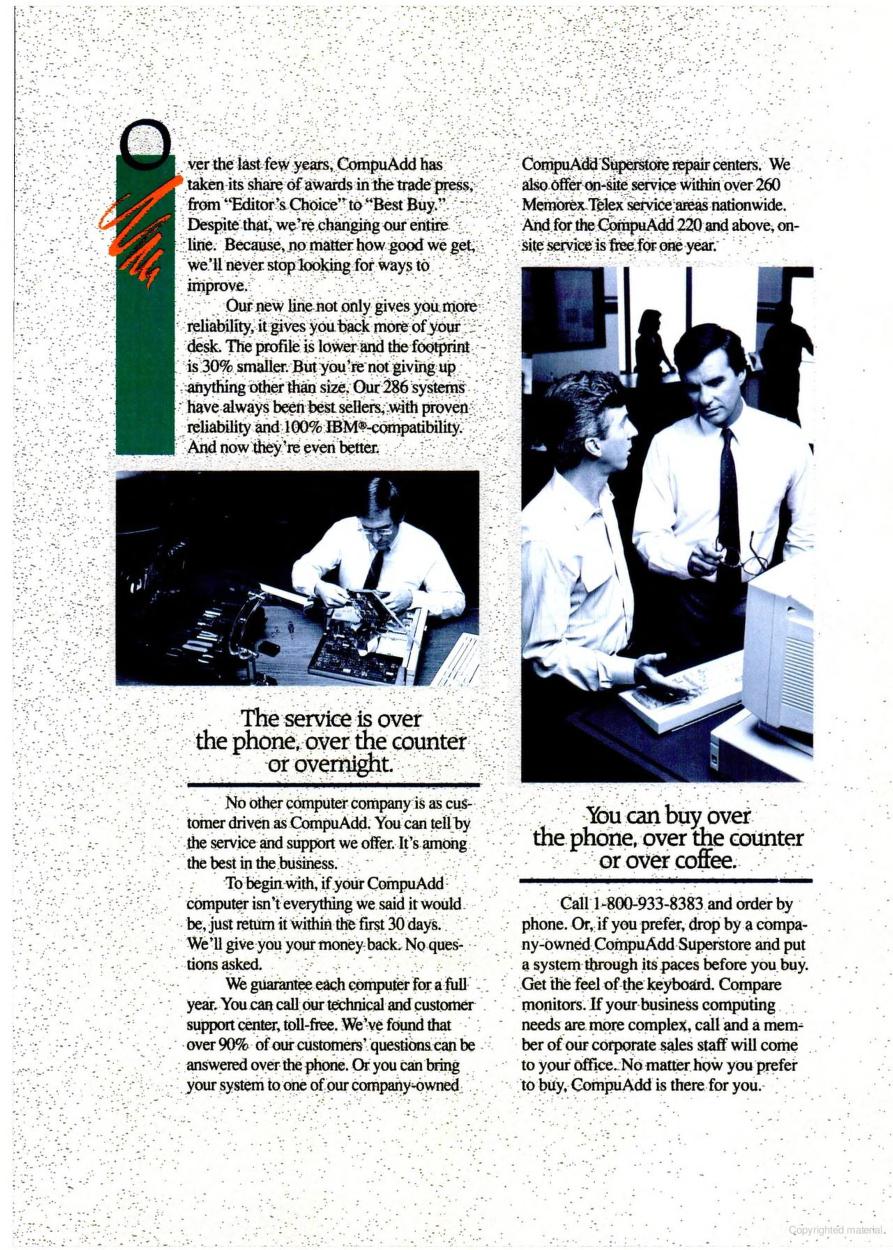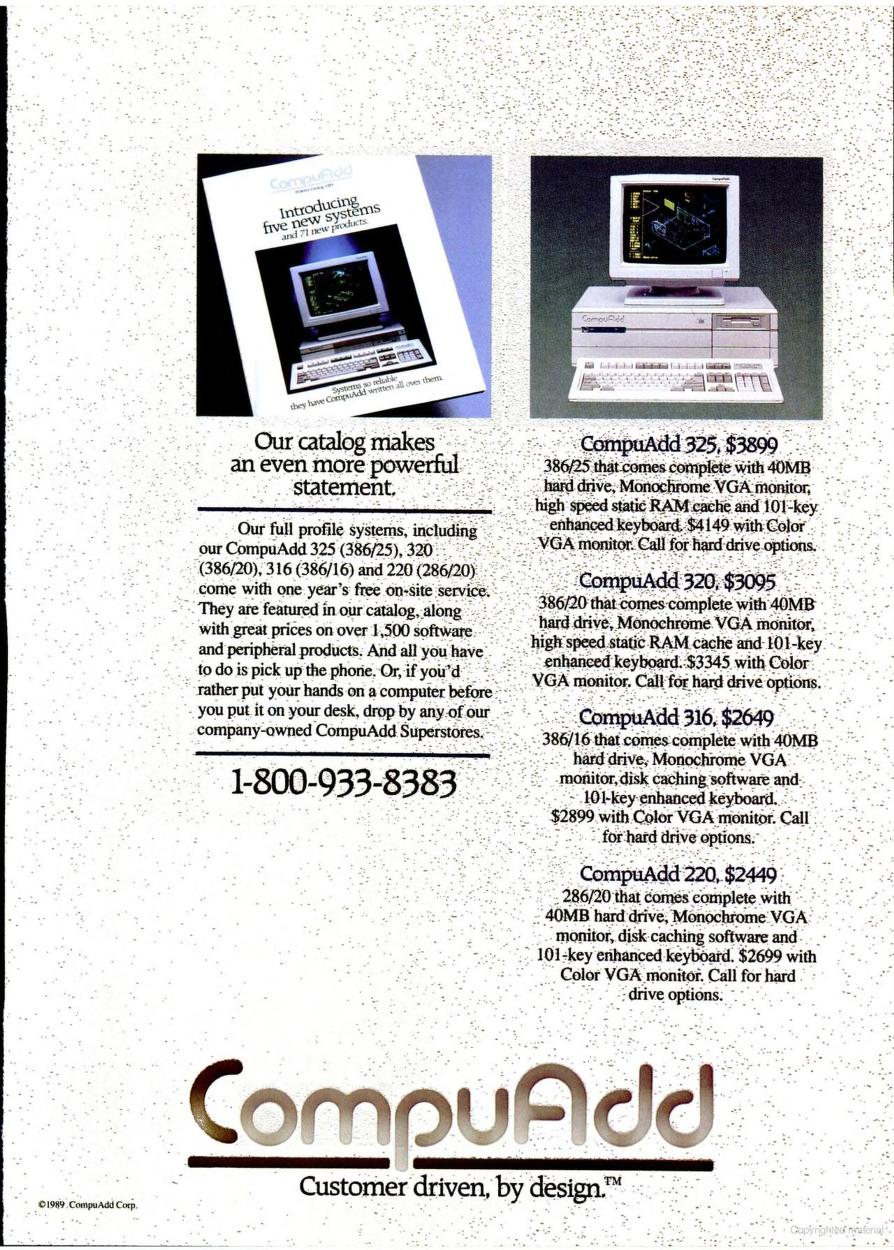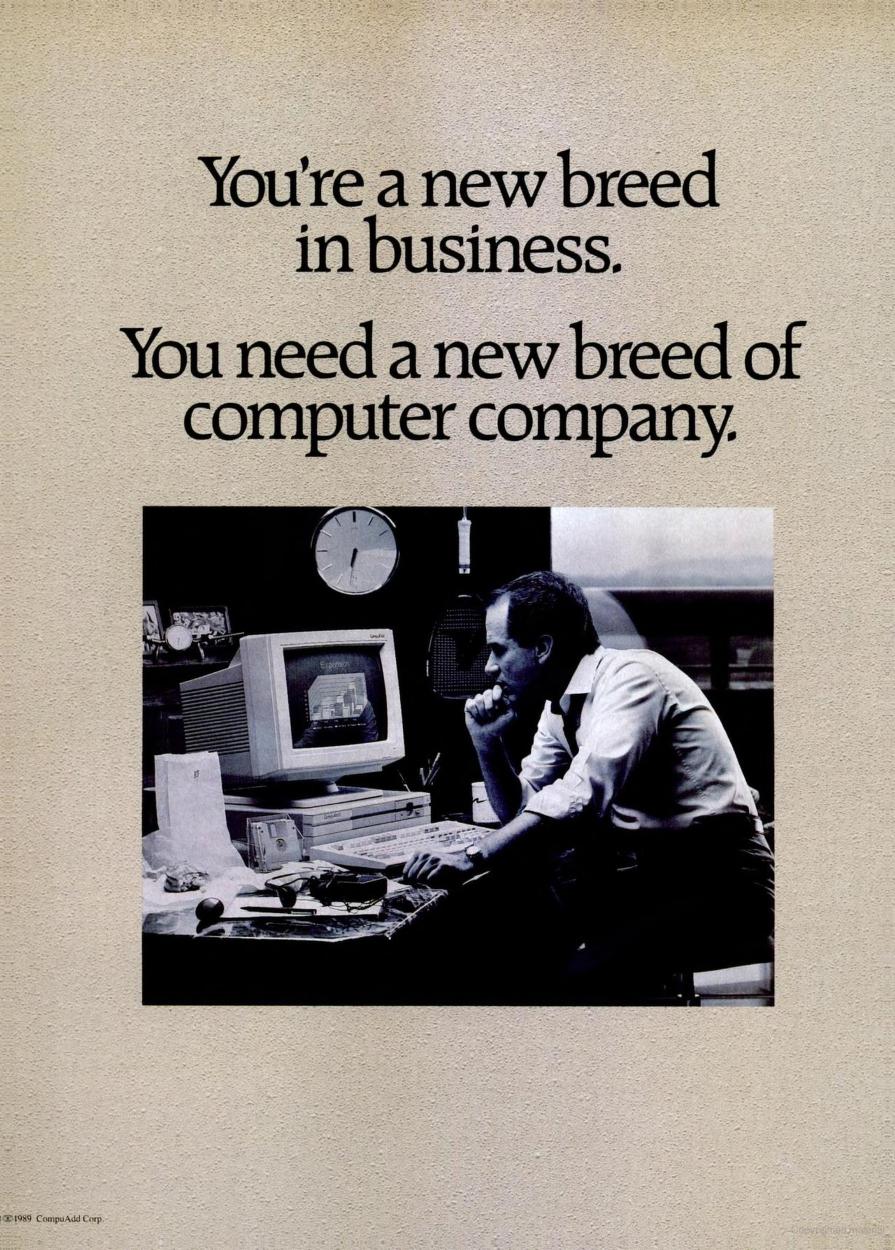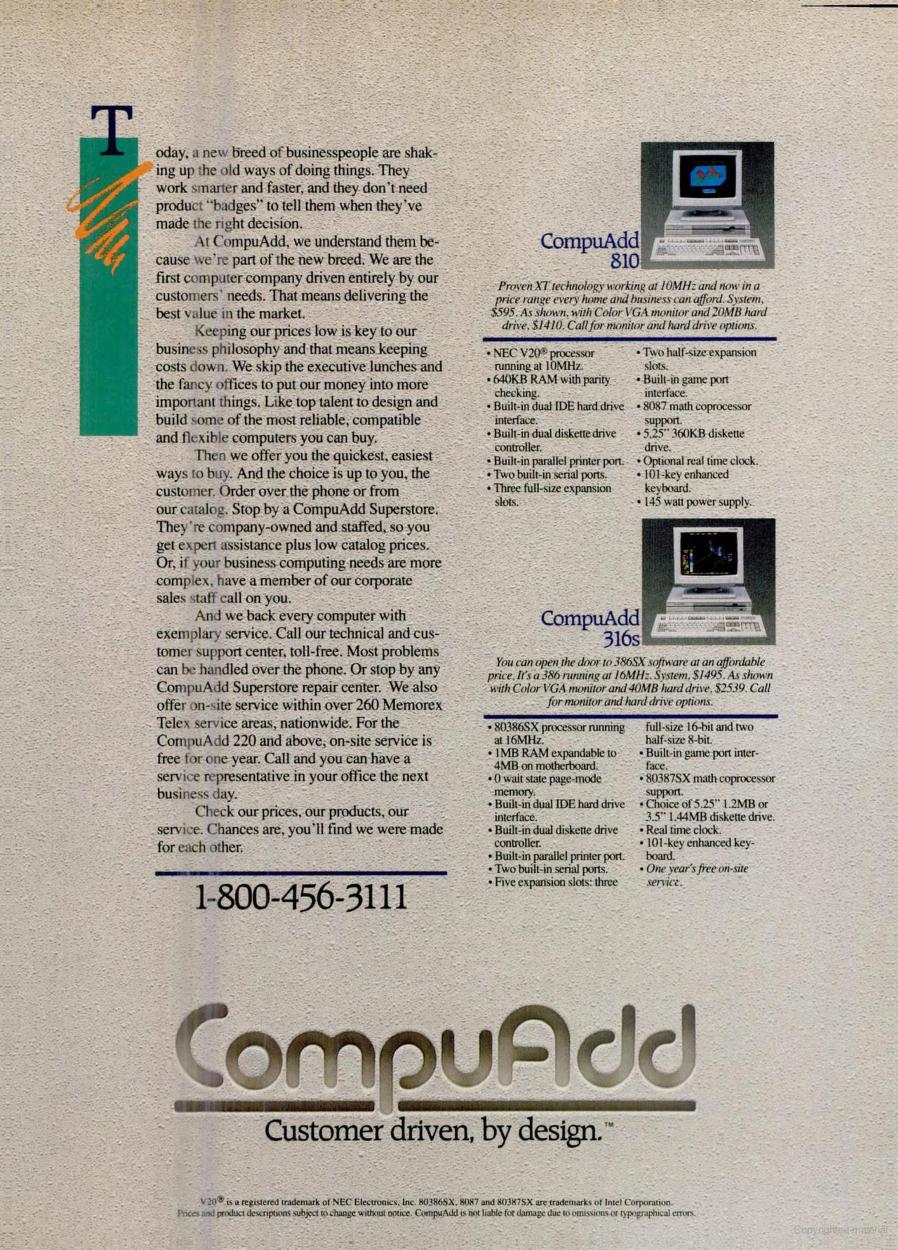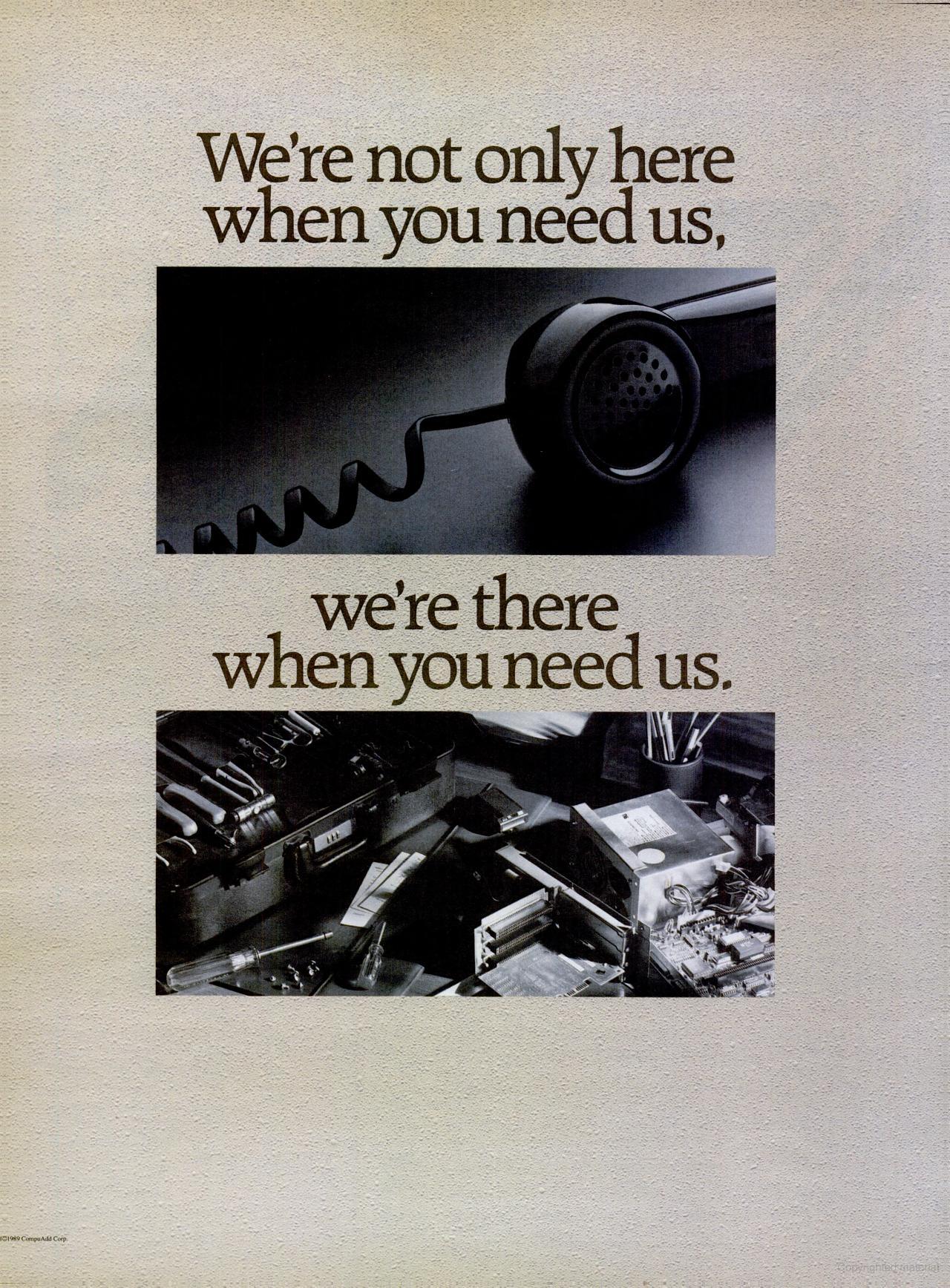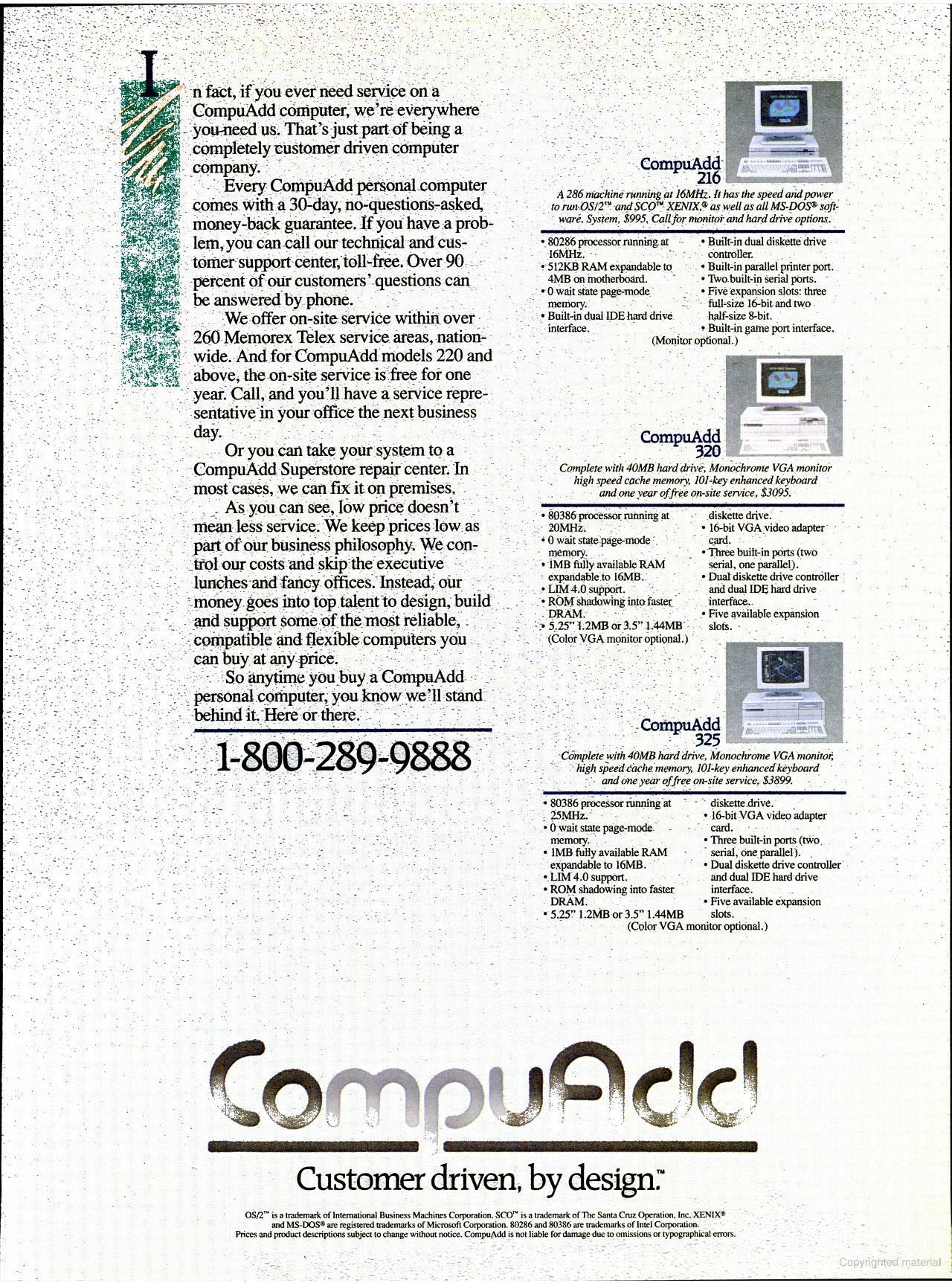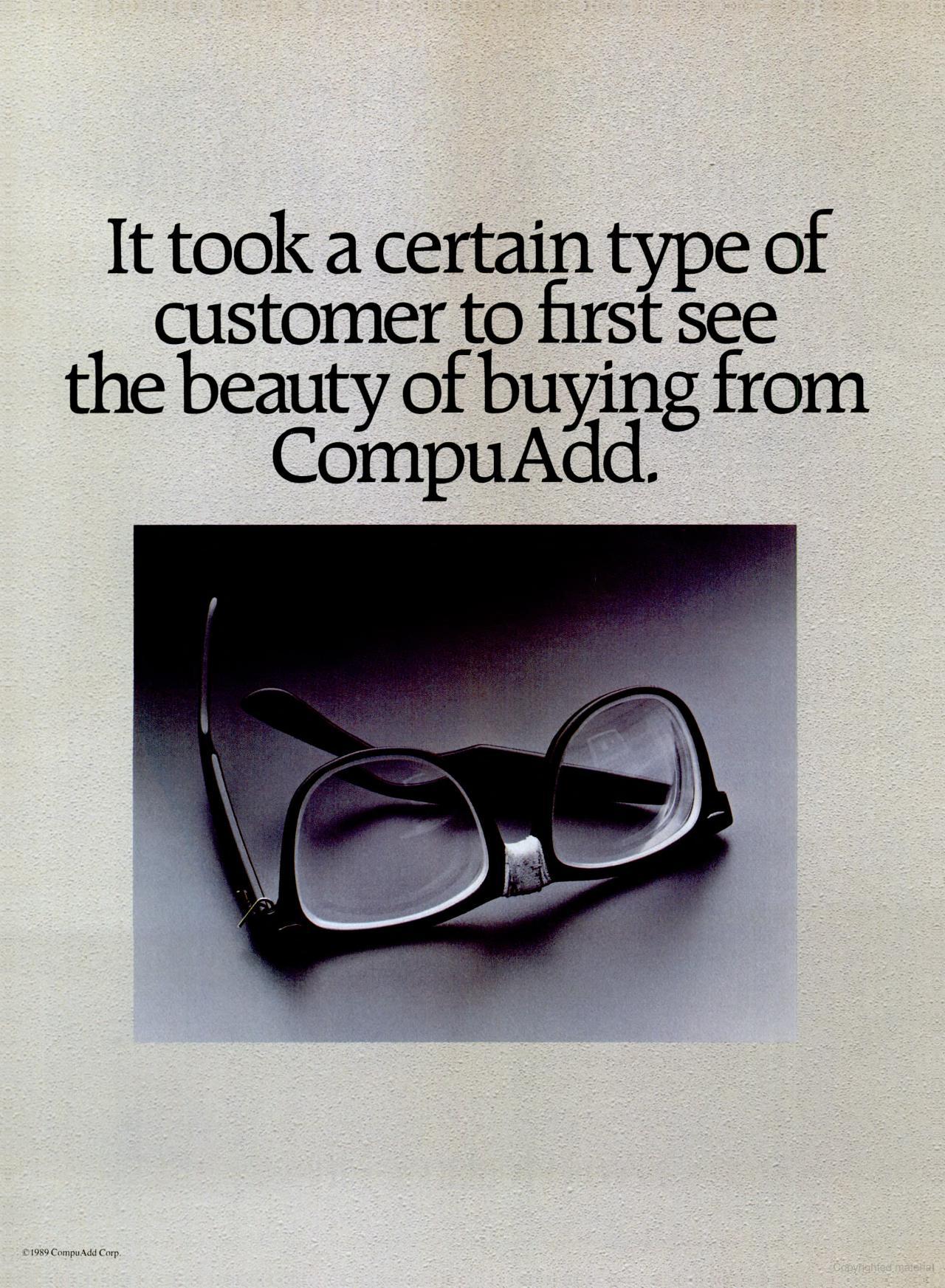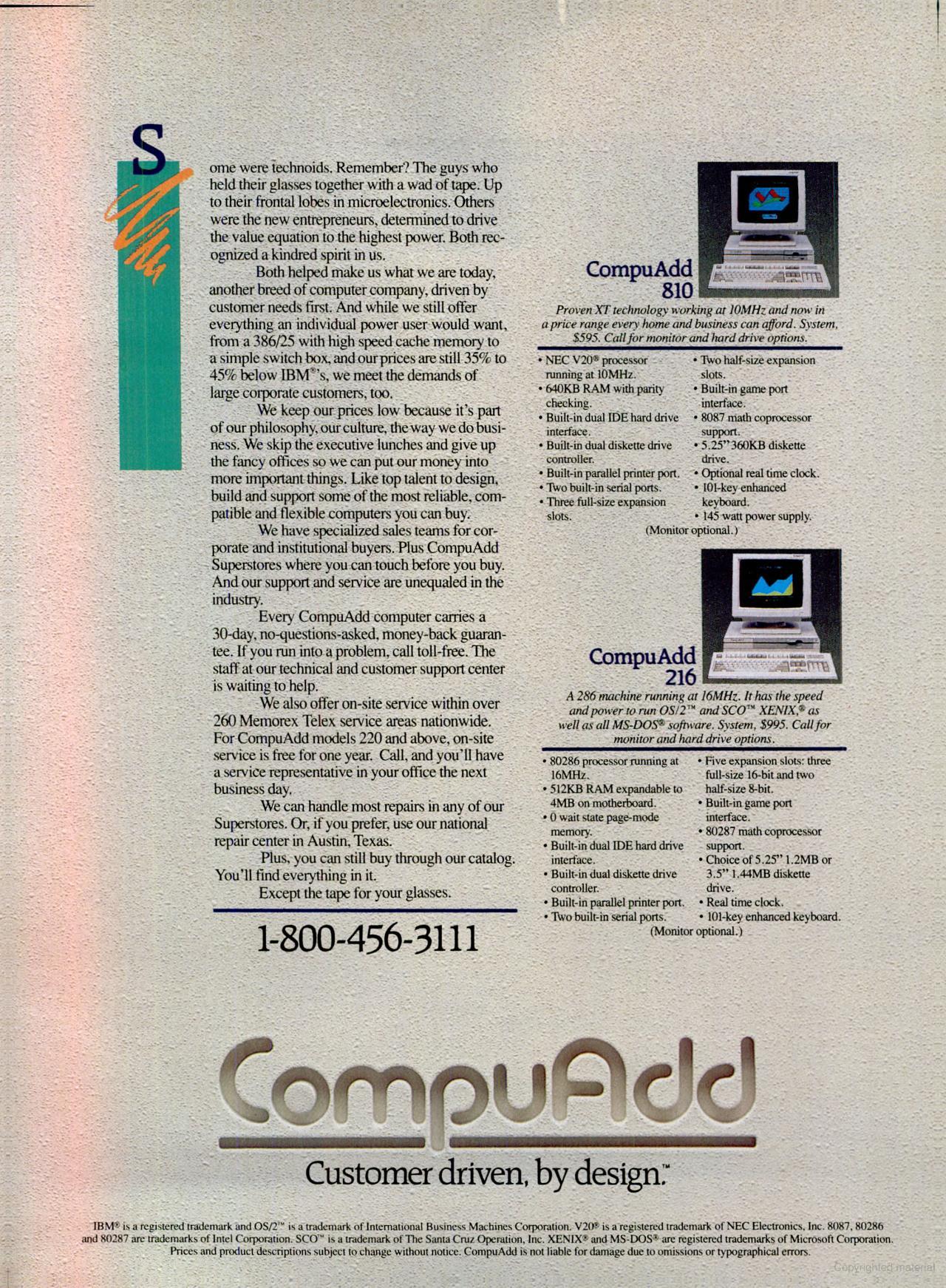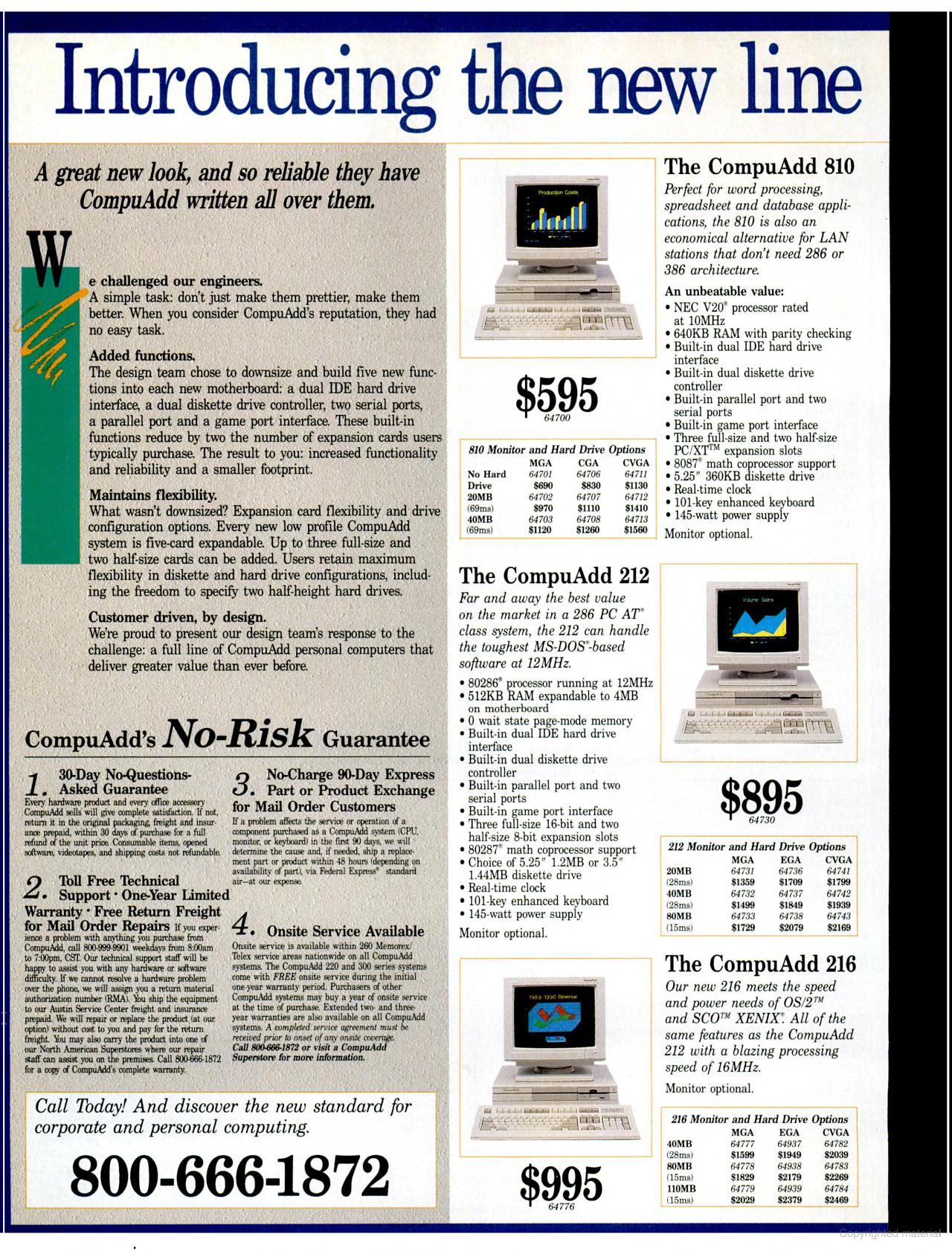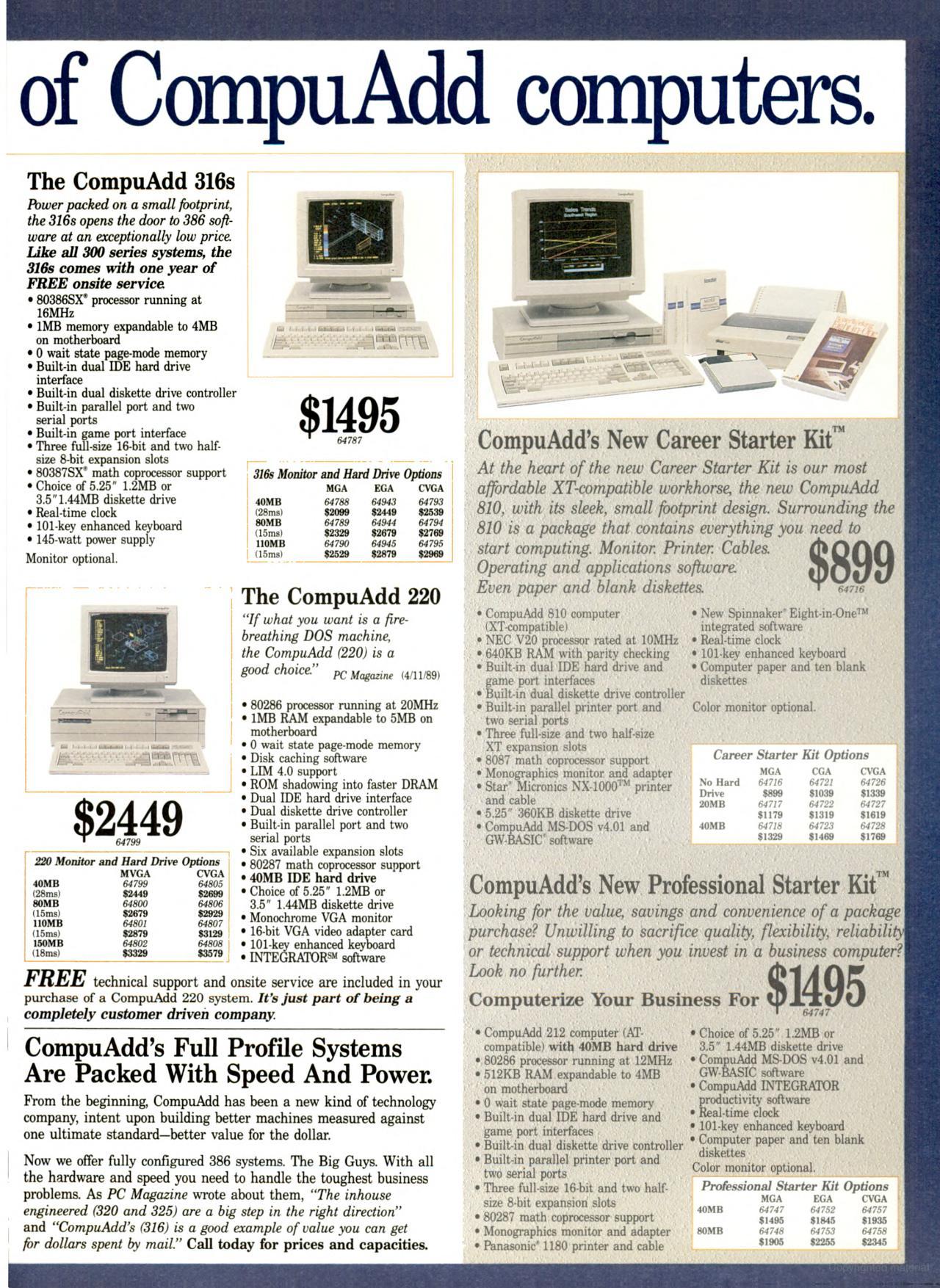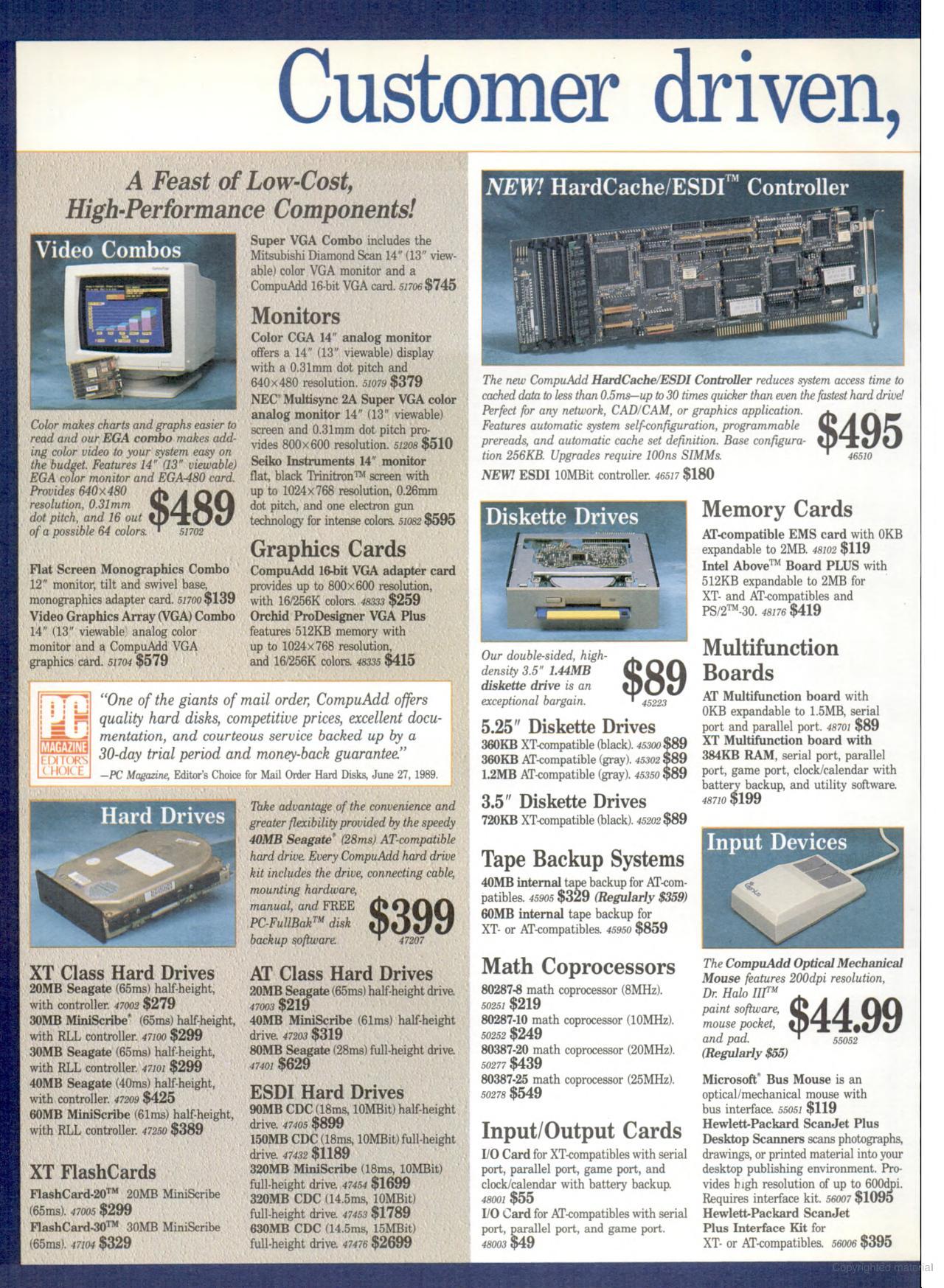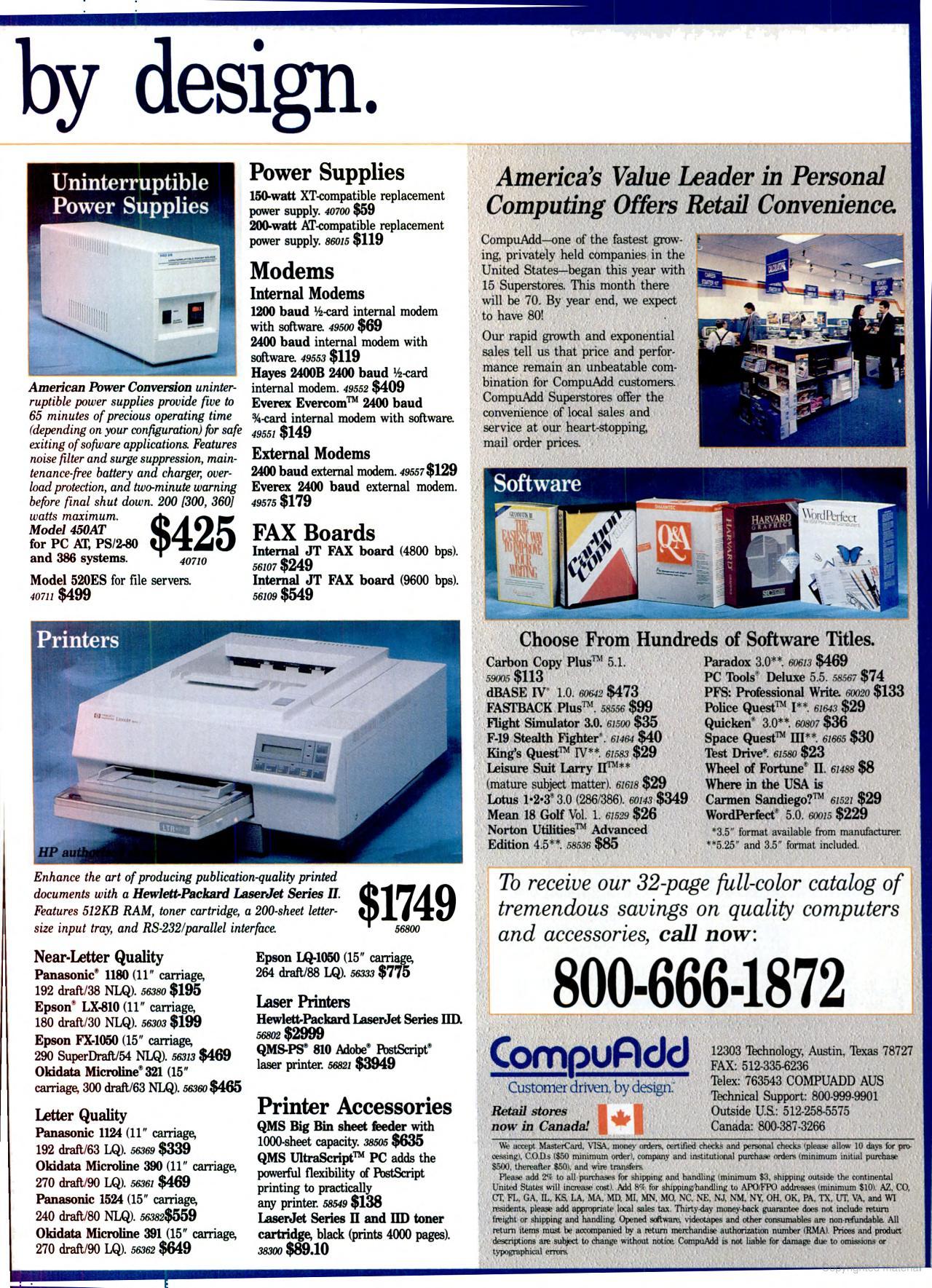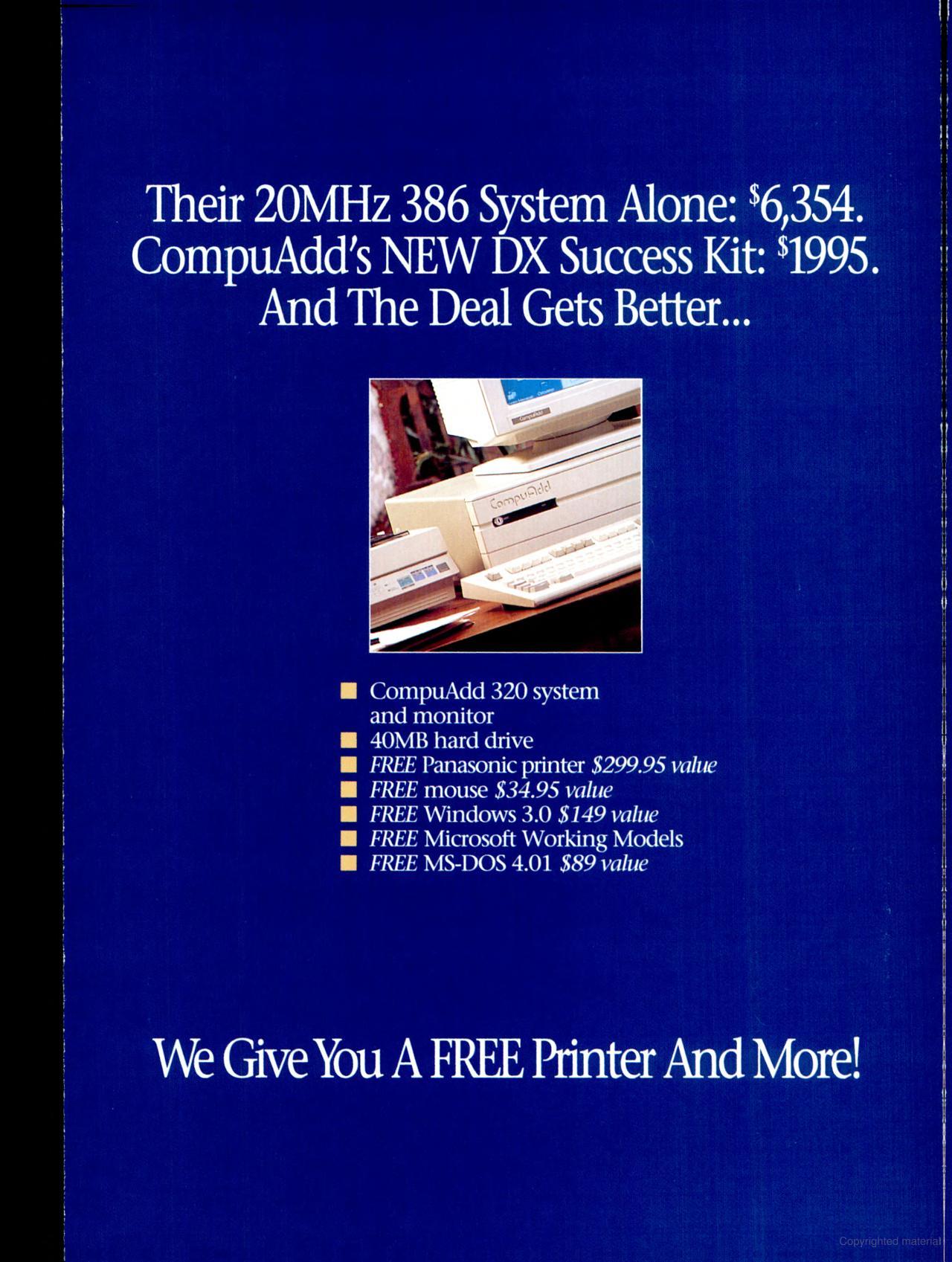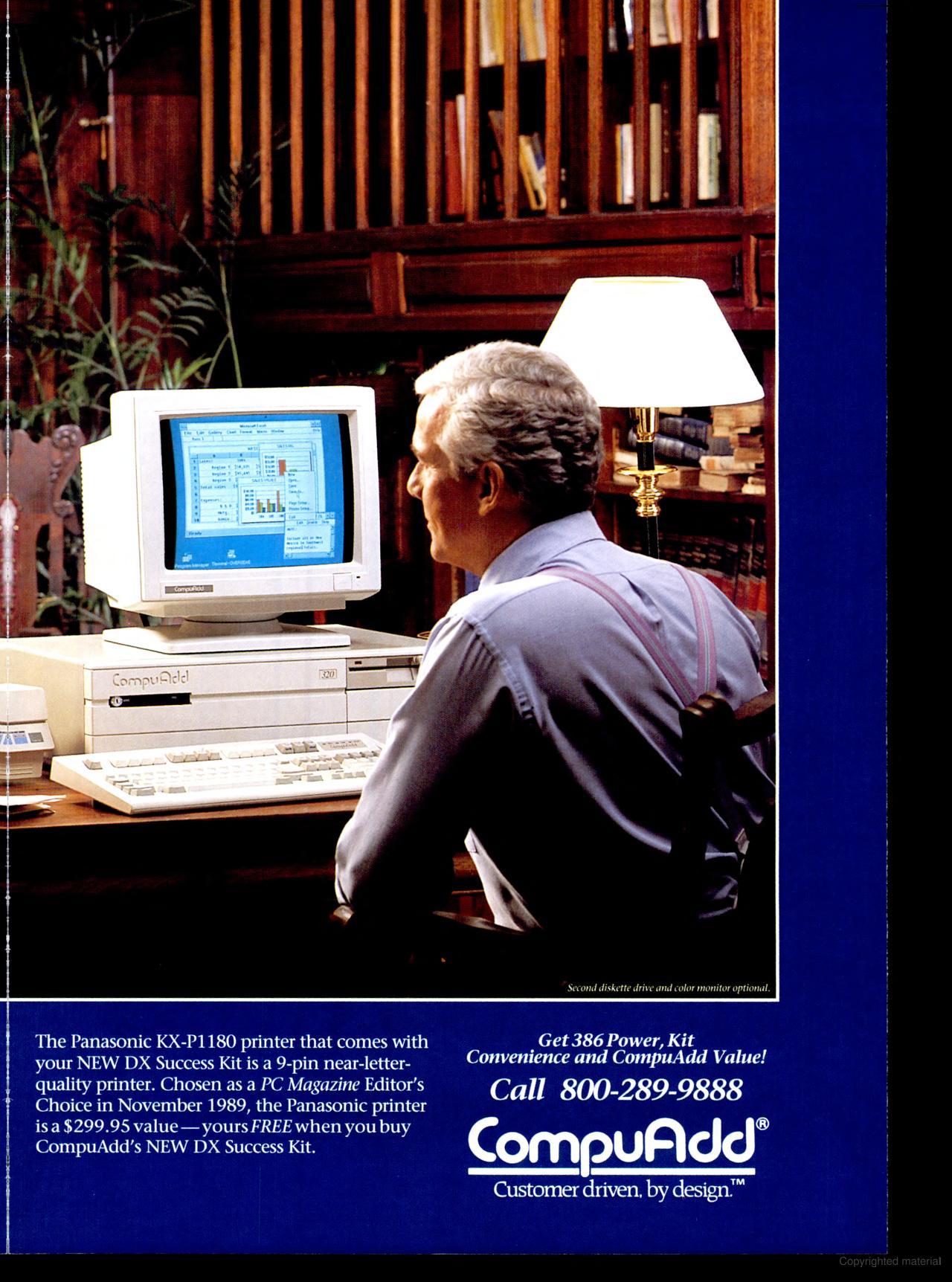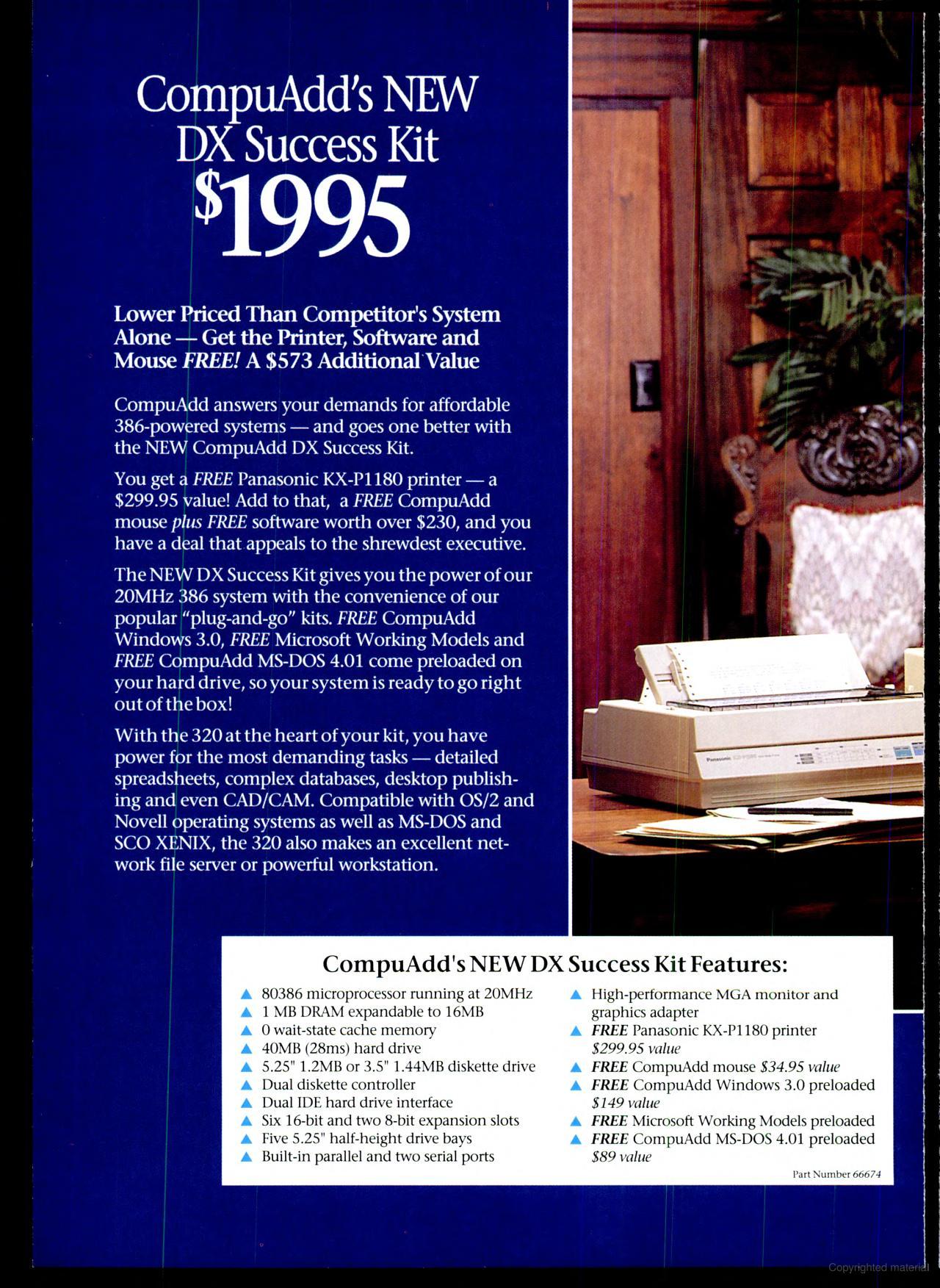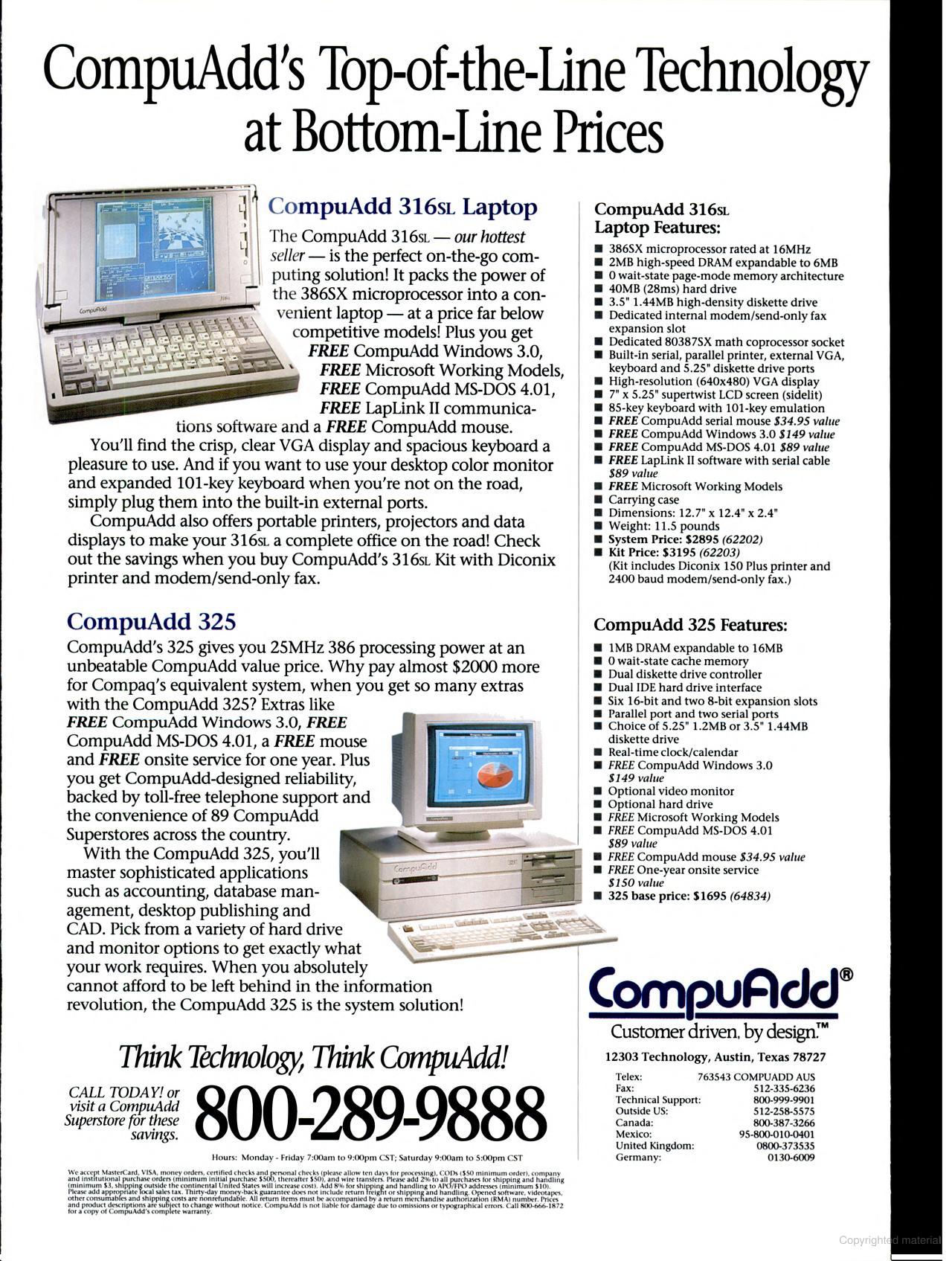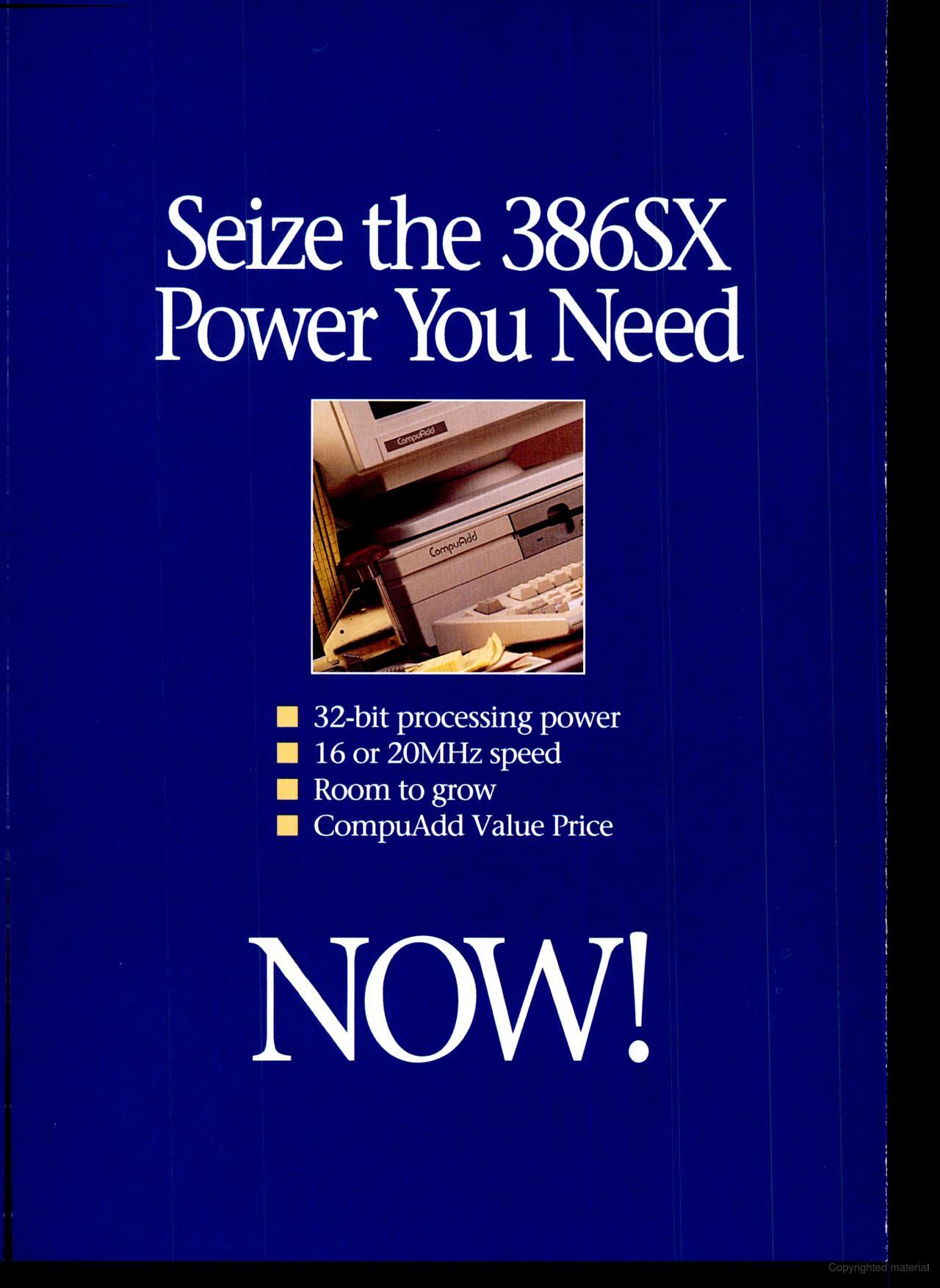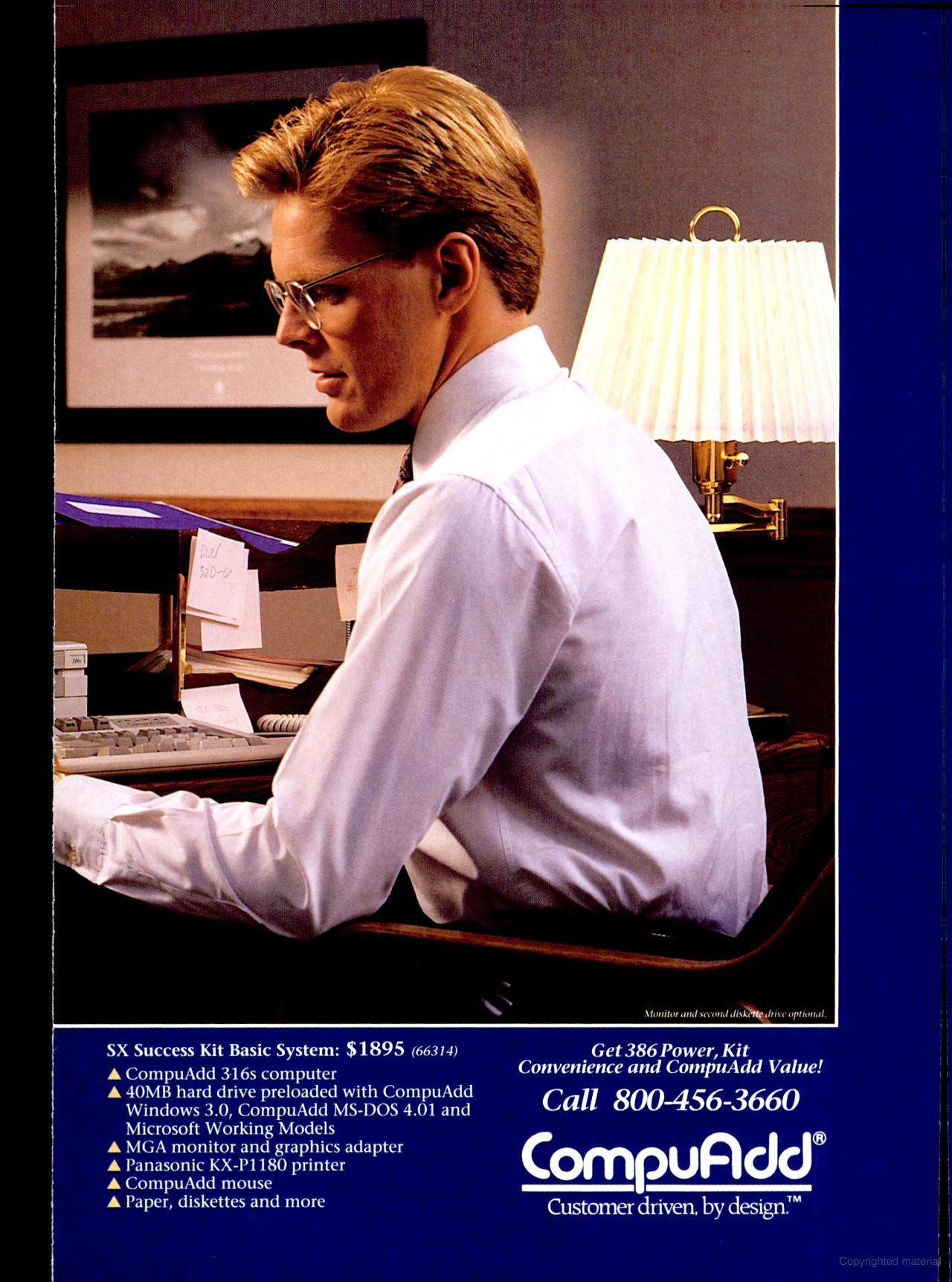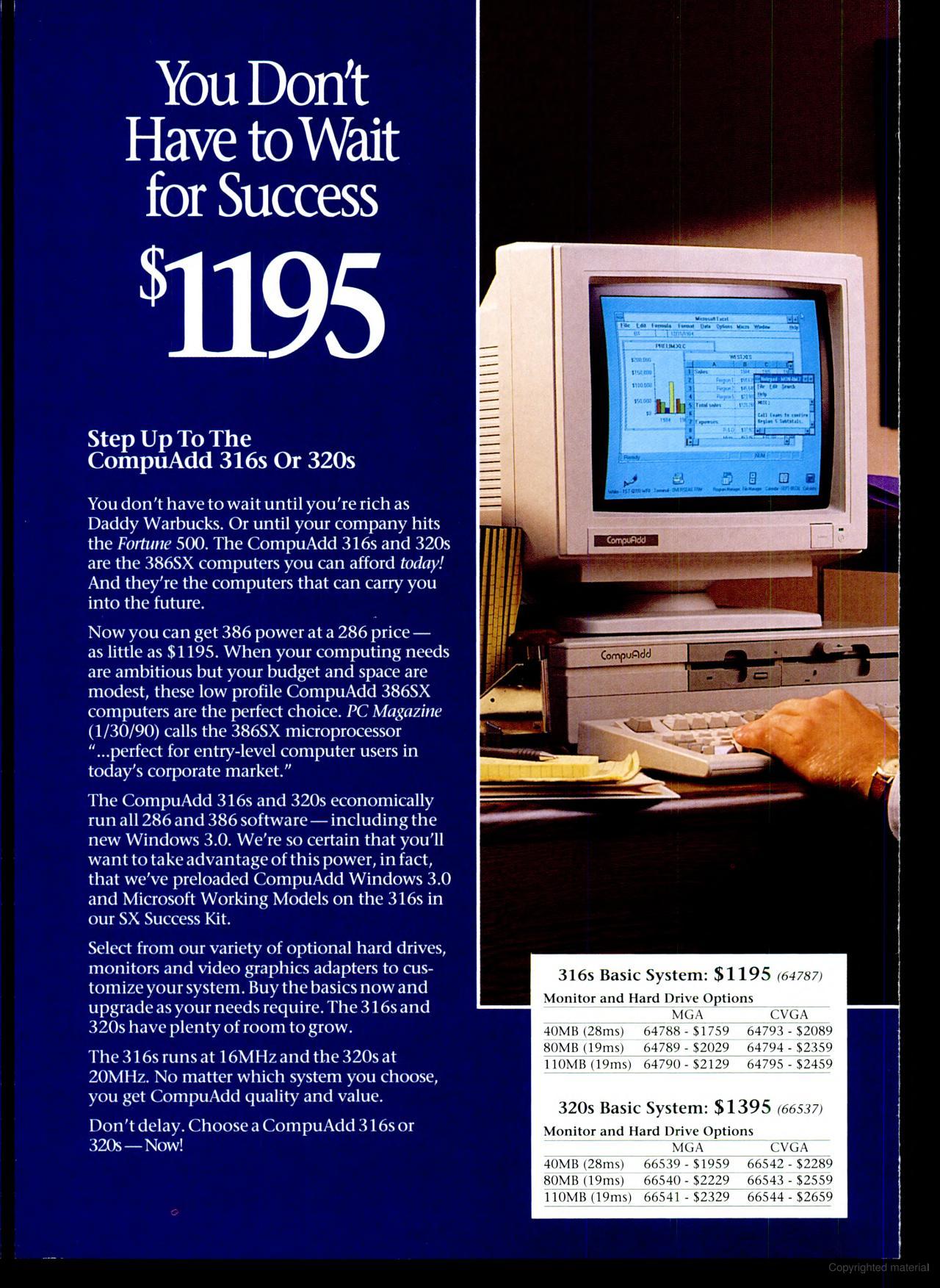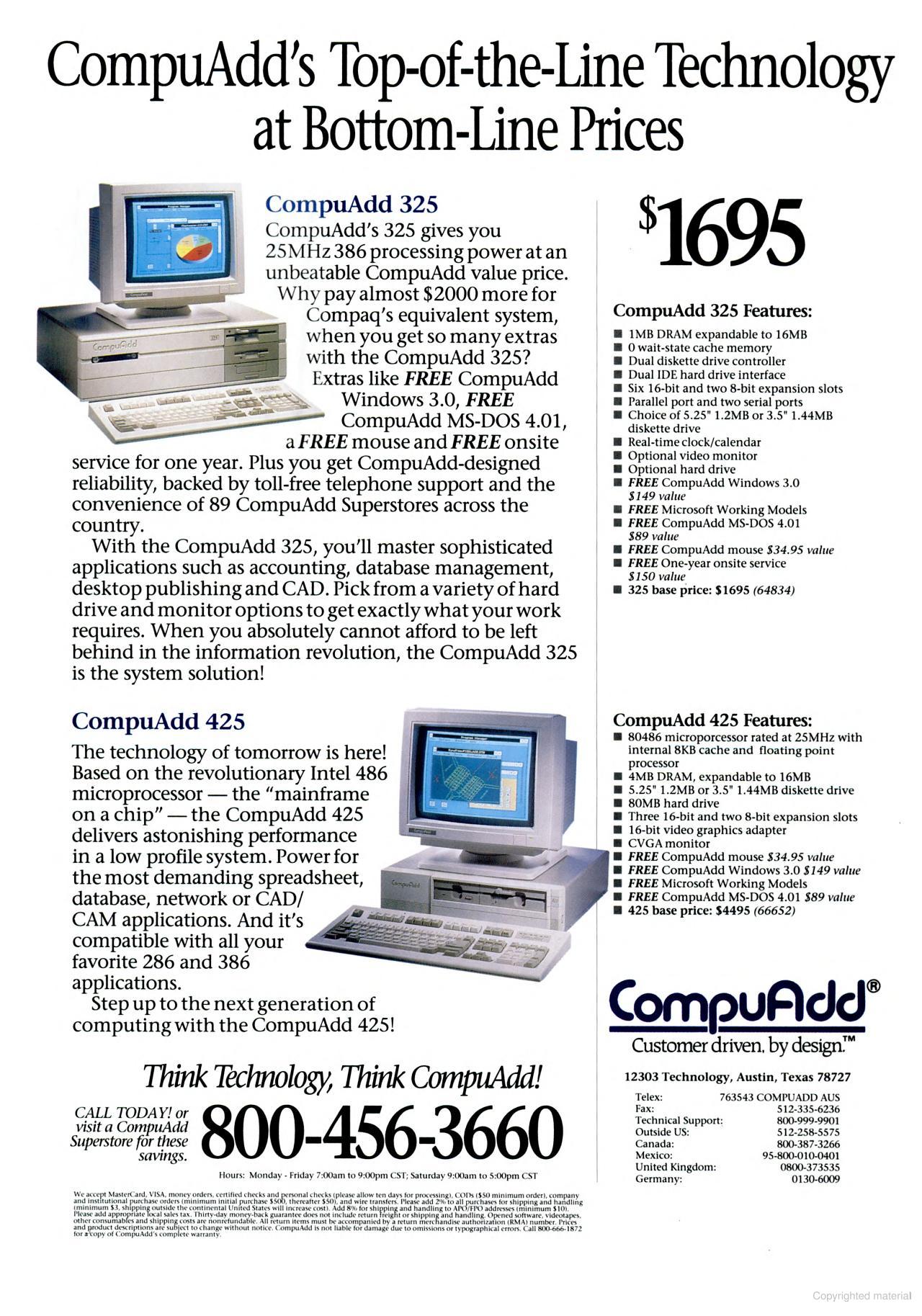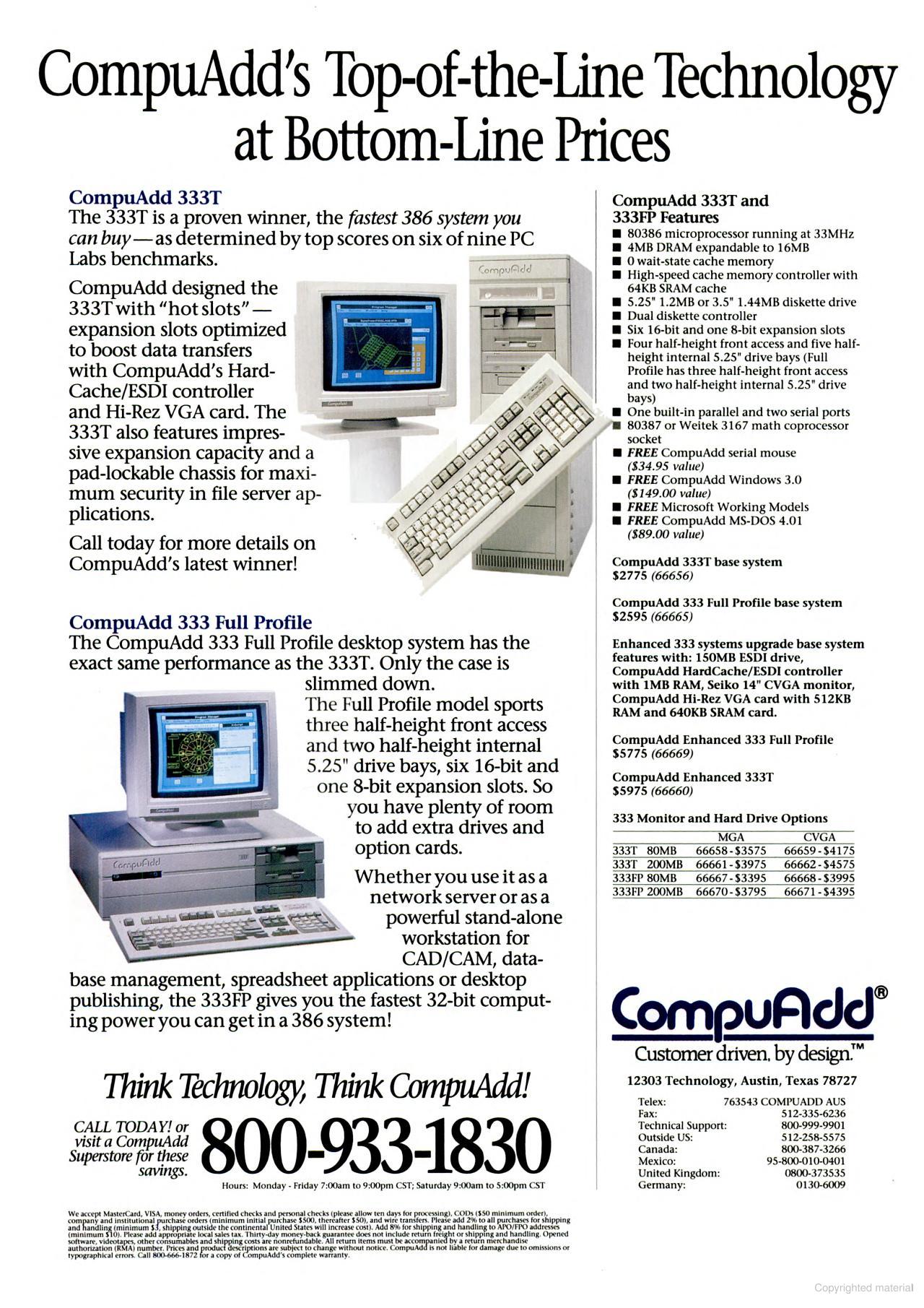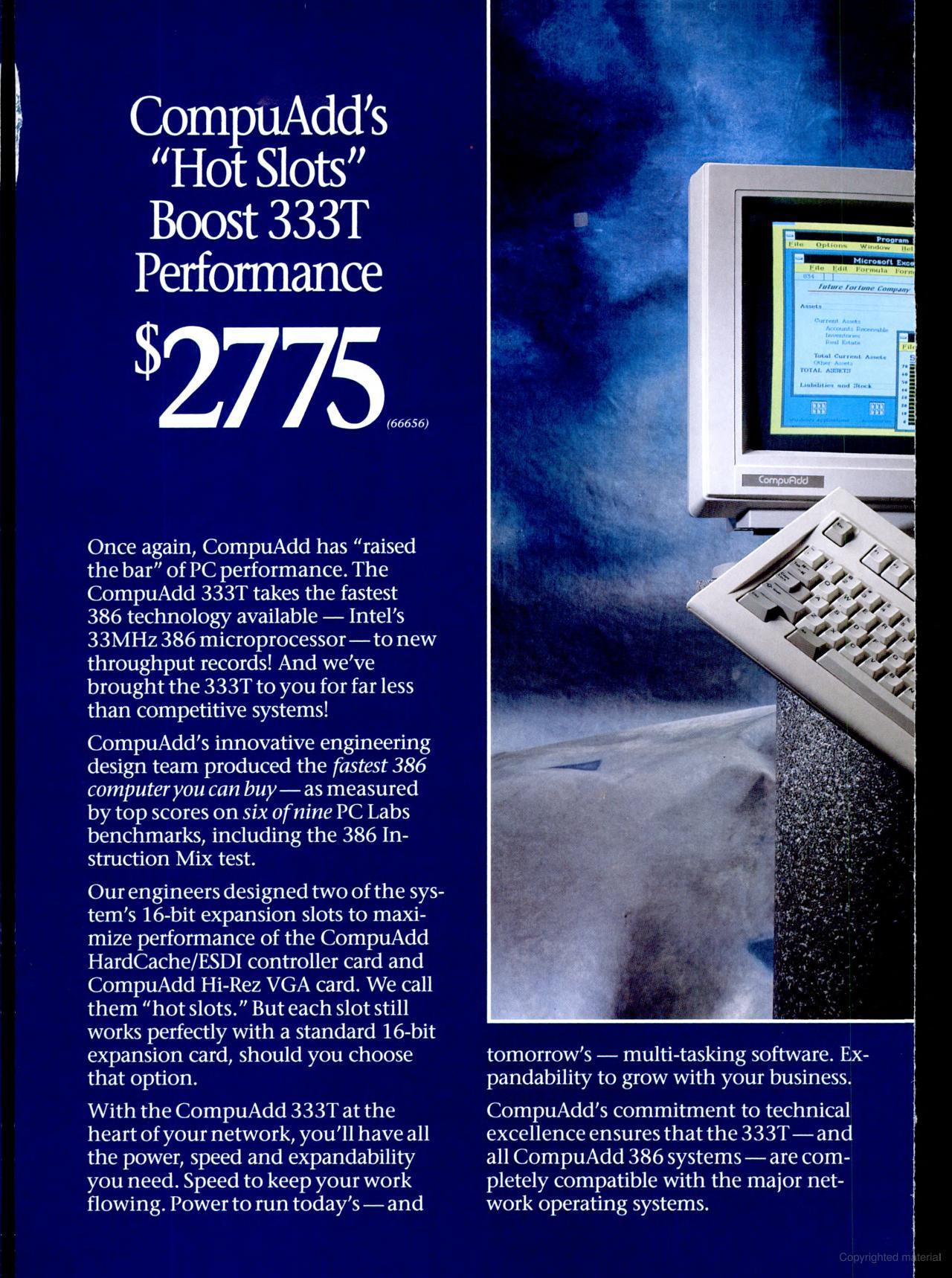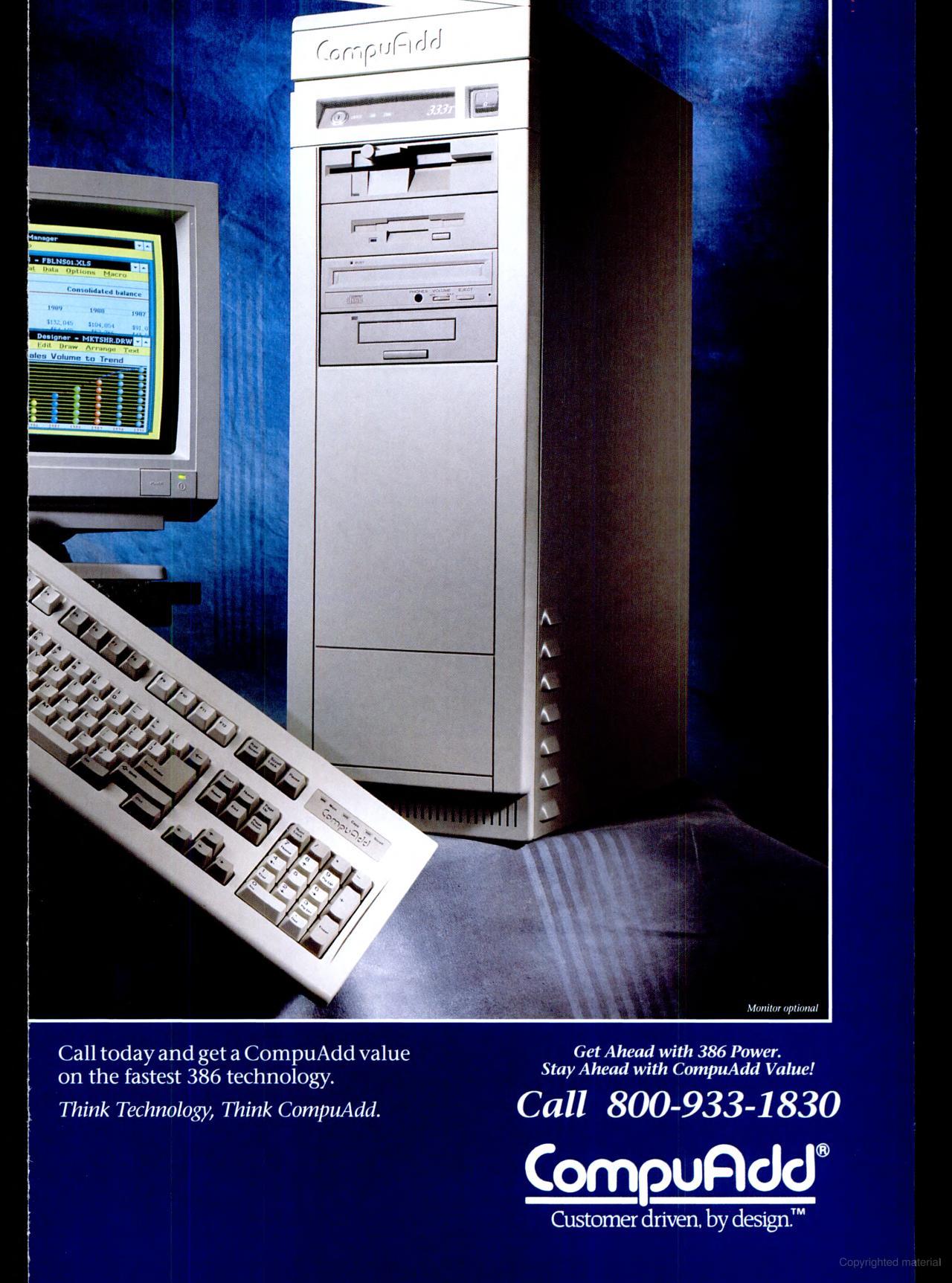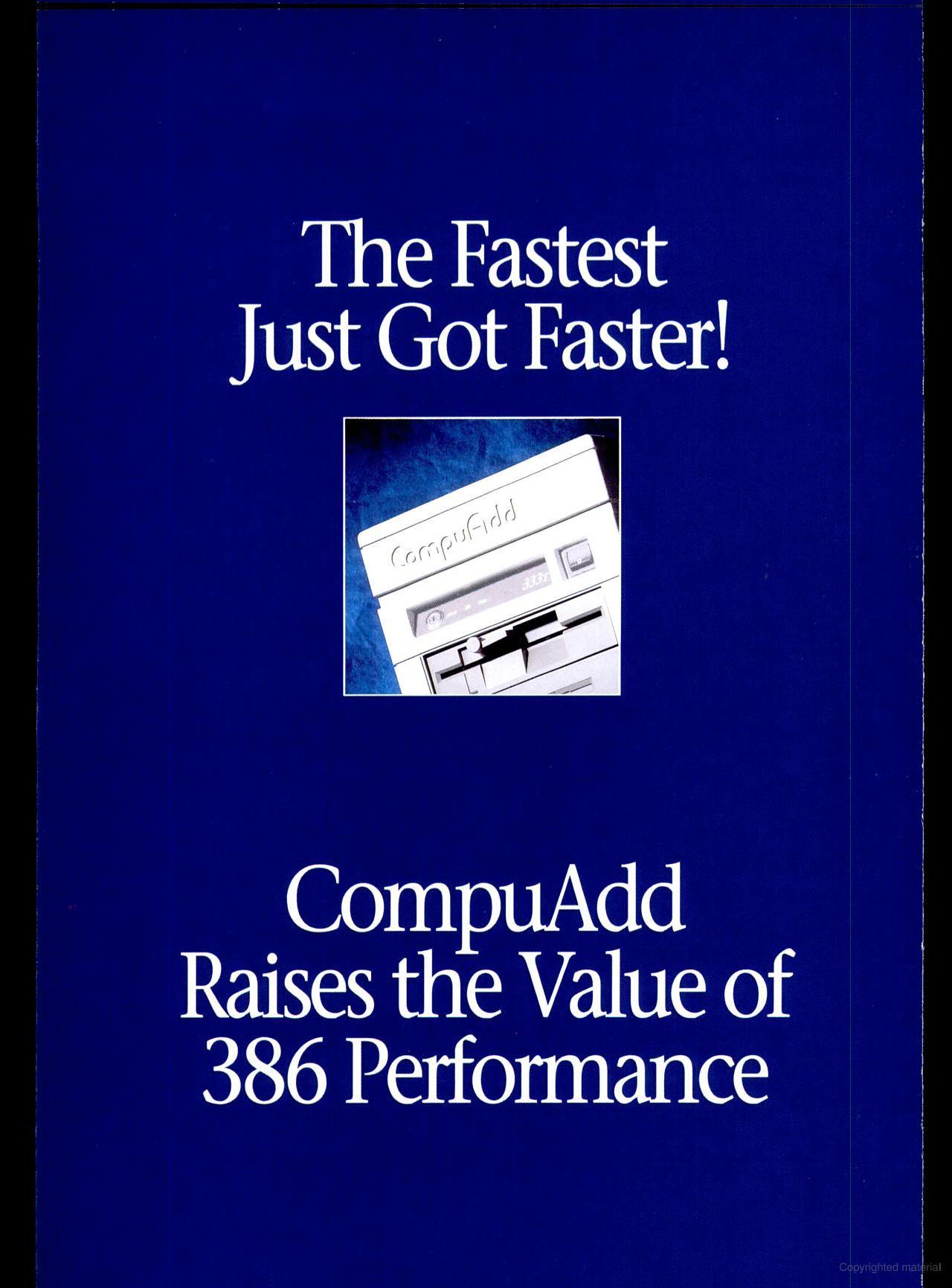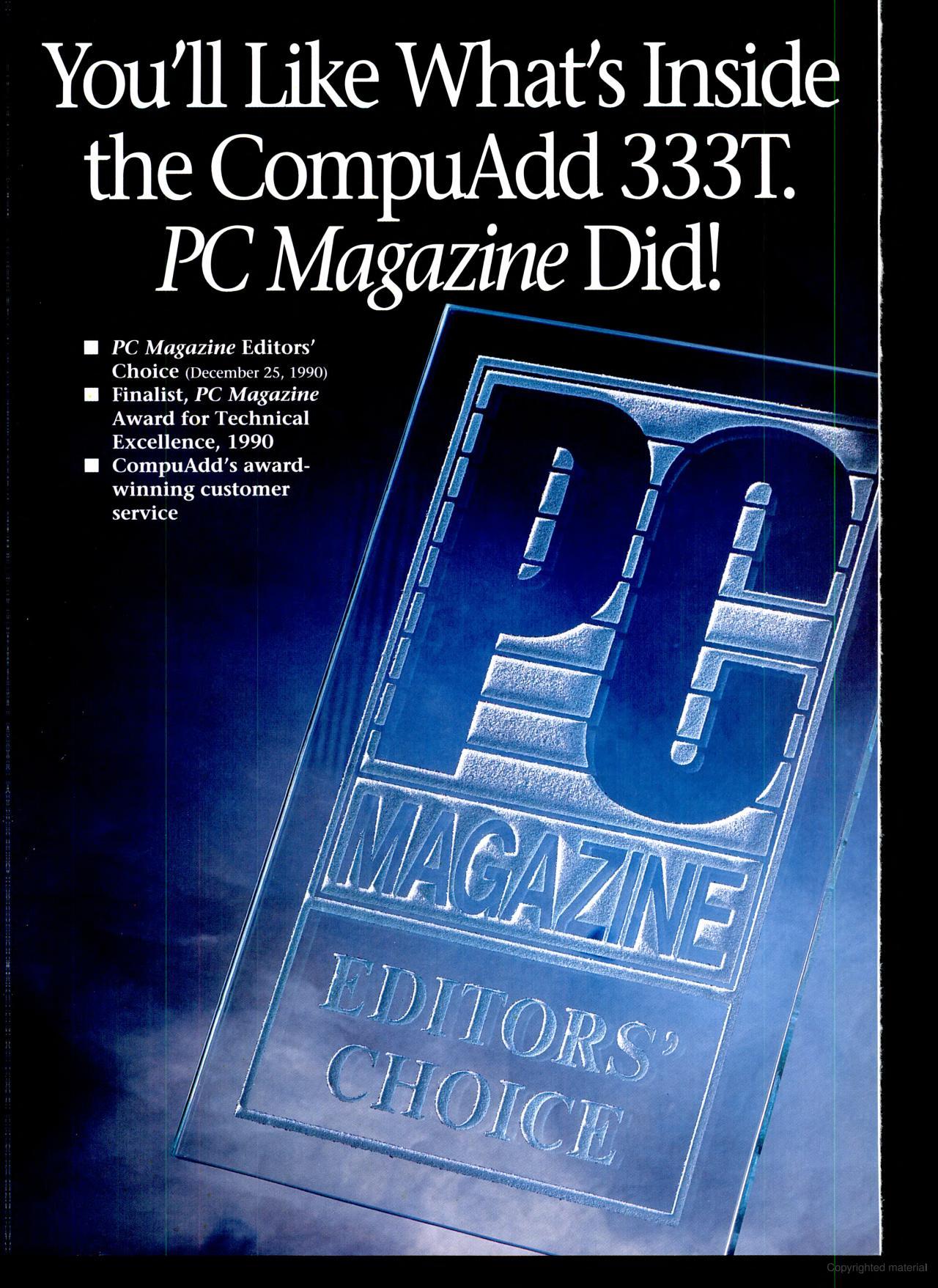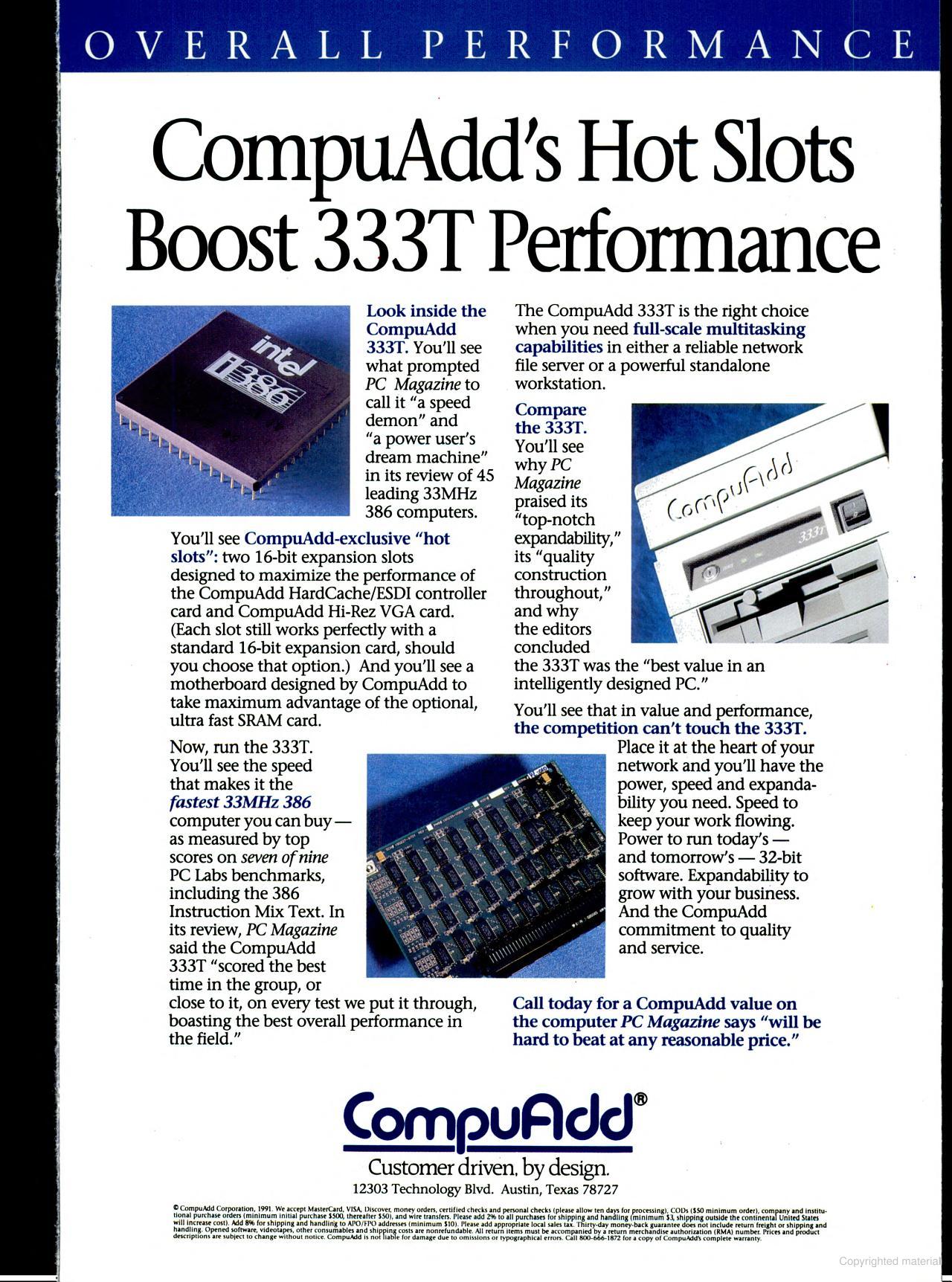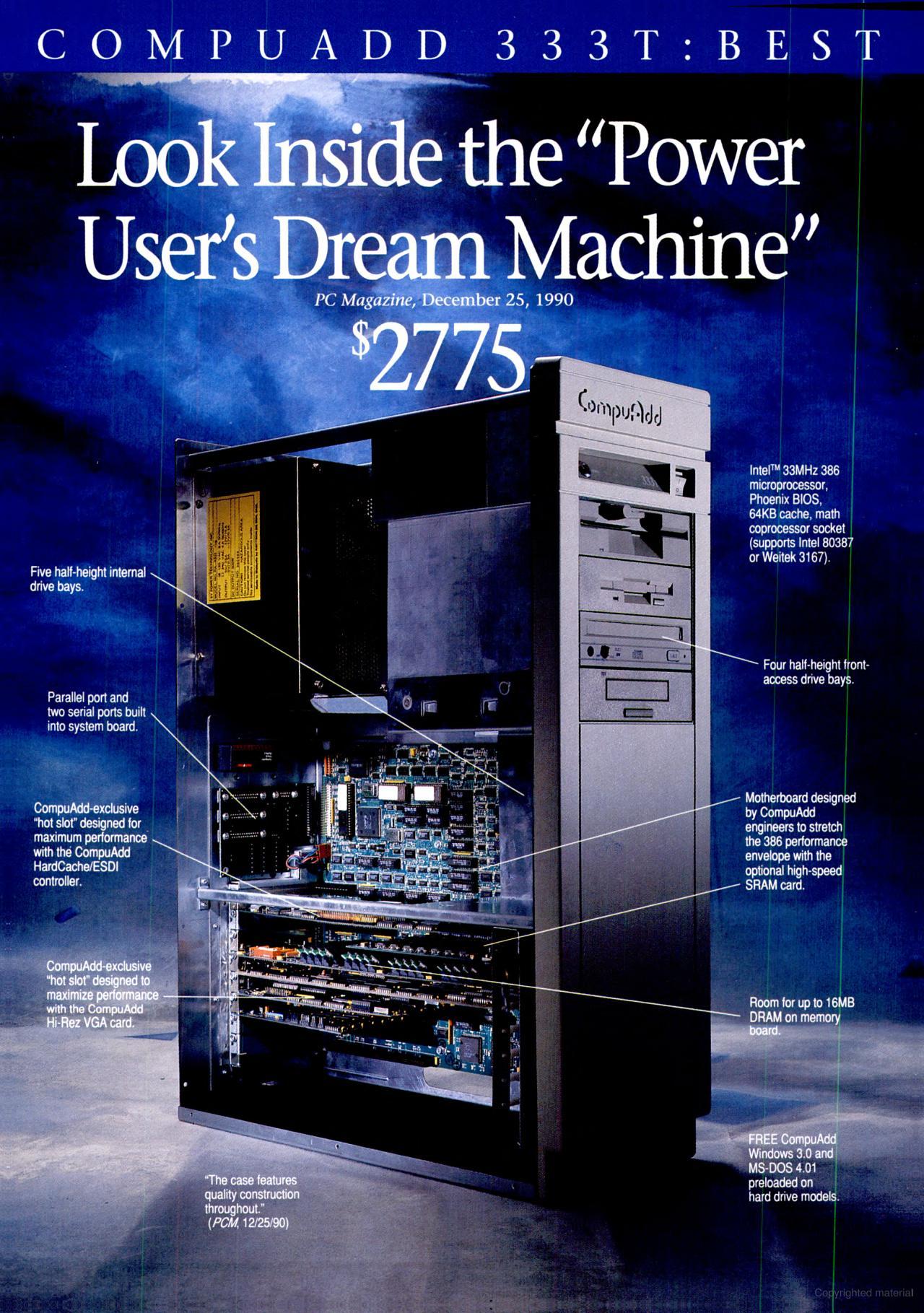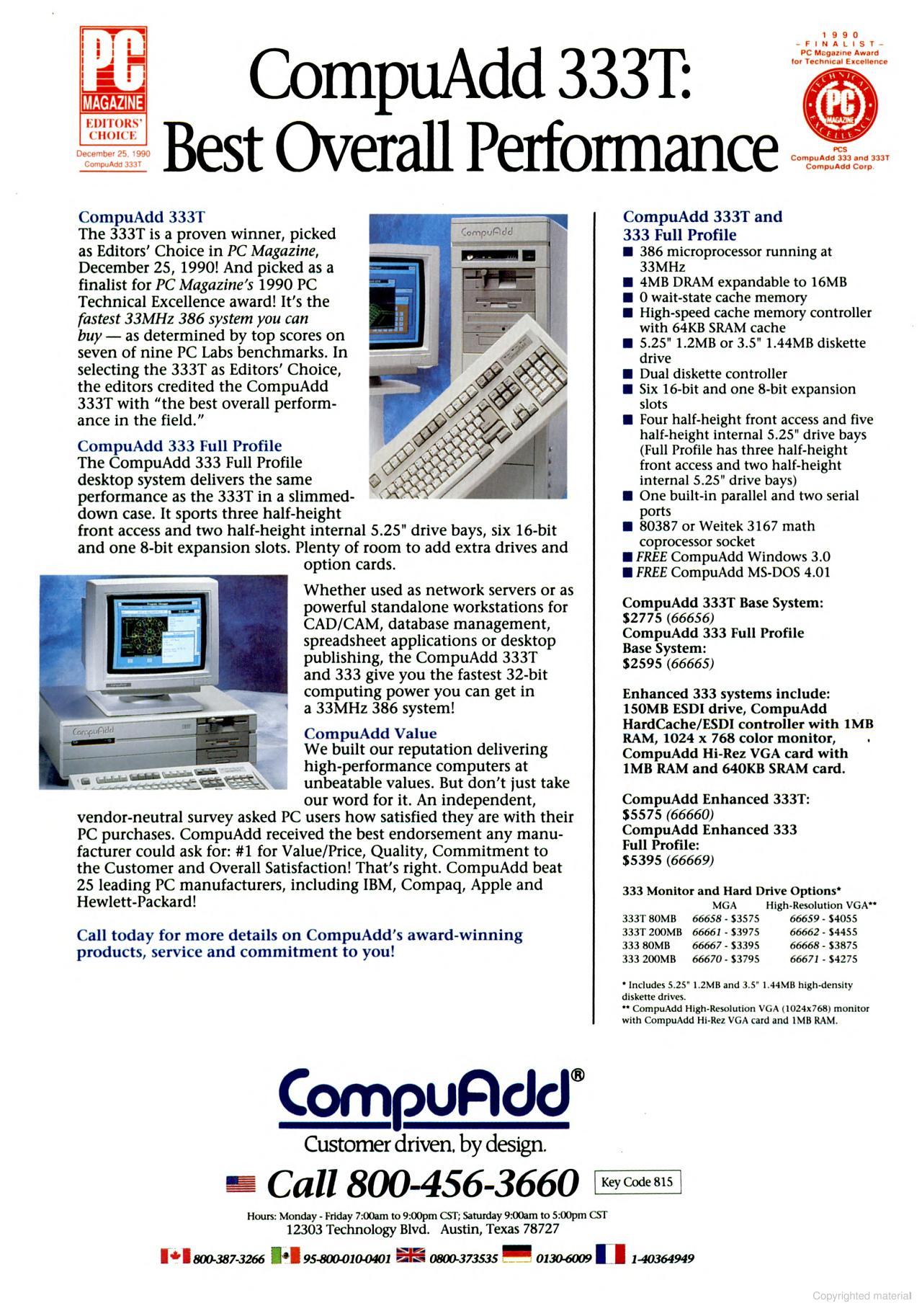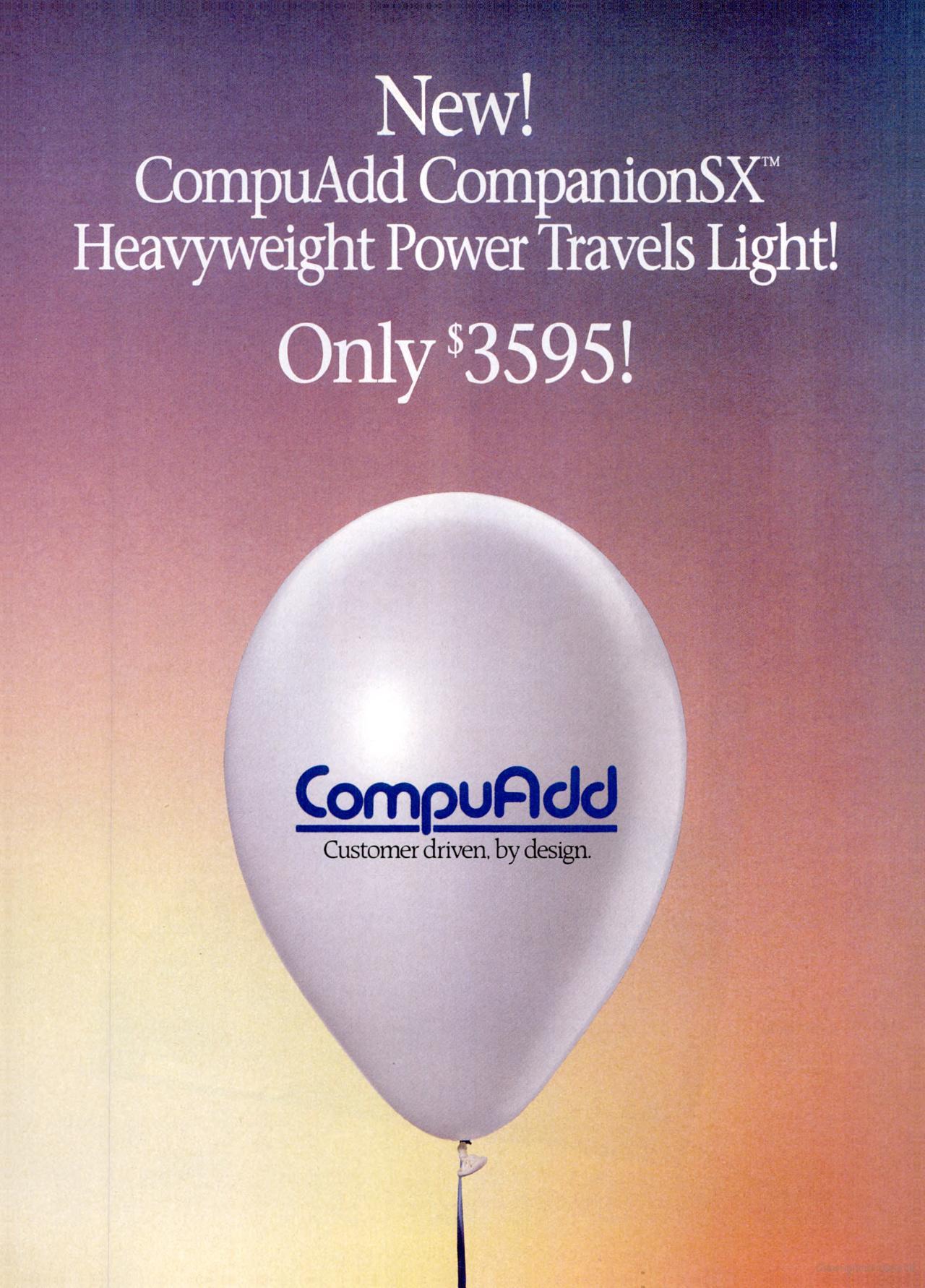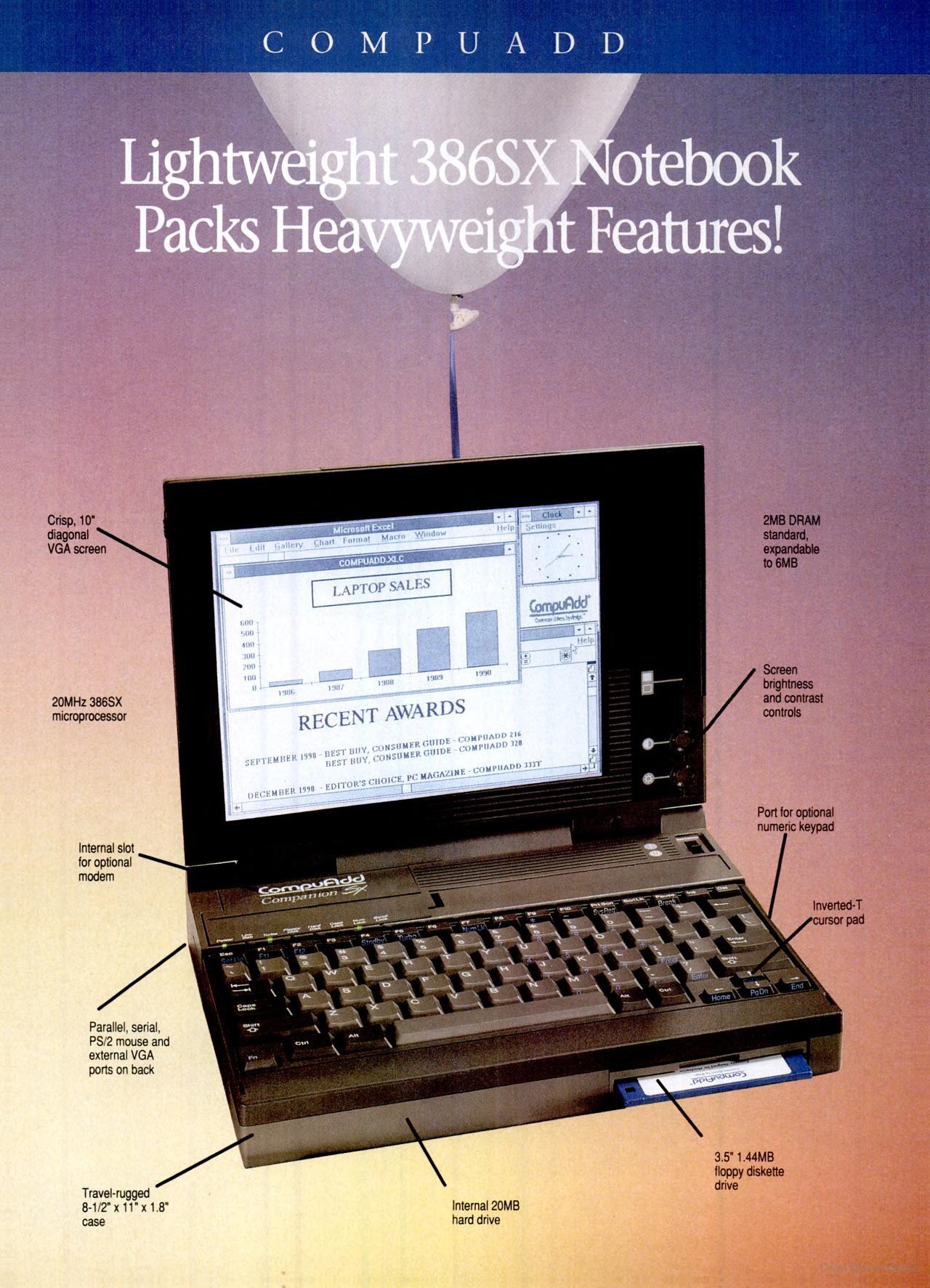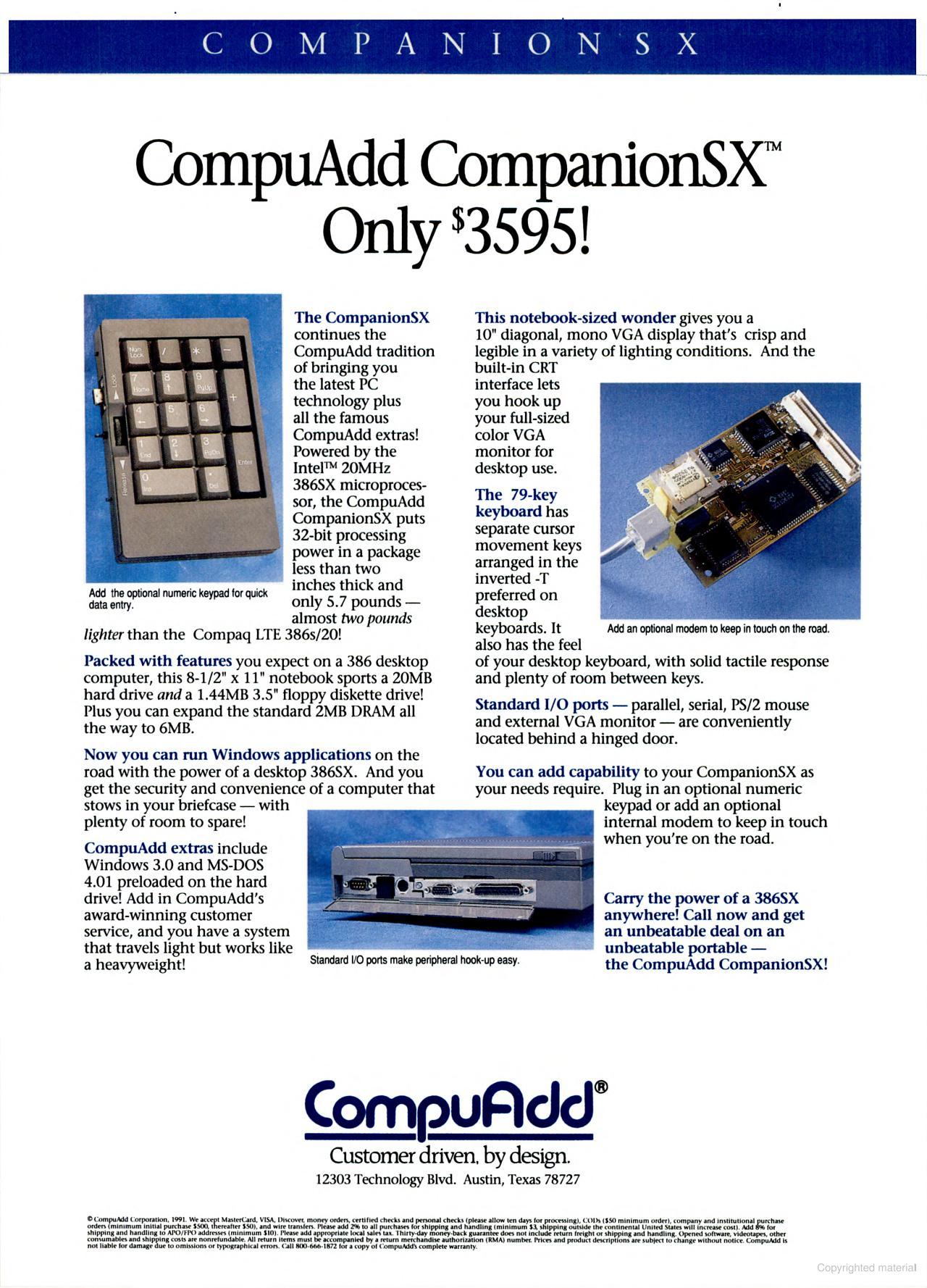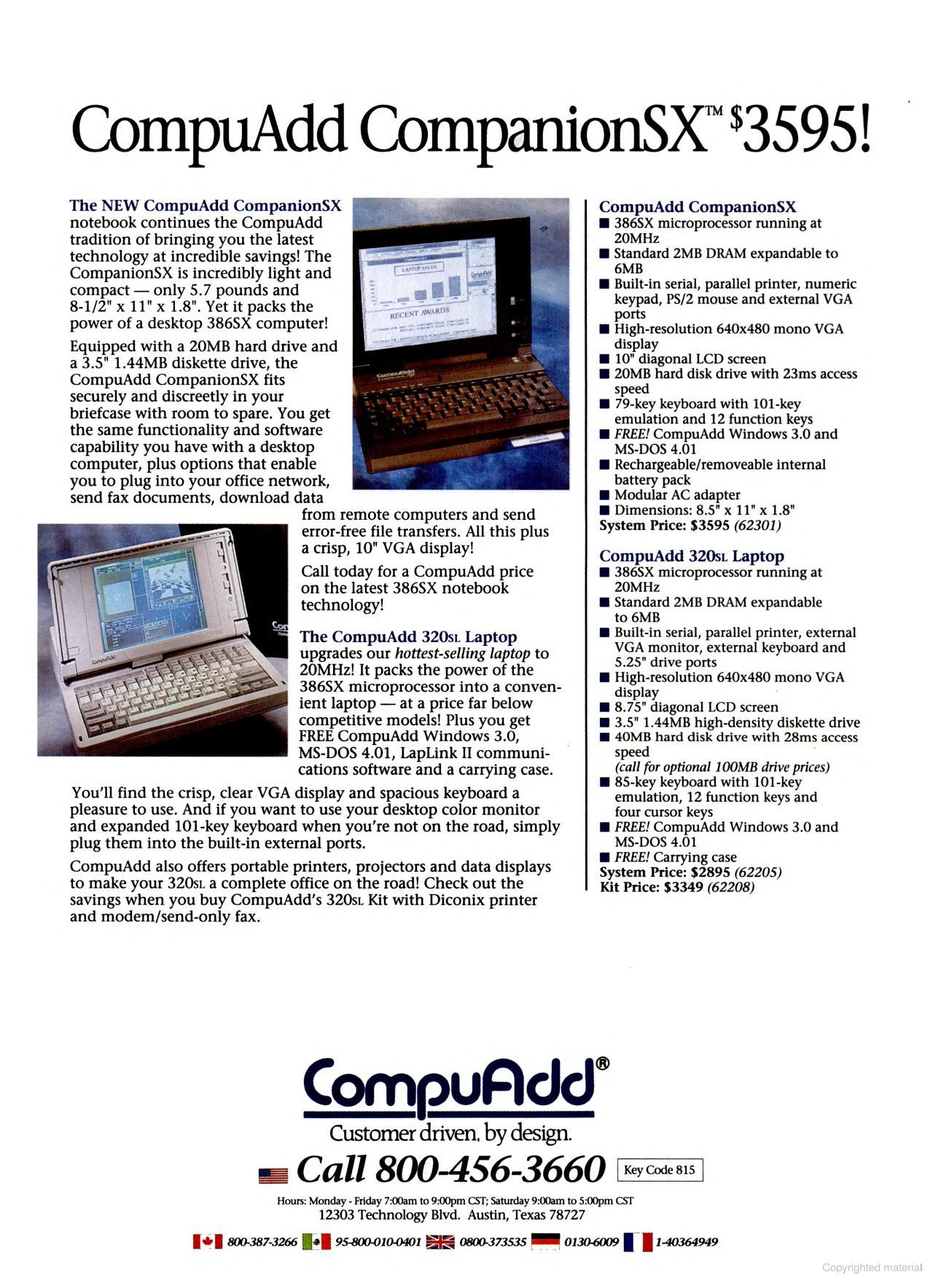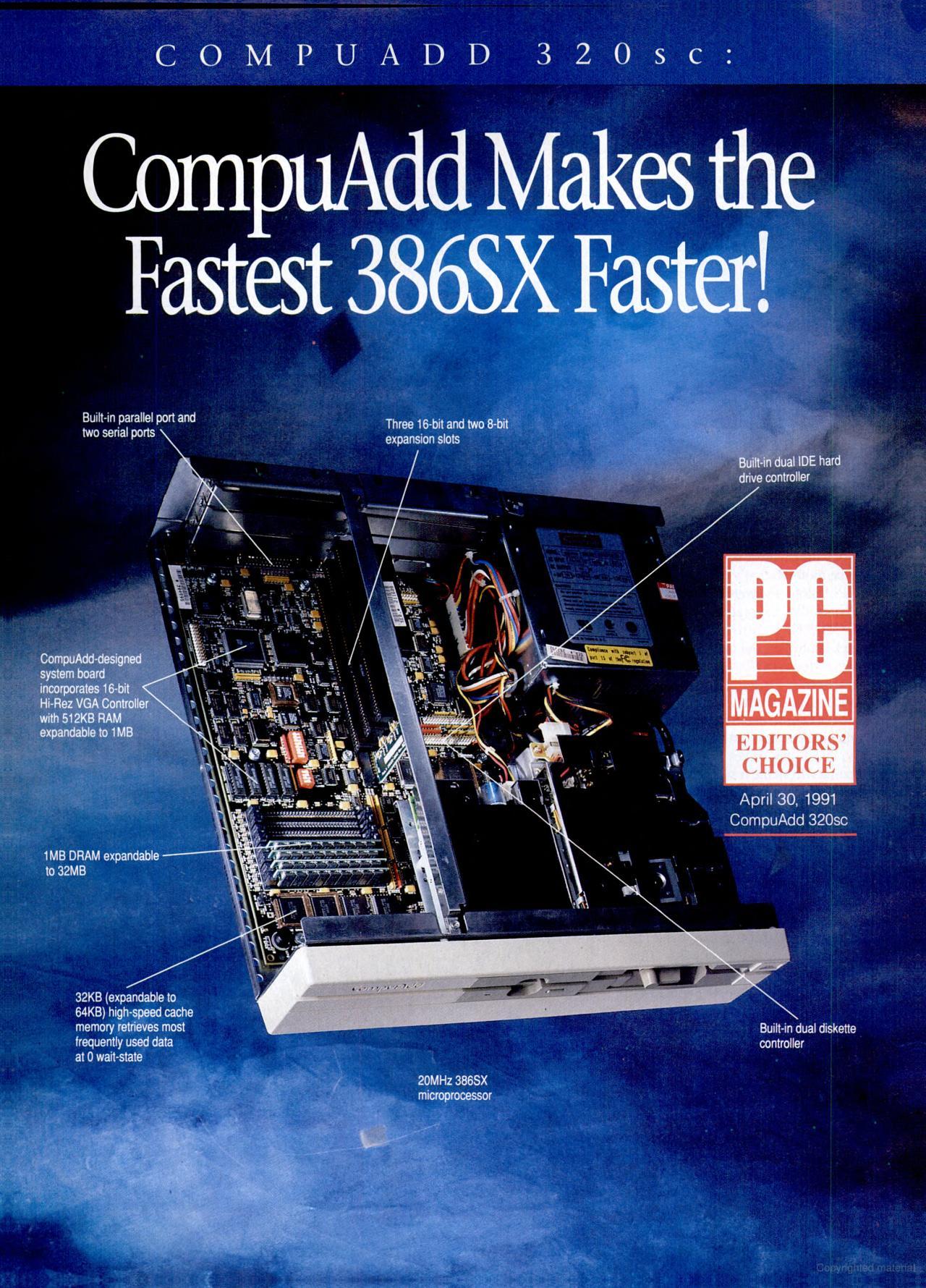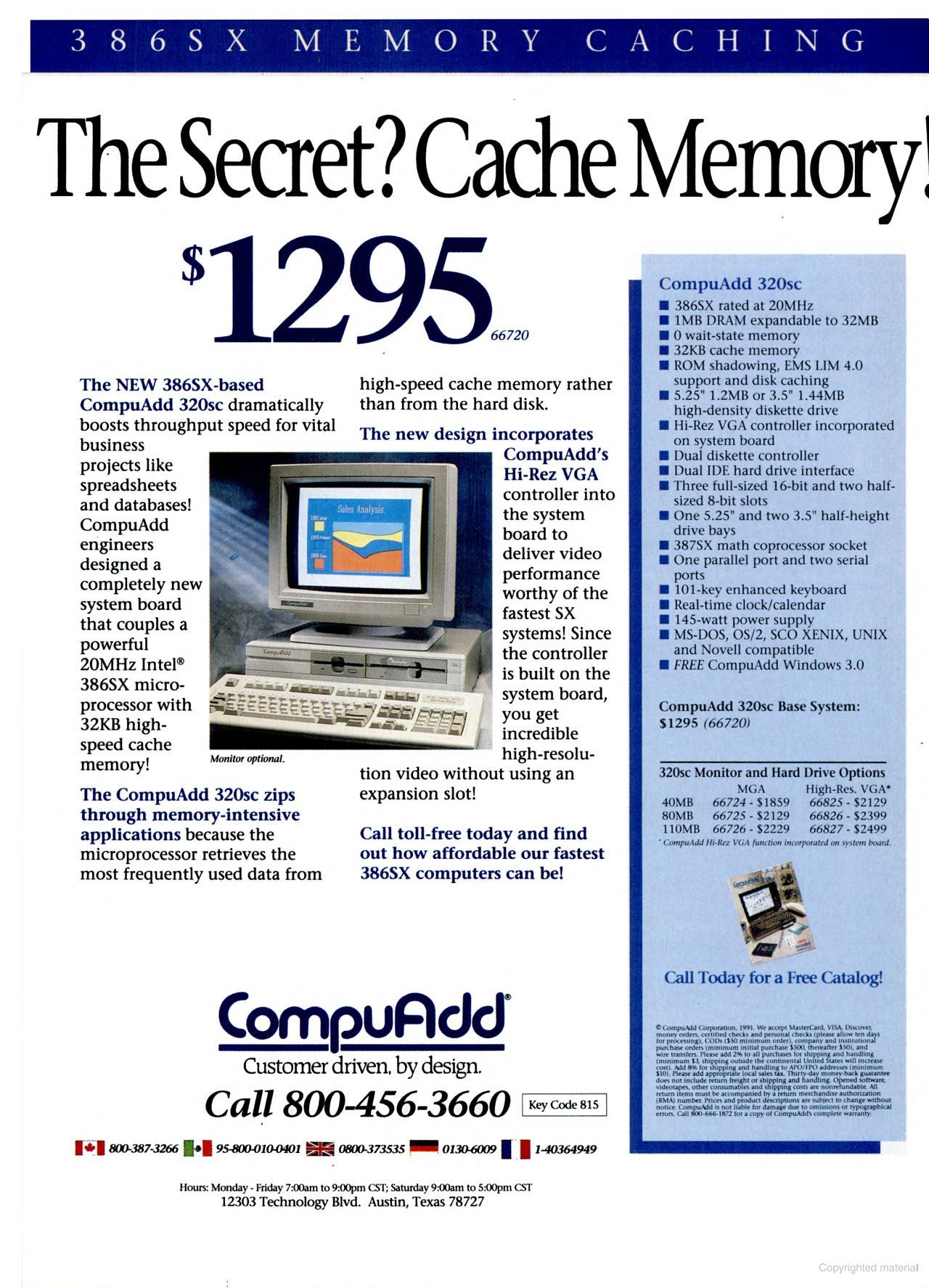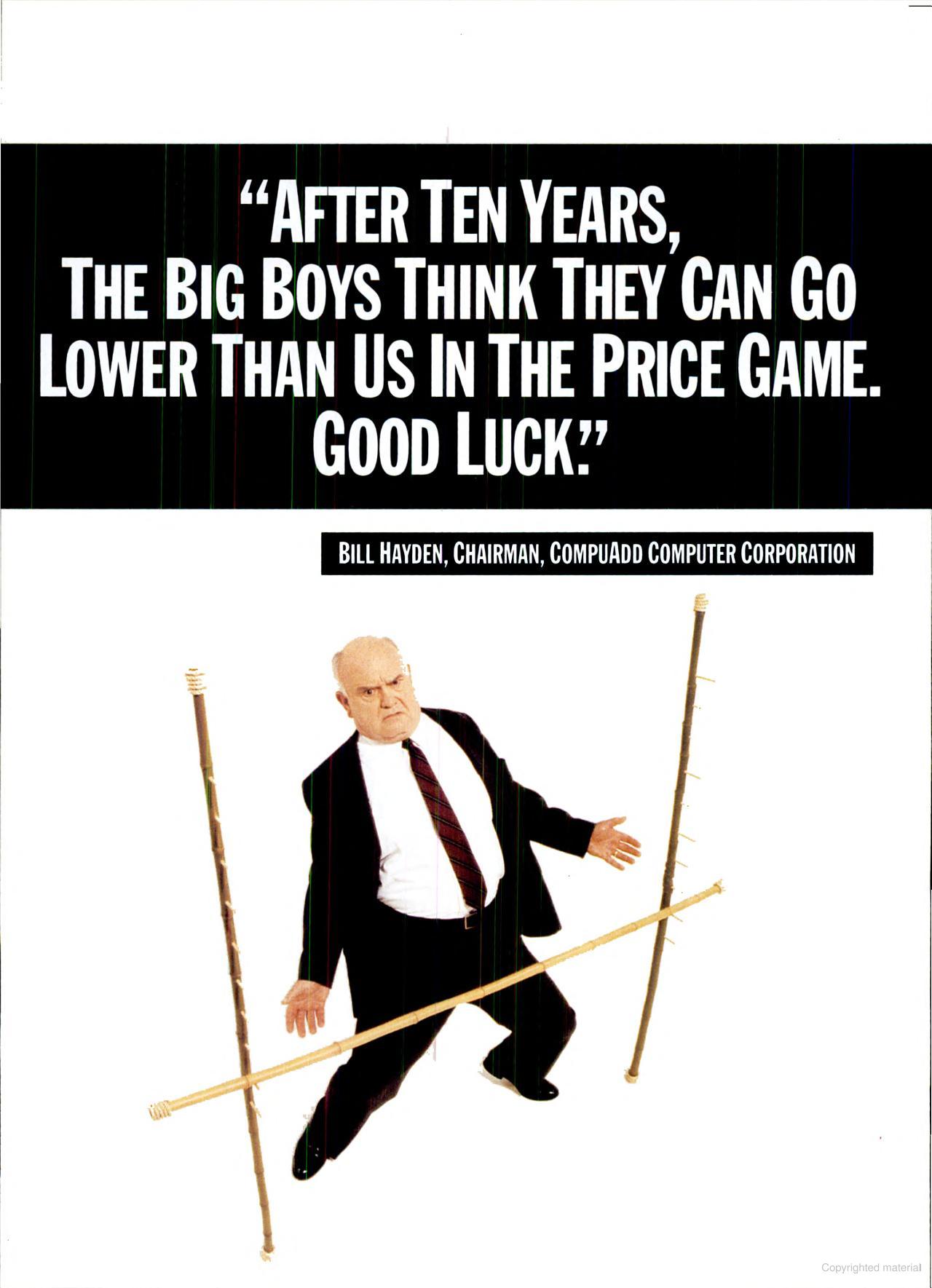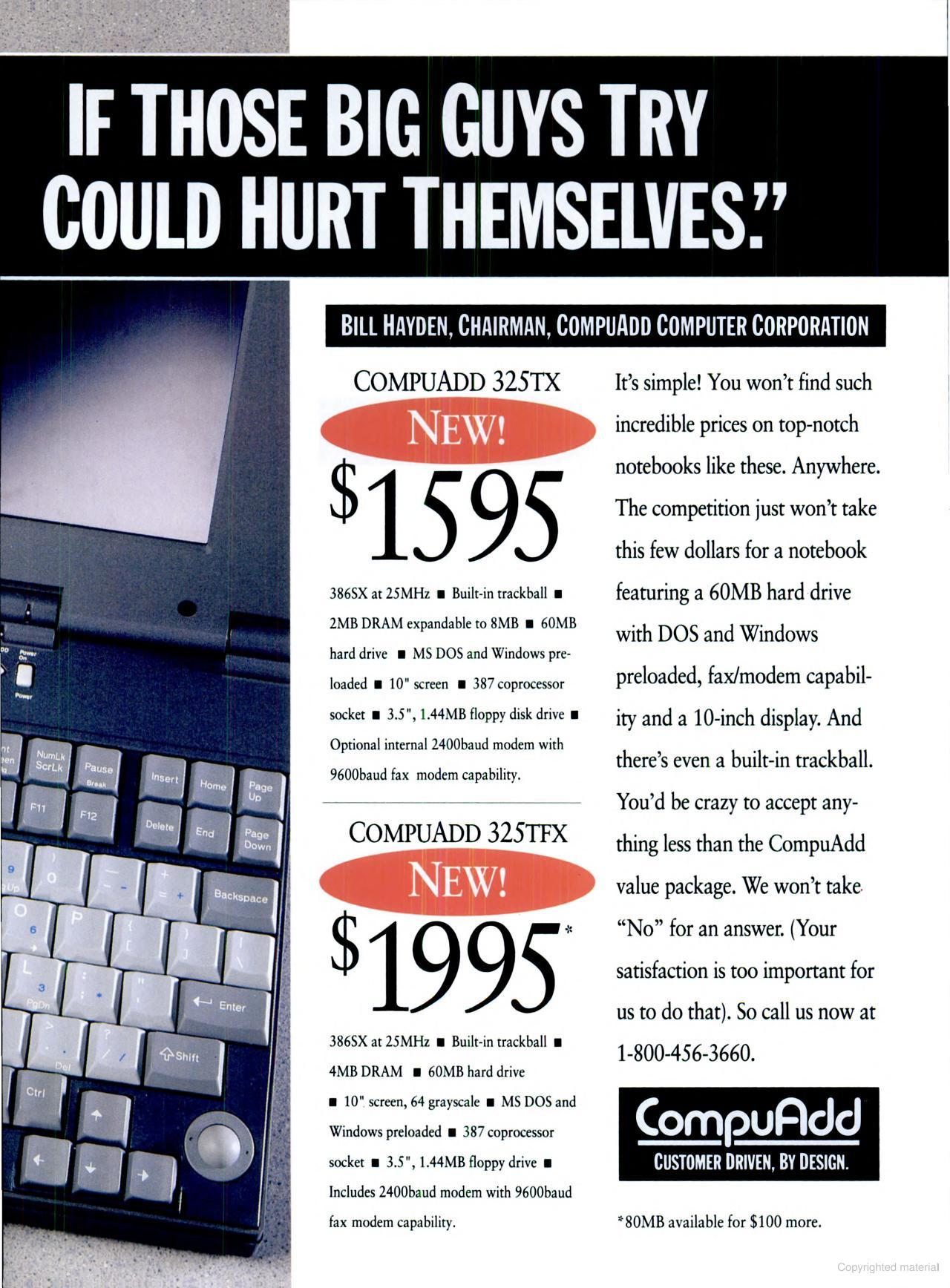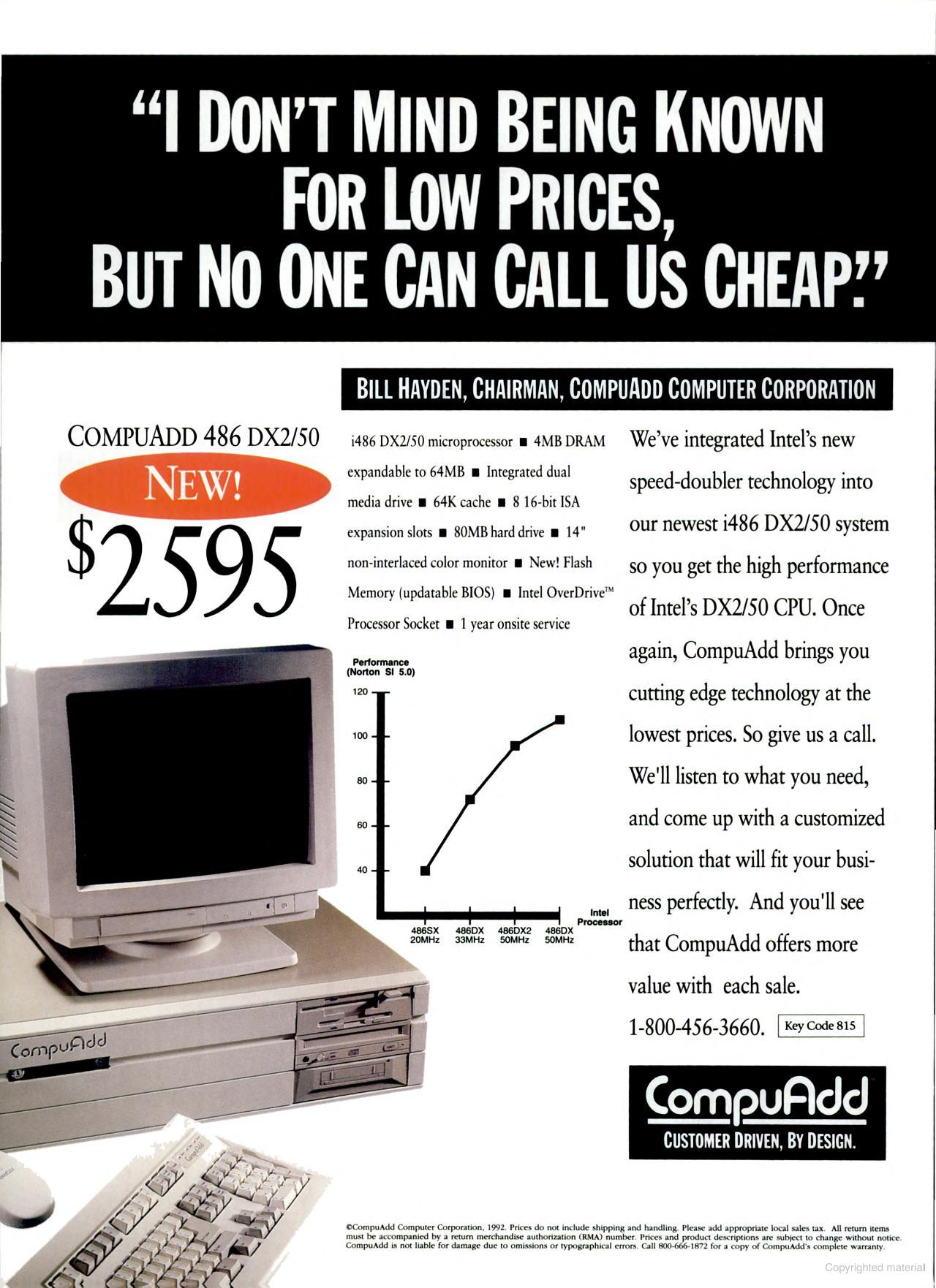 CompuAdd Corporation
CompuAdd Corporation
CompuAdd Corporation were a PC hardware reseller, with the company name chosen due to their planned business to resell add-ons for computers. Started in 1982 by Bill Hayden, they were based in Austin, TX. Later they went into manufacturing their own desktop and laptop PC range.
As with many PC-compatible manufacturers, their business model centered around a balance of price and performance, relying on a sheer quantity of sales at a lower unit margin. This was possible for CompuAdd and many others because the PC market was still made up of numerous manufacturers like IBM, Hewlett-Packard, Compaq, Zenith, and more, who still relied on their premium branding to charge a lot more for their PCs.
1982
Hayden started as a one-man band after saving up $100,000 seed money from selling real estate. He began putting ads into computer magazines, and by the Fall of 1982 his sales receipts totalled $30,000. His operation was being run from his car, so with this money he invested in a small office known as "the cave". Hayden's initial plan for CompuAdd was relatively modest. He hoped to establish a successful mail-order operation that would sell computer equipment made by others at a significant discount and offer superior customer service. His original intention was to keep the product line small and the operation simple.
May 1984
April 1985
July 1986
This is the period in which CompuAdd began putting together their own desktop PCs under their 'Standard Brand Products' line which comprised the low-end Standard PC/XT (4.77 MHz), the Standard Turbo/XT (8 MHz), STD-286 (8 MHz), and the Standard Portable XT machine. These were advertised with a base unit price, upon which you could then pick the graphics card and monitor of your choice/price point. In parallel with their own range, they were also authorised resellers for IBM and Compaq, and as you can see in their adverts below, a cost saving was easy to see.
April 1987
CompuAdd expanded their 'Standard Brand Products' line in April 1987. Their 4.77 MHz XT and the Portable were removed and the Turbo/XT model was replaced with a single Turbo-88 (8 MHz), though the specs were the same with just 256 KB of RAM as standard. The STD-286 (8 MHz) from last year was replaced with the Standard-286 II (also 8 MHz), which was now zero wait-state, but came with only 512 KB of RAM as standard compared to its predecessor's 640 KB. I would assume this was simply to keep the big font sticker price that first caught your eye on the advert to be as low as possible. They did of course offer memory upgrades which I'm sure most buyers opted for. Two faster 80286-based PCs were introduced: the Standard-286/10 and Standard-286/12, both of which also came with 512 KB of RAM.
July 1987
Their PC range comprised the Standard-286, which came in 8, 10 and 12 MHz flavours. A little odd in that in April this year, their advertisements called these the 'Standard-286 II' range - perhaps this was just to simplify the naming of their 286 range.
February 1988
In 1988, CompuAdd opened its first retail stores. February 1988 saw the introduction of CompuAdd's new Standad 386/16 PC added to the range, at $1,795 without monitor.
April 1989
In early 1989 CompuAdd had 15 stores for direct retail sales, and by the end of the year they had expanded to 70-80 stores, but also continued to sell mail order via PC magazines with multi-page adverts. In mid-1989, CompuAdd's PC range comprised the 286/20, 386/20, and 386/25, all in desktop form factor.
August 1989
The Turbo/8 and 286/10 of last year were both dropped, but the Turbo/10 was still being advertised as their budget desktop PC. Moving up the performance ladder, the 286/12 and 286/20 remained as the mid-range offerings, with the 386/16 of last year now complemented by the new 386/20 and 386/25 machines in the premium price bracket. All 286 and 386 PCs were zero wait-state, and the top two both came with 32 KB of onboard cache. The 286-12 interestingly only got 512 KB (even their Turbo/10 came with 640 KB) of RAM, but the 286-20 and up came with 1 MB. Pricing stayed in the same format where the base price of the PC would be shown in a large font and you could then choose your own graphics and monitor choice from MGA, EGA or VGA (note, no CGA option). Hard disk options were none or 30 MB for the Turbo/10, a 20 or 40 MB one for the 286 range, and a 40 or 80 MB one for the 386 range. All these desktop PCs came in the same large desktop case with similar dimensions to the IBM 5150/5160.
October 1989
In October 1989, CompuAdd launched a brand new range of desktop PCs, consisting of a single XT model (the CompuAdd 810), three 286 PCs with the CompuAdd 212, CompuAdd 216 and CompuAdd 220, and four 386 PCs with the CompuAdd 316s (a 386SX), and 386DX-based CompuAdd 316, CompuAdd 320 and CompuAdd 325. What was new for the company was that these were designed and engineered from the ground up rather than using third-party motherboards and cases.
Again, the 286 range only came with 512 KB of RAM despite the fact the lesser NEC V20-based CompuAdd 810 came with 640 KB. The adverts aren't clear, but it's likely all the 386DX-based PCs came with 1 MB of RAM.
November 1989
At the end of 1989, CompuAdd still had their 10 MHz XT machine at the lowest end, the CompuAdd 810, followed by their 80286 range which comprised the CompuAdd 212 (12 MHz) and CompuAdd 216 (16 MHz), and their 80386DX range which was made up of the CompuAdd 320 and CompuAdd 325. I'm not sure if they dropped the 220 model, or if it just wasn't heavily advertised.
They also had their own branded hardware, including the HardCache ESDI Controller, VGA adapter and a mouse. These were not even rebranded per-se, just sold as the 'CompuAdd x'.
December 1990
At the end of 1990, we saw the reintroduction of a portable, or rather, a laptop being sold by CompuAdd in the form of the 316SL laptop, bundled with Windows 3.0, MS-DOS 4.01 and more. The 325 was now complemented with the top-of-the-line 425 model (a 486DX-25 desktop), the 333T (386DX-33 in a tower case), and the 333FP "Full Profile" (slimmed down desktop case version of the 333T).
May 1991
Having started selling high-end full tower PC systems in the prior year, the focus in 1991 was to continue that while also pushing more into the notebook market. The new CompanionSX ran a 386SX-20 with 2 MB of RAM and a 20 MB hard disk. The 316SL was also now complemented with the 320SL. Both offered a mono VGA display.
The 333T ("T" for tower), and the 333 were both 386DX-33 systems with 4 MB of RAM and a 64 KB cache. A 333T Enhanced and 333 Enhanced were also available which also included a 150 MB ESDI hard disk and controller with a 1 MB cache, 1024 x 768 colour monitor with CompuAdd Hi-Rez 1 MB SVGA card and a 640 KB SRAM card.
June 1992
By early 1992, sales had almost doubled to $524 million, but because the company was facing competition from the new superstores, only half of its 110 retail outlets were profitable. To compound matters, profits from mail order sales couldn't make up the difference, since Dell was eating away at their mail order business.
In mid-1992, CompuAdd still sold both desktop and notebook computers, though the latter was the bigger sales push. Their notebook range comprised the 325TX and 325TFX, both of which ran a 386SX-25 CPU. The 325TX came with 2 MB of RAM and a 10" [gas plasma?] screen while the 325TFX came with 4 MB of RAM, a 10" LCD display capable of 64 greyscales, and a built-in 2400 baud modem. Another advert in the same period showed off their new CompuAdd 486DX2/50 with its 4 MB of RAM and 64 KB cache.
1993
In 1993, Hayden chose to close all 110 of his CompuAdd store locations due to falling sales in that part of the business and financial overreach that had caused the company's viability to be called into question. The company would focus instead on direct [mail order] sales. It was in June of this same year that they filed for Chapter 11 bankruptcy protection. They came out the other side of bankruptcy in November of this year, but later that month Hayden stepped down as CEO, being replaced by Richard Krause, the company's president and Chief Operating Officer.
In 1993, CompuAdd posted sales of $233 million compared to Dell's $2.9 billion. It had 300 employees.
1994
In July 1994, CompuAdd was acquired by a Philadelphia investment syndicate for an undisclosed sum.
